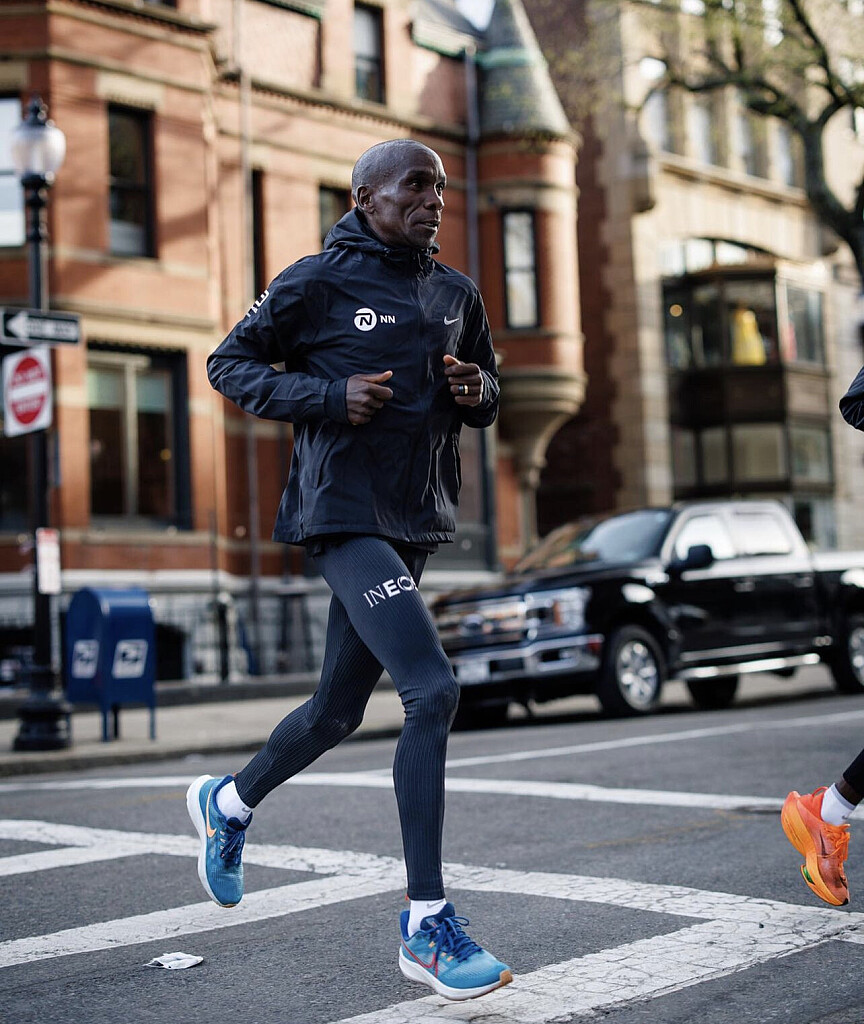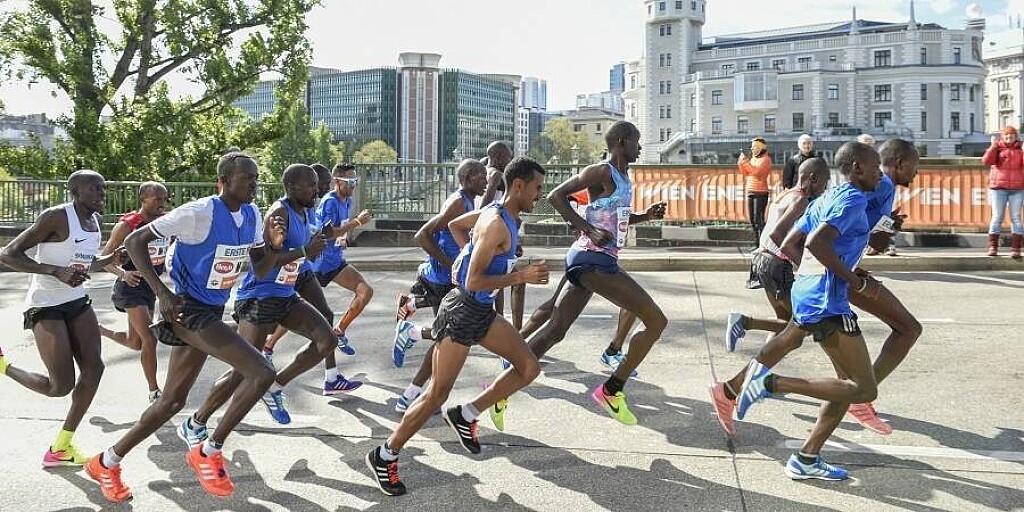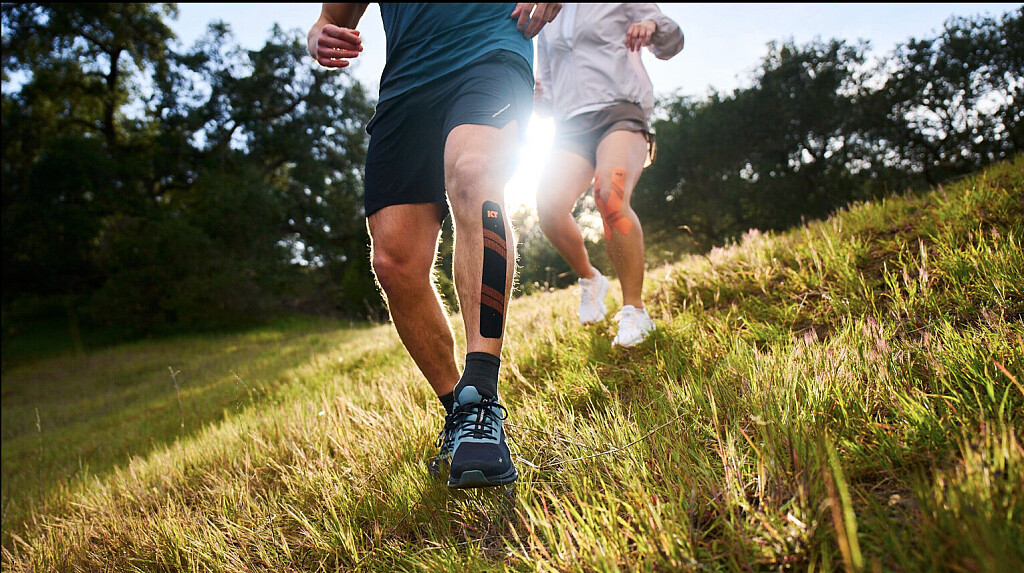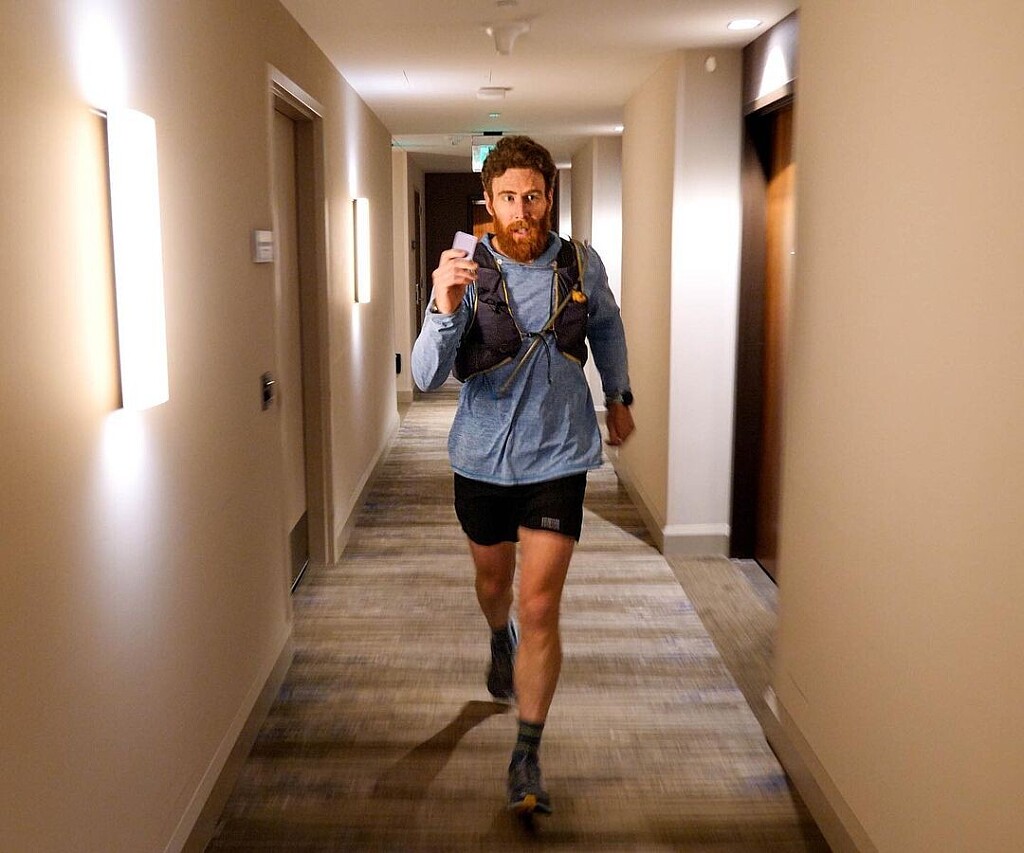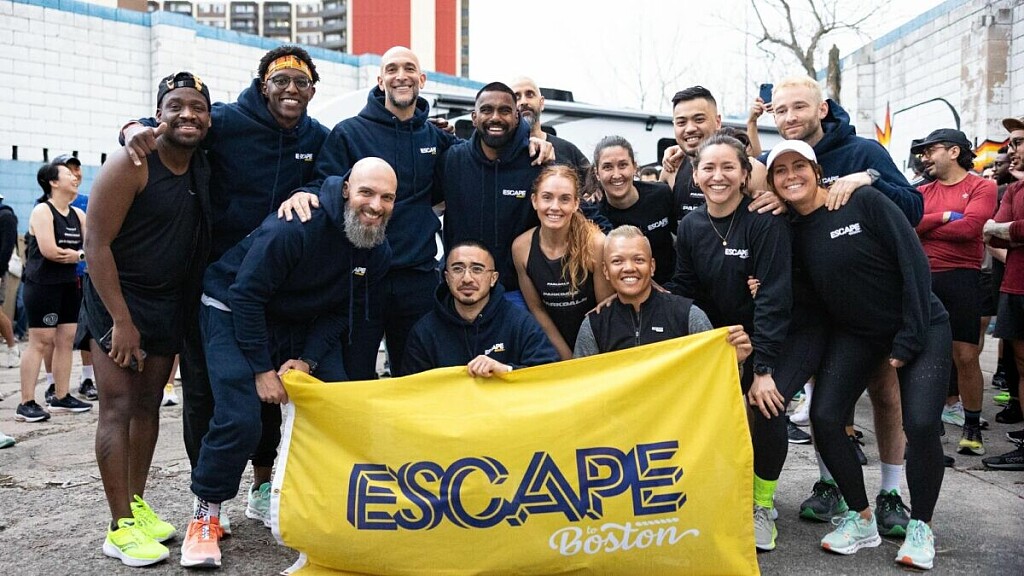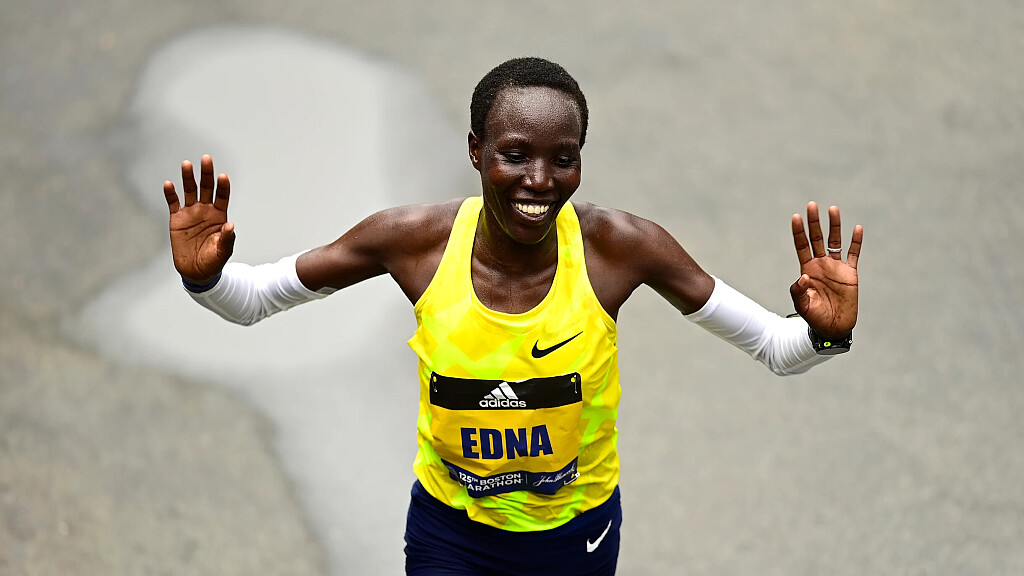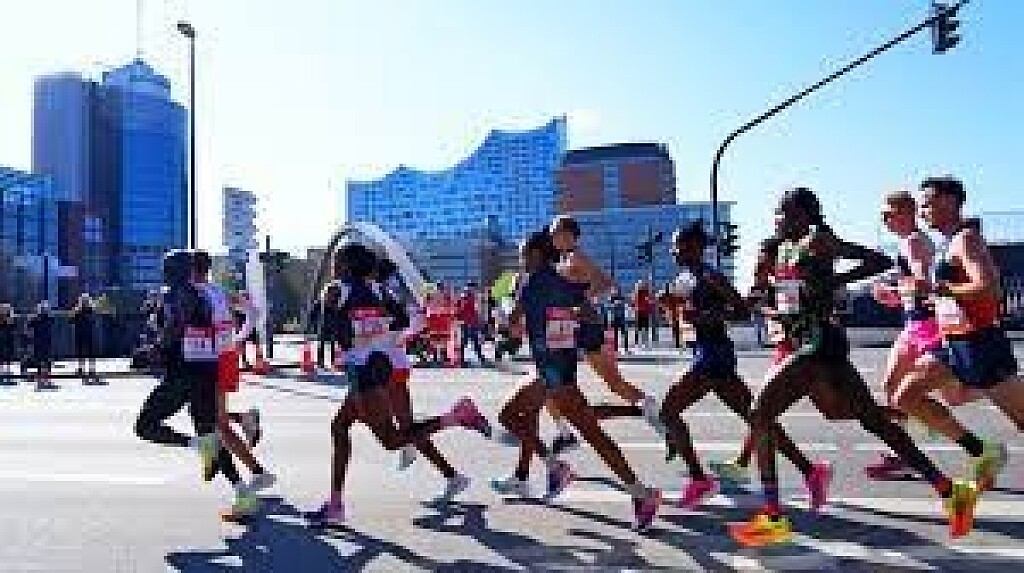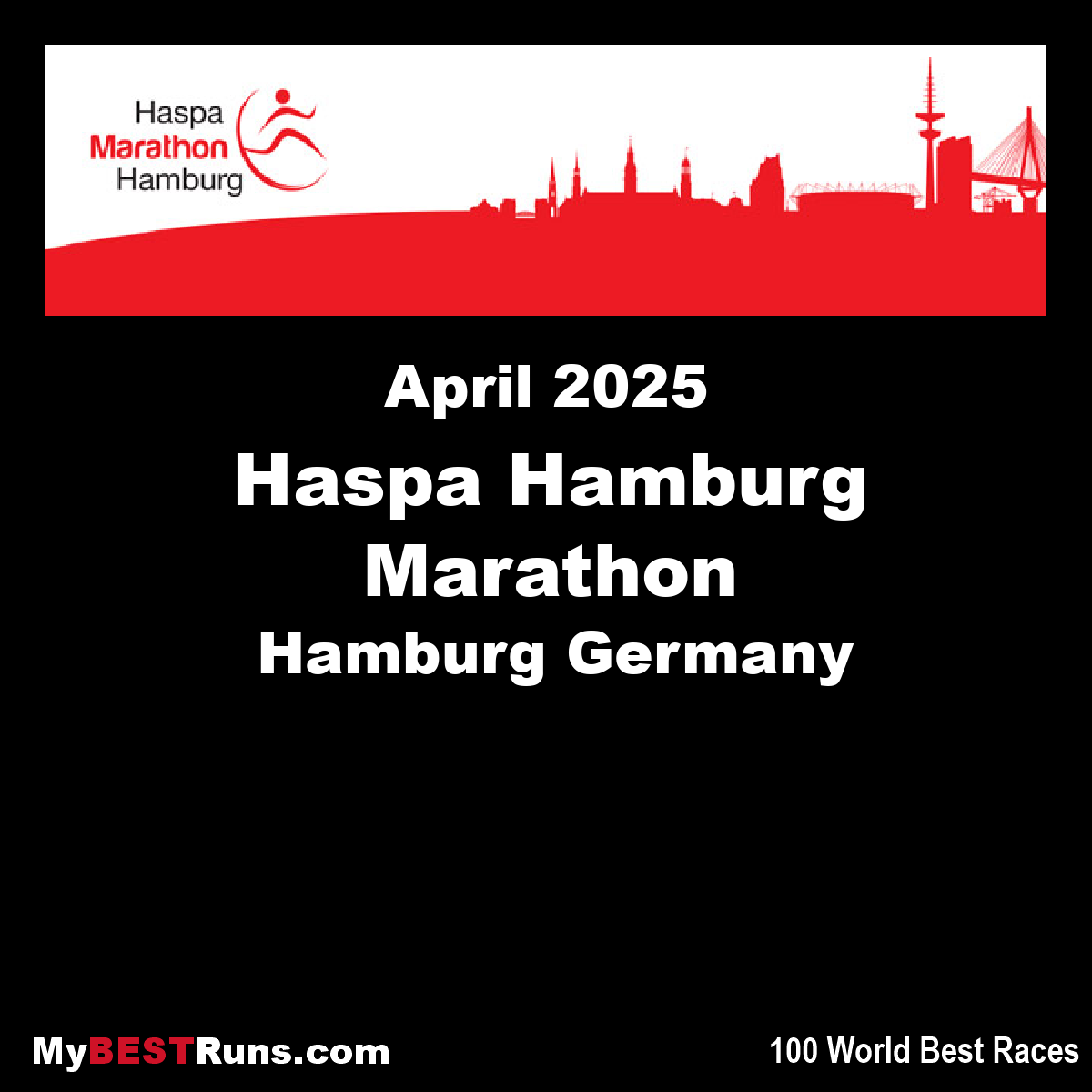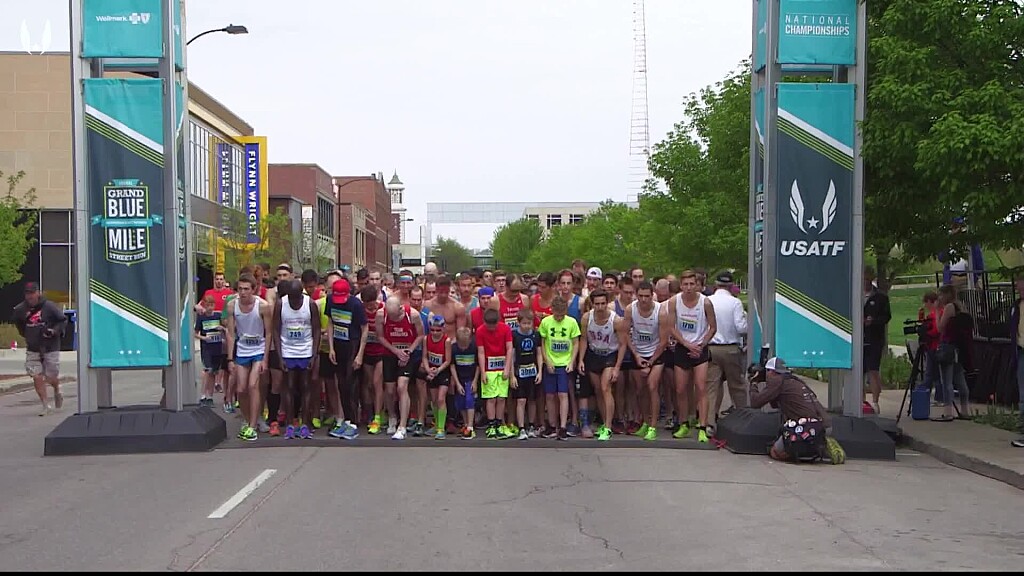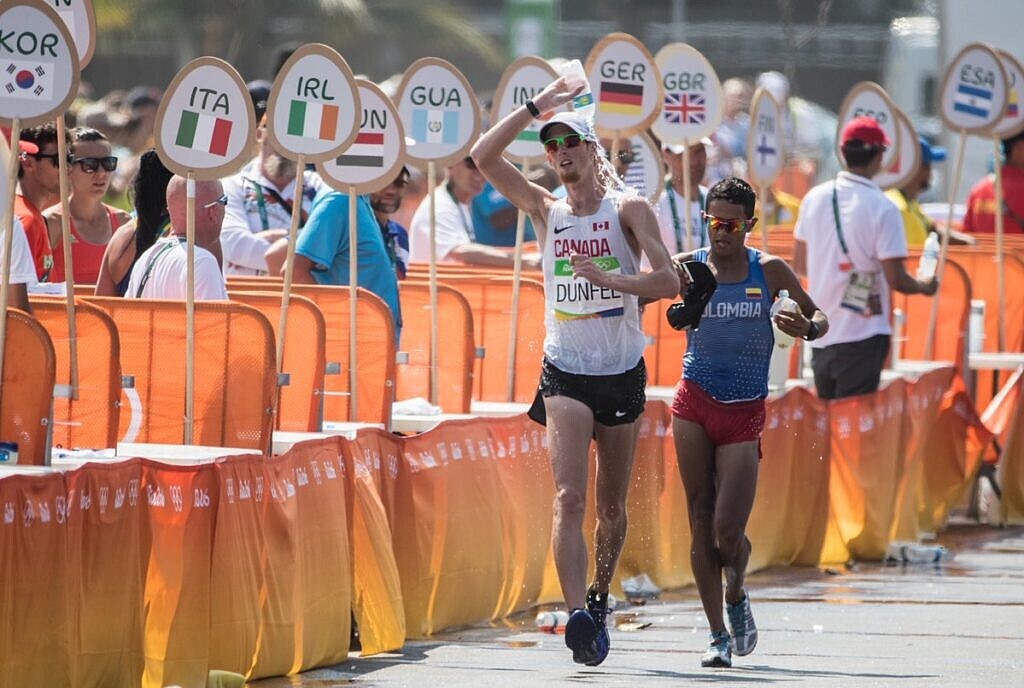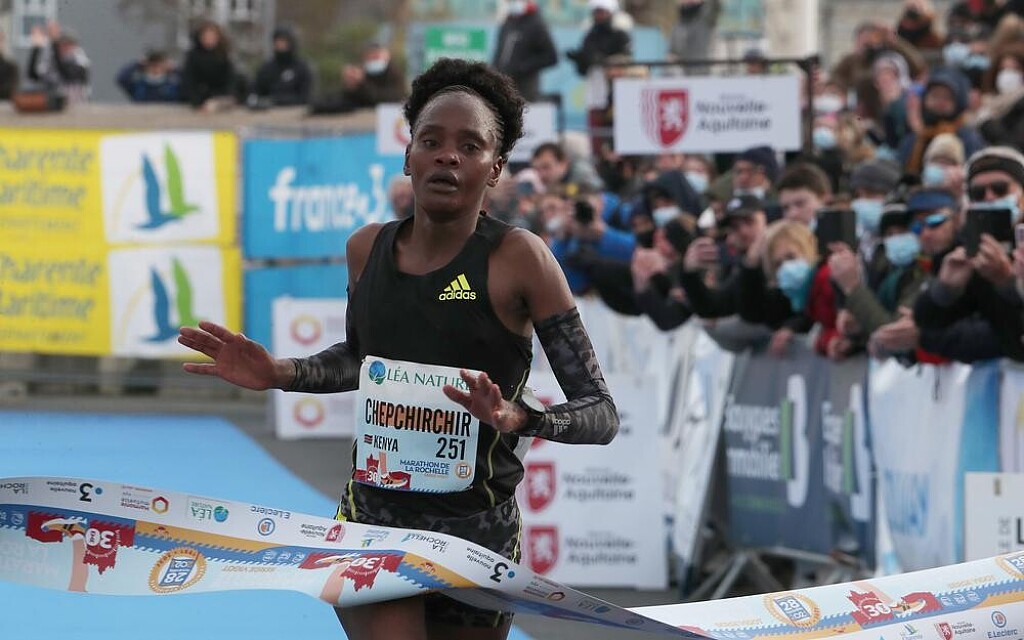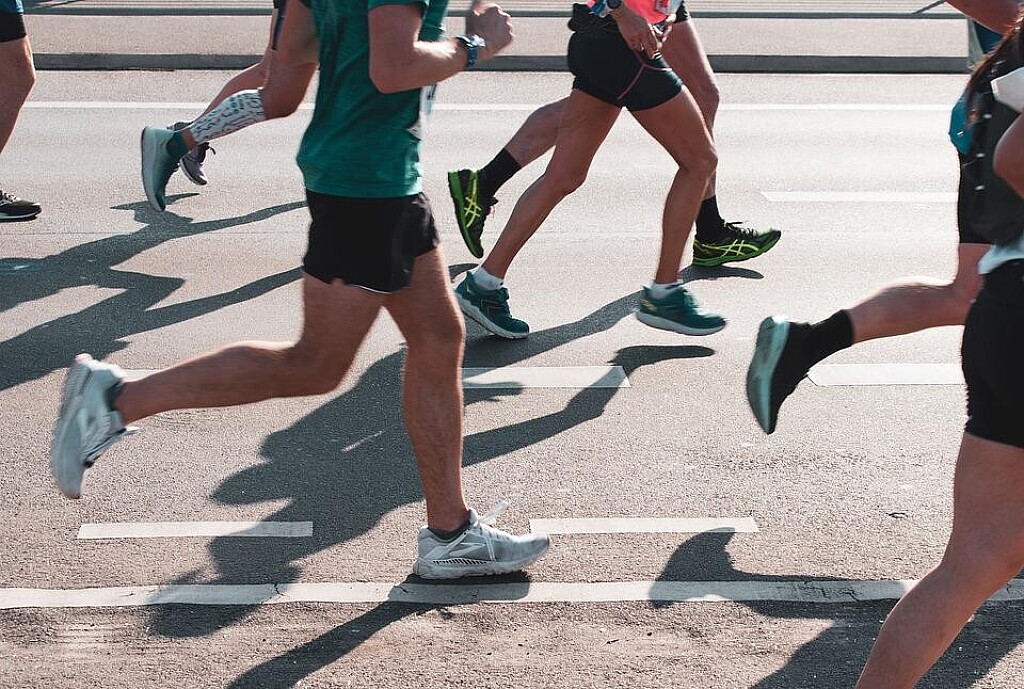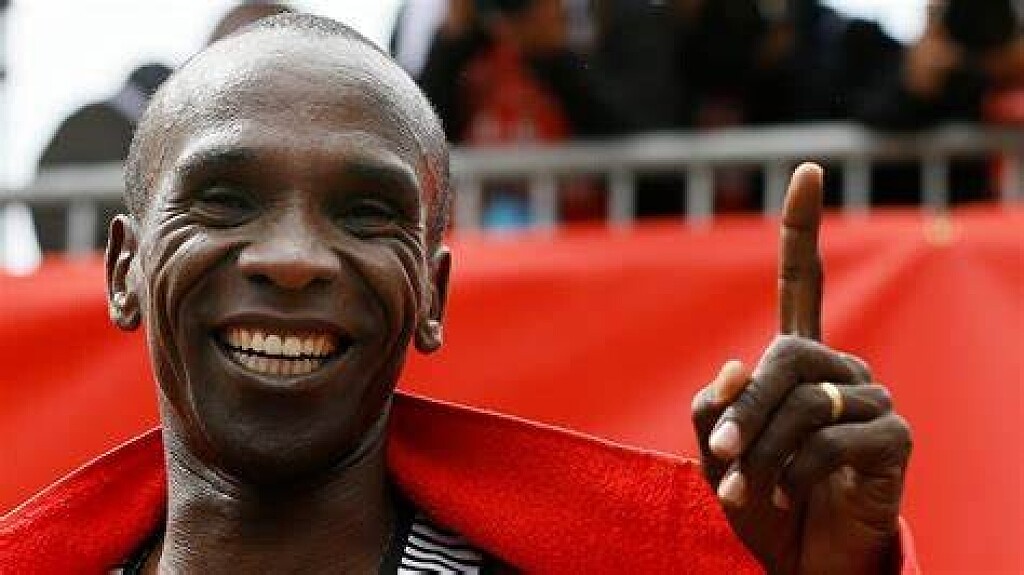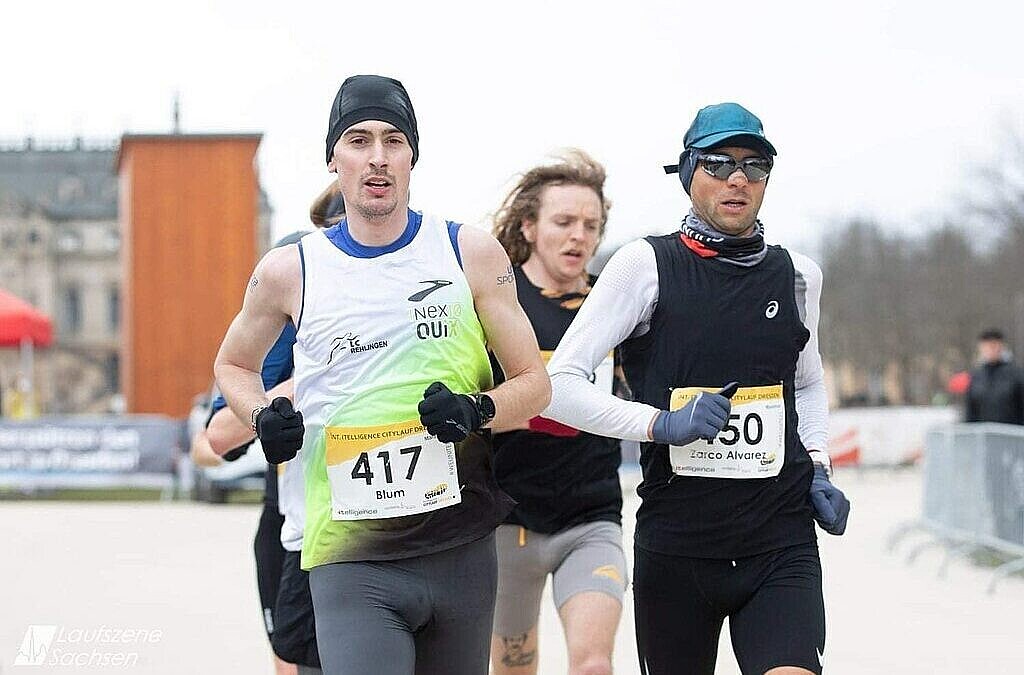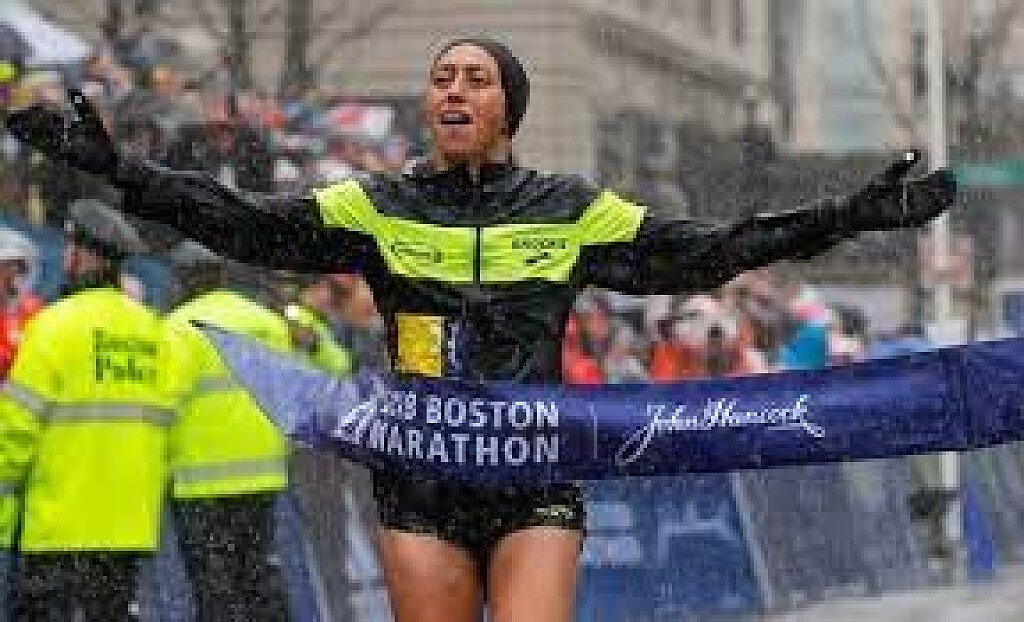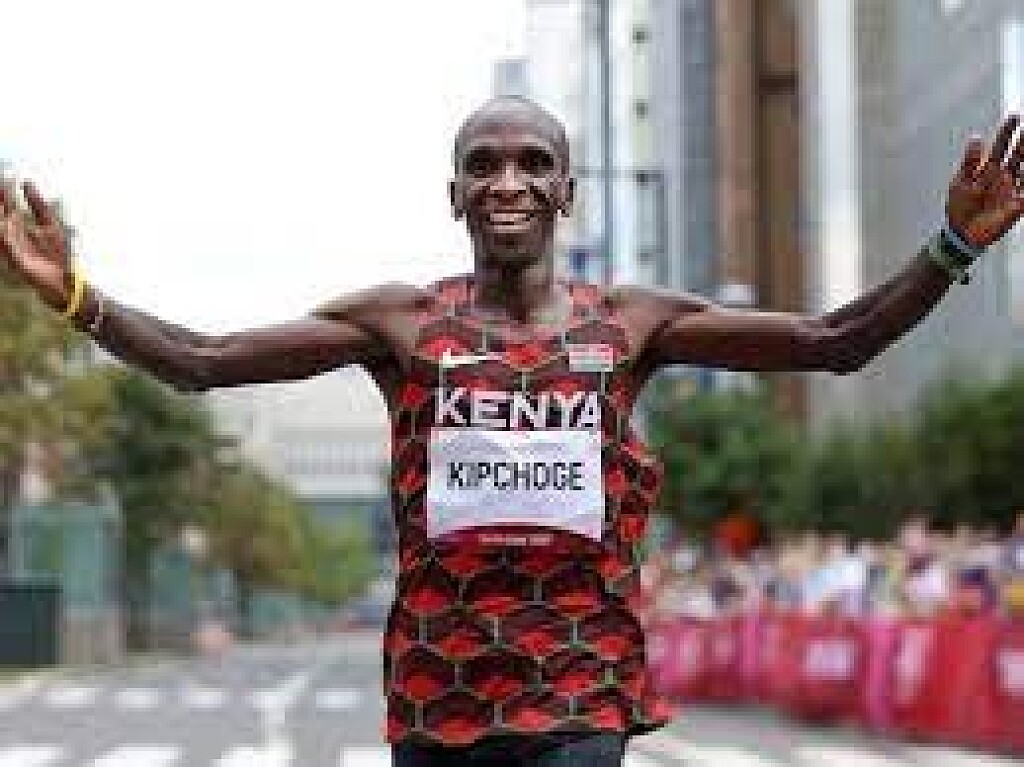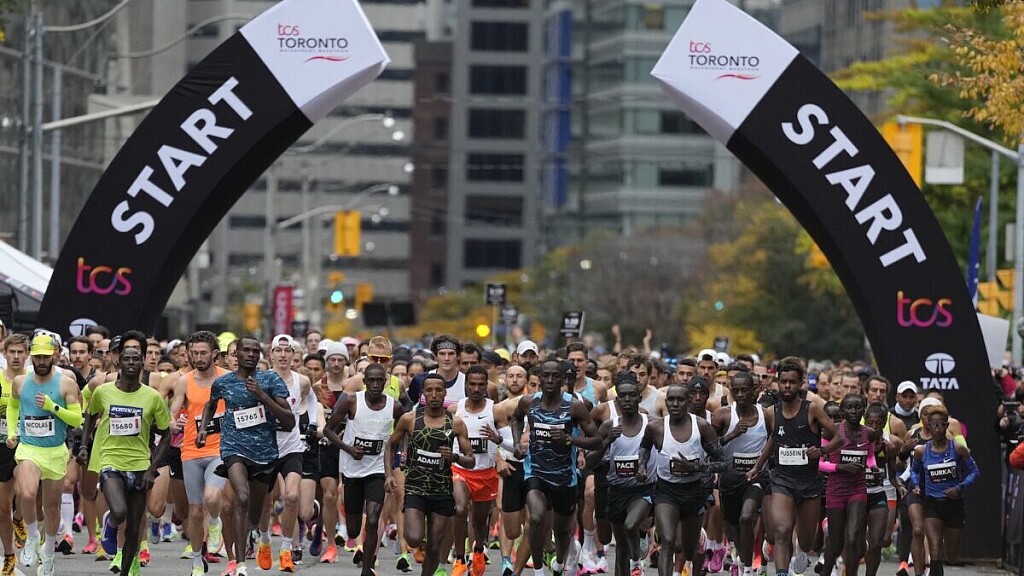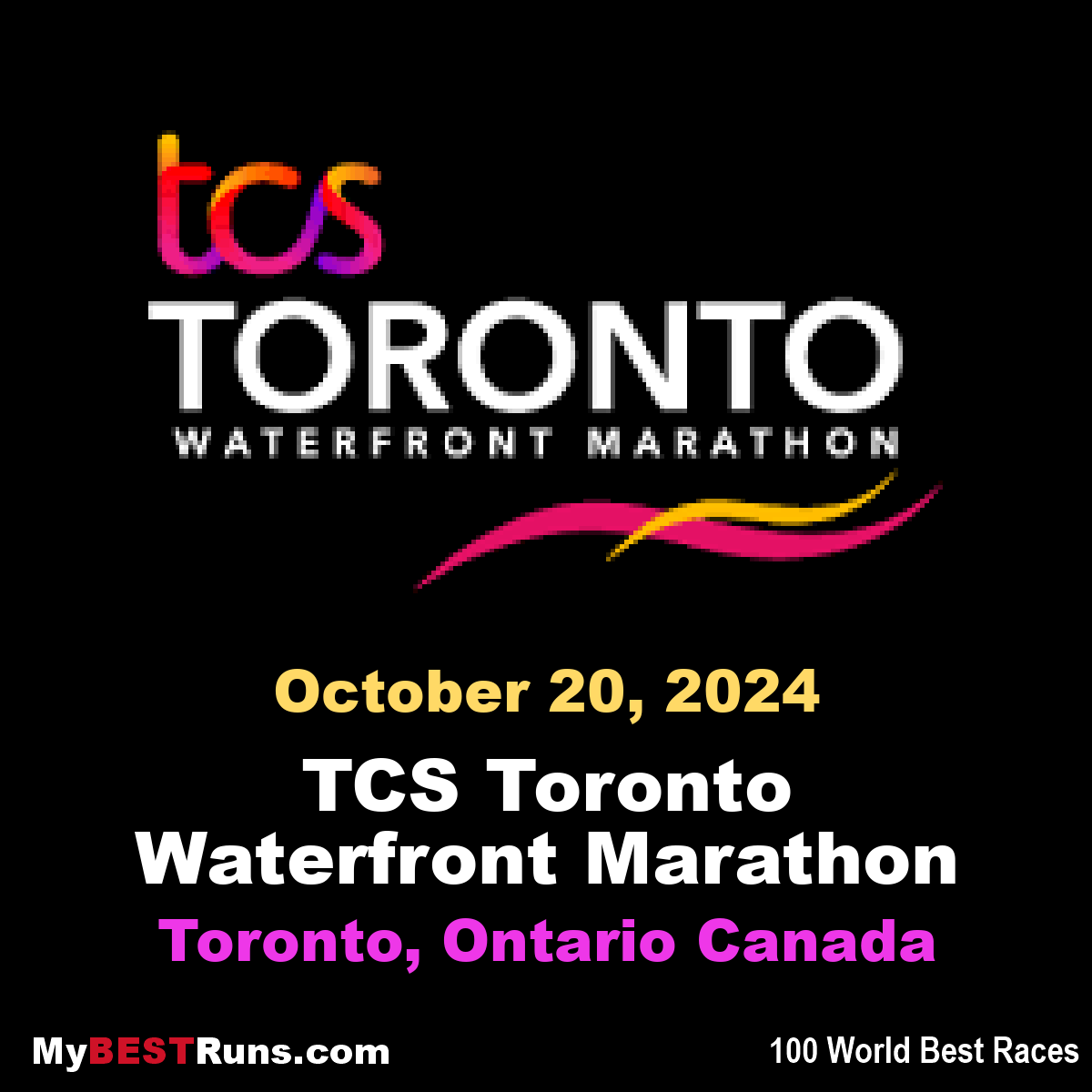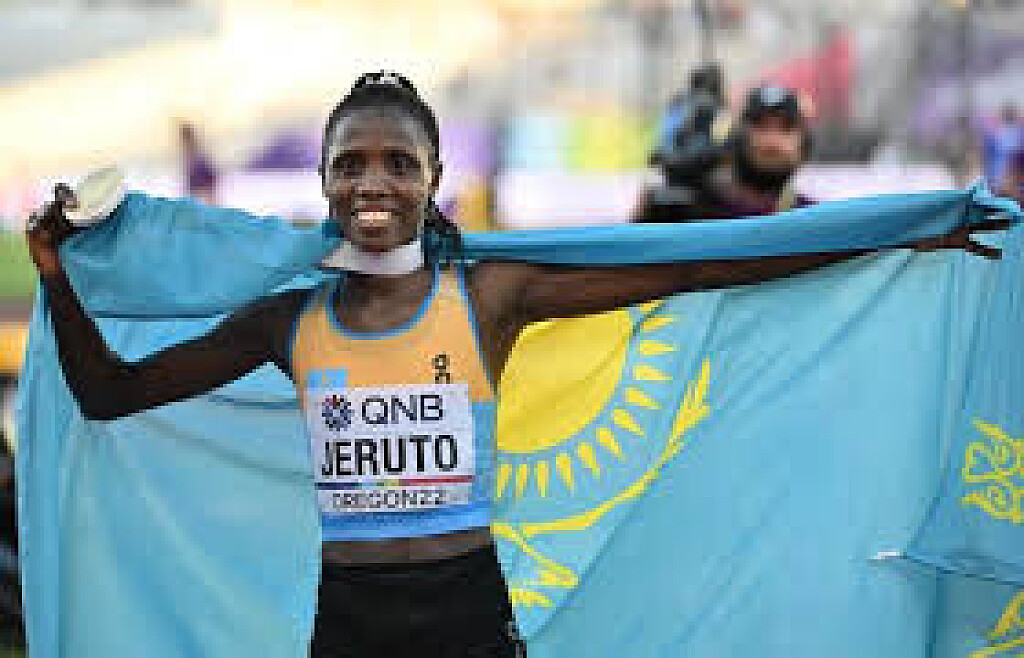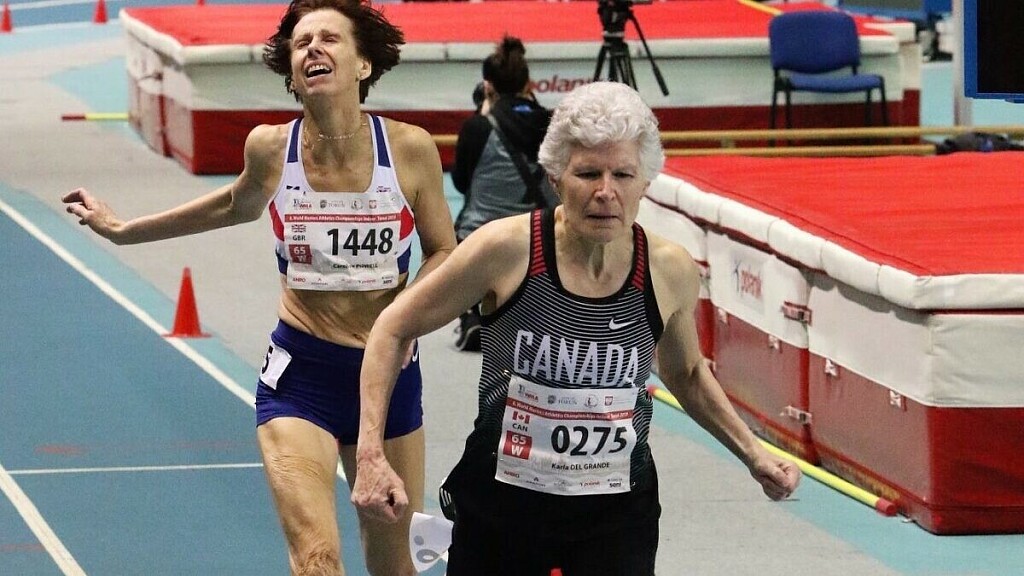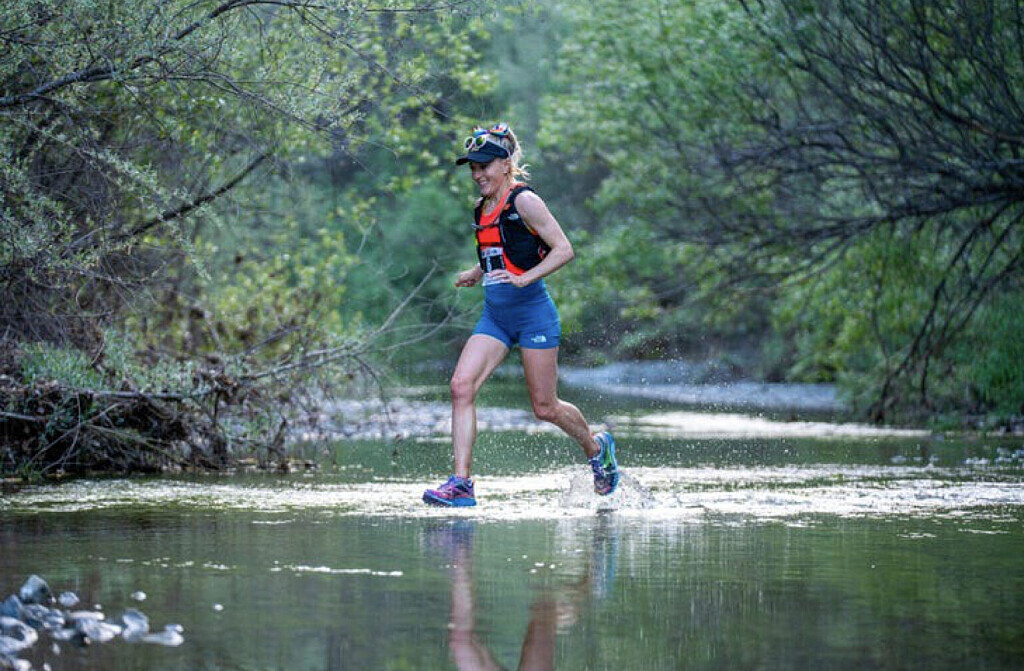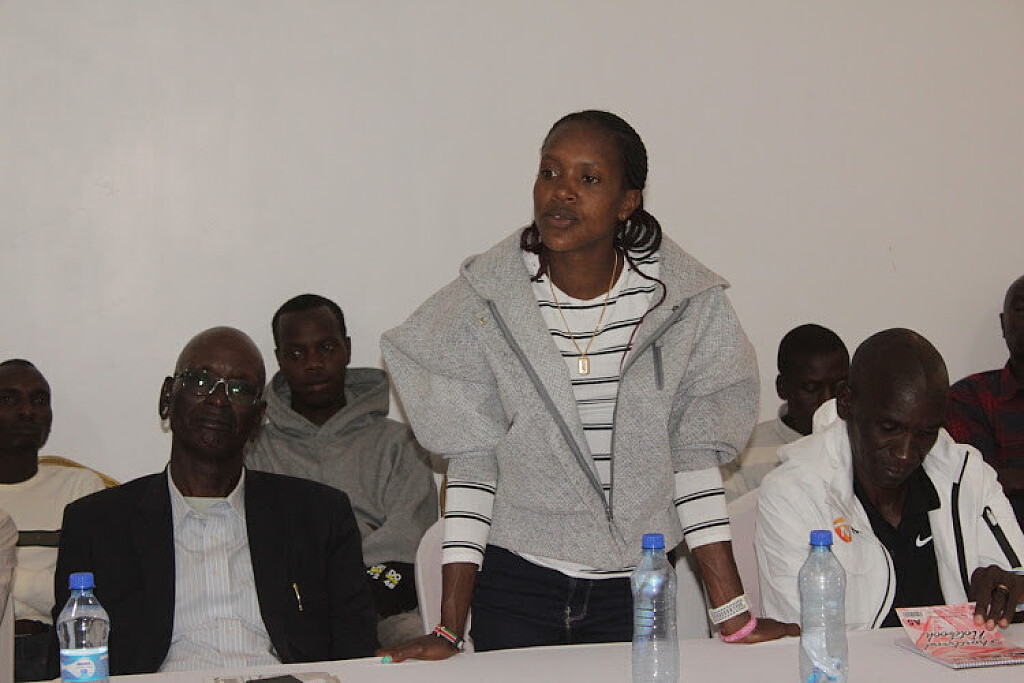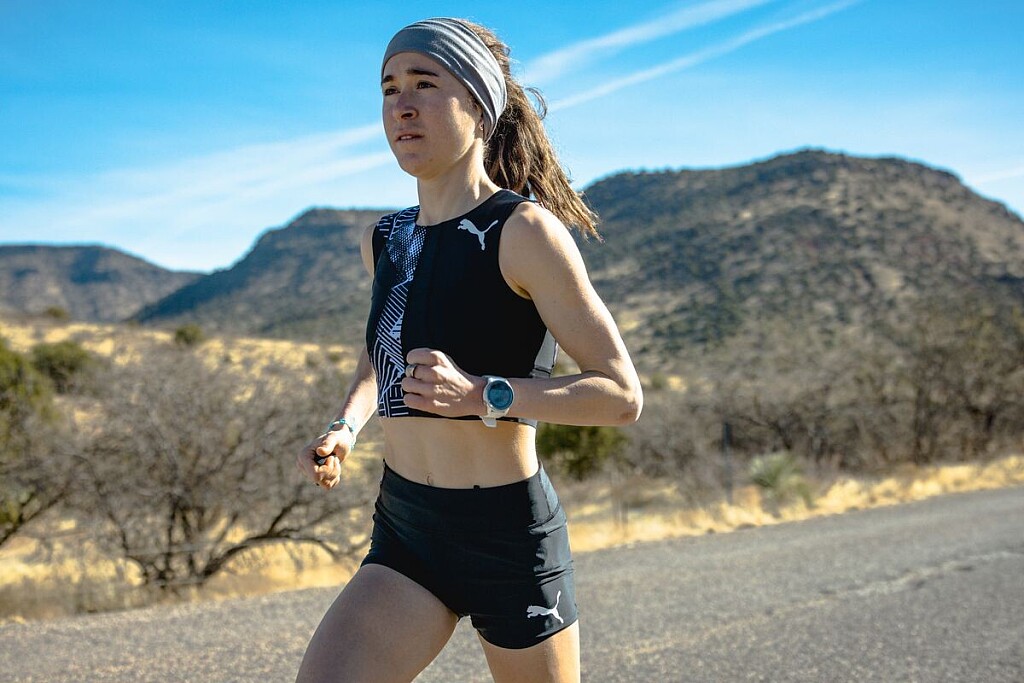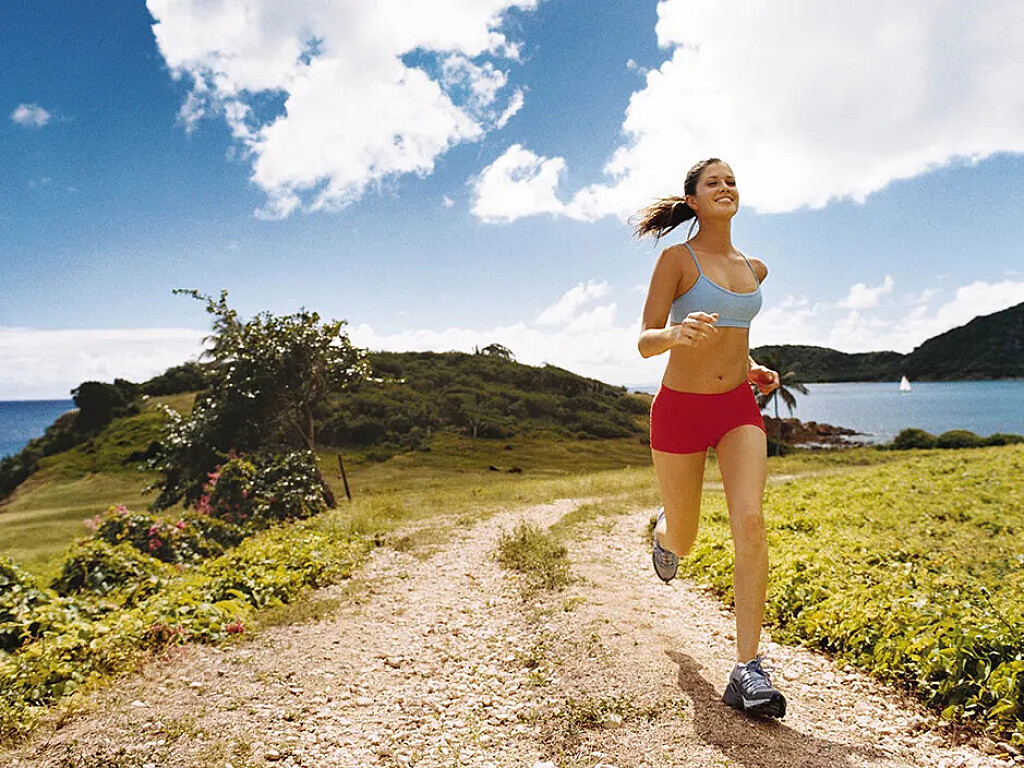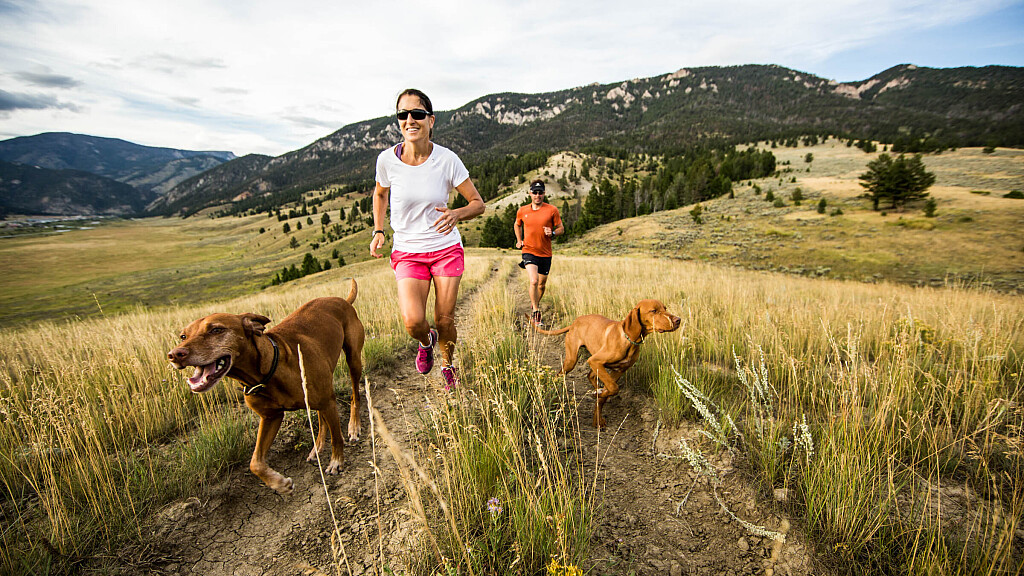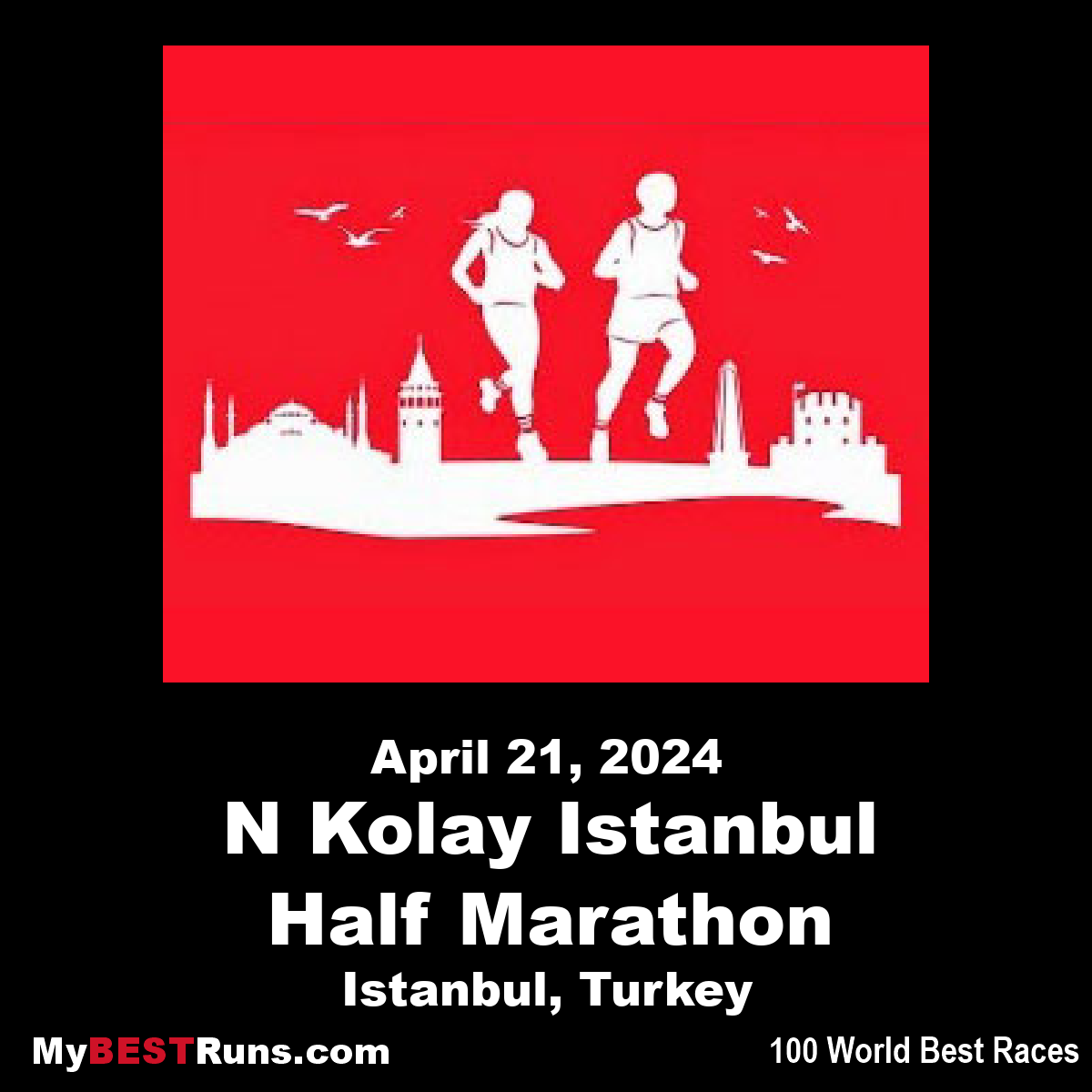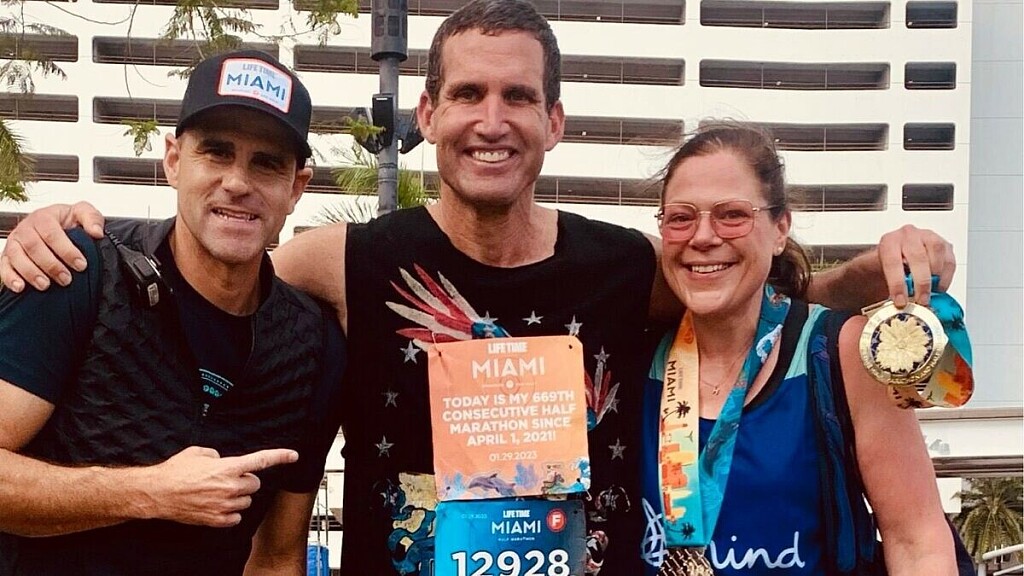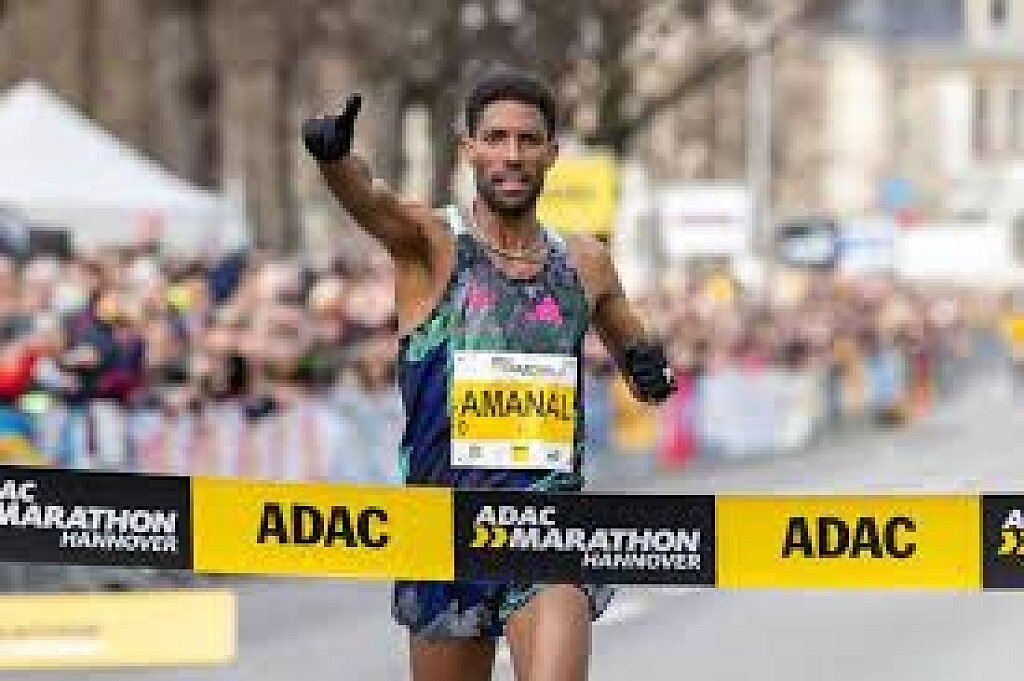Running News Daily
Running News Daily is edited by Bob Anderson in Los Altos California USA and team in Thika Kenya, La Piedad Mexico, Bend Oregon, Chandler Arizona and Monforte da Beira Portugal. Send your news items to bob@mybestruns.com Advertising opportunities available. Train the Kenyan Way at KATA Kenya. (Kenyan Athletics Training Academy) in Thika Kenya. KATA Portugal at Anderson Manor Retreat in central portugal. Learn more about Bob Anderson, MBR publisher and KATA director/owner, take a look at A Long Run the movie covering Bob's 50 race challenge.
Index to Daily Posts · Sign Up For Updates · Run The World Feed
Former Canadian record holder Malindi Elmore will run her first Tartan Ottawa International Marathon
Malindi Elmore will be making her first appearance in the Tartan Ottawa International Marathon leading a star-studded field as part of the Tamarack Ottawa Race Weekend on 27–28 May.
Elmore, 43, debuted in the Athens Olympics in 2004 and returned to the Olympics Games in 2021 in Tokyo. In between, Elmore has won Canadian Championships, competed in triathlon, and had two children.

In her 1500m career Elmore won a bronze at the Pan American Games and at the World University Games. She is also 4x Canadian Champion over 1500m.
But Elmore found her stride in the marathon after her debut in Houston in 2019. She proceeded to break the Canadian record in 2020, running her personal best of 2:24:50. In another outstanding run, Elmore was 9th in the 2021 Olympic Games Marathon, the second highest-ever placing for a Canadian woman. She is also the defending Canadian Marathon Champion.

Elmore is running the Tartan Ottawa International Marathon as a stepping stone to a hopeful return to the Olympic Games next year in Paris.
“I can’t wait to see what Canada’s capital has in store for me,” said Elmore. “My goals for the race are to run competitively and finish strong! The marathon is a race that requires a lot of respect so if I can achieve those two goals, I will run fast!”
“We cannot wait to host Malindi in the nation’s capital for Tamarack Ottawa Race Weekend,” said Dylan Wykes, Elite Athlete Coordinator. “Malindi is such a great role model in our sport as a mom, a coach, and world class marathon runner.”
Tamarack Ottawa Race Weekend is Canada’s biggest race weekend and will run on May 27–28, 2023. You can learn more and register by visiting runottawa.ca.
(04/15/2023) ⚡AMPby AIMS
Ottawa Marathon
As one of two IAAF Gold Label marathon events in Canada, the race attracts Canada’s largest marathon field (7,000 participants) as well as a world-class contingent of elite athletes every year. Featuring the beautiful scenery of Canada’s capital, the top-notch organization of an IAAF event, the atmosphere of hundreds of thousands of spectators, and a fast course perfect both...
more...Boston Marathon preview: will Kipchoge break the course record?
The 127th Boston Marathon is bound to be historic, for two main reasons: it’s the 10-year anniversary of the 2013 Boston bombing. And the men’s marathon will host the world’s fastest marathoner, Eliud Kipchoge, for the first time. Kipchoge is obviously the favourite to win, as he furthers his quest for all six Abbott World Marathon Majors. But nothing comes easy, and here’s why Boston might be Kipchoge’s toughest test yet.
The course and weather

The Boston Marathon course looks like it should be fast, but it isn’t. You start out in the distant suburb of Hopkinton, 150 m above sea level, and cruise downhill for the first eight miles before heading back uphill to finish at sea level in downtown Boston. The course runs almost entirely from west to east, meaning the wind will either be with or against you, which adds variability to the results.
Earlier this month, Kipchoge told Nation that he’s ready for any challenges the Boston course throws at him. “The weather can be unpredictable, but I am trying to be an all-weather man,” said the reigning back-to-back Olympic marathon champion. Kipchoge also said he and his training partners designed a hilly long-run route in Kaptagat, Kenya to emulate the Boston hills, involving 40+ kilometres of rolling hills at 2,500 metres above sea level.

Kenya‘s Geoffrey Mutai holds the course record of 2:03:02 from the 2011 Boston Marathon, when there was a 20 km/h tailwind. Unlike at other marathon majors, pacers are not allowed at Boston, meaning Kipchoge will have to set a 2:02 pace from the get-go if he wants the course record.
Kipchoge’s competition
The 2023 Boston Marathon features of five of the last six marathon majors winners (the only one missing is Amos Kipruto, who will attempt to defend his London Marathon crown on April 23).
Usually, the former Boston champion is the favourite heading into race week, but that isn’t the case when you have the world record holder making his first appearance.
Last year, reigning Boston champion Evans Chebet had a season to remember, becoming the first marathoner to win Boston and NYC in the same year since Mutai did it in 2011. Chebet is fast, and he’s a bit of a tactician, which can work in his favour if Kipchoge mistimes his move. Chebet’s best performance is from the 2020 Valencia Marathon, where he took the win in 2:03:00 (the eighth fastest time in history).
Chebet’s training partner and Kenyan compatriot, Benson Kipruto, is one of the best tactical marathoners in the world. He’s a two-time major marathon champion (Chicago 2022 and Boston 2021) and in both wins he has showcased his ridiculous speed, dropping a 13-high 5K split between kilometres 35 and 40. Kipchoge will need to find a strategy to manage the two-headed dragon of Kipruto and Chebet, who are both familiar with the course and know what it takes to win.
Kipchoge, Kipruto and Chebet will be the main contenders to watch, but there are a few other candidates who could either pull off an upset or get dropped by Kipchoge around kilometre 35, starting with Tanzania’s Gabriel Geay. Geay has always been the bridesmaid but never the bride–he was second in Valencia last December, fourth at Boston in 2022 and seventh at the 2022 World Championships. The 2:03-flat runner ranks inside the top 10 for all-time in the marathon but has yet to win a major–will he get his first win in Boston?
Shura Kitata of Ethiopia was the last man to beat Kipchoge in a marathon major, which happened on a wet day at the 2020 London Marathon. Kitata’s results have been up and down since his 2020 win, but he bounced back last fall, placing second at the 2022 NYC Marathon. Like Kipruto, Kitata is much more of a tactical racer than a speedy one. His personal best of 2:04:49 was set as a 21-year-old at the 2018 London Marathon.
A dark horse who might be a familiar name to many Canadians is the 2022 Ottawa Marathon champion, Adualem Shiferaw of Ethiopia. Shiferaw won Ottawa in a course record 2:06:04 on a warm and windy day in the nation’s capital last year, and has only lost one marathon since 2018 (he was 2nd at the 2022 Riyadh Marathon). This is Shiferaw’s first marathon major, and he has little to lose. If you are looking for a sleeper pick, Shiferaw could certainly catch a few people by surprise.
Prediction
Kipchoge will win this race, but he won’t do it in course record time. The conditions won’t be perfect, and there’s too much uncertainty and variability around the Boston course for him to go out at a 2:01 or 2:02 pace. If I had to guess, Kipchoge will execute a similar race strategy as he did in the Tokyo Olympic marathon, where he sat with the lead group for 25 km and then took matters into his own hands, winning by a minute and a half.
Although he may not have the Boston experience, he is the fastest athlete in the field. What matters to Kipchoge first and foremost is getting the victory, and he’ll execute whatever race strategy it takes to get the job done. Look for him to sit on former champions Chebet and Kipruto early on, and make his move around the 25- to 27-kilometre mark before the Newton Hills, then ride the roar of the crowd home to Boylston Street.
Canadian Running pick: Eliud Kipchoge (Kenya) – 2:05-mid
Stay tuned for our women’s marathon preview.
How to watch
The 2023 Boston Marathon will be broadcasted on TSN 5 beginning at 8:30 a.m. E.T. on Monday, April 17. The men’s open race will begin at 9:37 a.m. E.T. and will likely conclude around noon E.T.
Canadian Running will be your home for the 127th Boston Marathon, featuring live-tweeting for April 15th’s B.A.A 5K and the Boston Marathon. Follow us on Twitter and Instagram for news and updates.
(04/15/2023) ⚡AMPby Marley Dickinson
Boston Marathon
Among the nation’s oldest athletic clubs, the B.A.A. was established in 1887, and, in 1896, more than half of the U.S. Olympic Team at the first modern games was composed of B.A.A. club members. The Olympic Games provided the inspiration for the first Boston Marathon, which culminated the B.A.A. Games on April 19, 1897. John J. McDermott emerged from a...
more...Norway’s Sondre Moen and Visiline Jepkesho of Kenya head the start lists of Vienna Marathon 2023
Fine elite fields have been assembled for the Vienna City Marathon, which will be staged for the 40th time on 23rd April.
Norway’s Sondre Moen and Visiline Jepkesho of Kenya head the start lists of the jubilee edition. The Vienna City Marathon is Austria’s biggest one-day sporting event and the only road race in the country that features a World Athletics Elite Label. Including races at shorter distances organisers have now registered more than 38,000 entries. Over 9,000 of them will run the classic distance.

The men’s field includes eleven athletes with personal bests of sub 2:10. While Sondre Moen features the fastest personal best with a time of 2.05:48 the Norwegian former European record holder will concentrate on running a solid sub 2:10 race to come back from a less successful period. Therefore Abdi Fufa and Bethwel Yegon, who have both been added to the field in recent days, as well as Samwel Mailu and Titus Kimutai are more likely regarded as favorites.
Ethiopia’s Fufa has a PB of 2:05:57 from 2021 and knows the Vienna City Marathon well. He placed tenth here a year ago with 2:10:32. Bethwel Yegon is the fastest Kenyan on the start list and is said to be in fine form. He ran 2:06:14 in 2021 when he surprised with a second place in Berlin. Samwel Mailu looks well placed for a personal best. The Kenyan ran 2:07:19 in Frankfurt for the runner-up position last October. It was an unexpected marathon debut by Mailu since he was originally entered as a pacemaker. Fellow-Kenyan Titus Kimutai ran his marathon debut last autumn as well. He clocked 2:08:31 and was seventh in Linz, Austria. Germany’s Sebastian Hendel is among those athletes looking to break 2:10 for the first time. Andreas Vojta of Austria might also target such a result.

Kenya’s Charles Ndiema and Ser-Od Bat-Ochir of Mongolia as well as Ethiopia’s women only 5k world record holder Senbere Teferi had to withdraw from the race recently. However the women’s elite field of the Vienna City Marathon looks strong. Ten athletes have personal bests of sub 2:30 and four of them have already run faster than 2:23:30.
The former Paris and Rotterdam Marathon champion Visiline Jepkesho is the fastest woman in the field with a PB of 2:21:37. It looks likely that a Kenyan women will win the Vienna City Marathon for a sixth time in a row since the next couple of athletes on the entry list are also from Kenya. Magdalyne Masai (PB: 2:22:16), Rebecca Tanui (2:23:09) and Agnes Keino (2:23:26) should be among the contenders in Vienna. Fellow-Kenyan Caroline Jepchirchir hopes to improve her PB of 2:26:11 and could be among the top finishers. Poland’s Angelika Mach and Branna MacDougall of Canada are the fastest non-African runners on the list with PBs of 2:27:48 and 2:28:36 respectively. Julia Mayer of Austria is expected to perform well and might achieve a time of around 2:30:00.
(04/15/2023) ⚡AMPby AIMS
Vienna City Marathon
More than 41,000 runners from over 110 nations take part in the Vienna City Marathon, cheered on by hundreds of thousands of spectators. From the start at UN City to the magnificent finish on the Heldenplatz, the excitement will never miss a beat. In recent years the Vienna City Marathon has succeeded in creating a unique position as a marathon...
more...New unbelievable Netflix documentary unpacks 2013 Boston Marathon bombing
This year marks the 10th anniversary of the 2013 Boston Marathon bombing, which shook the world and the running community, killing three and injuring more than 200 people. On Wednesday, April 12, Netflix will release a three-part documentary series, American Manhunt: The Boston Marathon Bombing, which looks back on the attack and its aftermath, but also on the past 10 years and the events that have transpired since the bombing.
The documentary looks at the four days after the bombing and the 101-hour search for 19-year-old Dzhokhar Tsarnaev and his 26-year-old brother Tamerlan. Tamerlan Tsarnaev died on April 19 (four days after the marathon), following a confrontation with Boston police, and after his brother accidentally hit him with a stolen SUV while trying to escape. Dzhokhar Tsarnaev was convicted of the bombing and sentenced to death in 2015. He remains on death row.
American Manhunt also features never-seen interviews with members of law enforcement, such as then-Boston Police Department superintendent William Evans and then-Boston Police commissioner Ed Davis; survivors including Karen McWatters, whose friend Krystle Campbell died in the attack and who lost her leg as a result of the bombing; and Youssef Eddafali, who had been a friend of Dzokhar’s before the bombing, and more.
“It took a very long time for us to be able to contextualize and understand what happened in such an unbelievable manhunt, but also emotionally, in terms of what happened to the victims and to the entire city,” said director Floyd Russ in an interview to The Independent. “There are so many different types of trauma in the story.”
The city of Boston will observe the 10th anniversary of the attacks on Saturday, April 14, with One Boston Day: a day for volunteer events and acts of kindness. There will be a shoe drive, a donation drive for food, baby supplies, and clothing, and a blood drive, plus many other initiatives to honour the city’s “spirit of care for one another in response to the tragic events from 2013.”
The documentary will be released on Netflix U.S. and Canada on April 12.
(04/15/2023) ⚡AMPby Running Magazine
Unlock the Benefits of Kinesiology Tape
How to use this stretchy, therapeutic tape to effectively reduce pain and support muscles, tendons, and ligaments (almost) anywhere on your bodyWhatever your sport, avoiding or mitigating injuries is as important as logging miles or sessions. But if you find yourself toeing the line between pushing it too far or sitting on the sidelines, one preventative measure can help support your body so you can keep training: kinesiology therapeutic tape. Utilizing this elastic tape to reduce injuries and boost performance isn’t a revolutionary idea in exercise science—especially when integrated with other body maintenance and recovery best practices. Using the right tape effectively, however? Now that’s another story.
And it’s not just elite athletes who can benefit, either. You don’t need to resemble the colorfully taped Olympic beach volleyball champs who come to mind. When applied correctly, kinesiology tape can ease pain, mitigate injuries, and reduce post-workout muscle soreness in mortal athletes engaged in any type of outdoor exertion or active venture. Here’s how.

Not surprisingly, not all kinesiology tapes are created equally. When you compare options, look for one that offers non-restrictive movement so you can continue to train comfortably. High-quality adhesives help tape to last longer, offering more support to the target area before, during, and after a workout. KT Tape Pro stands up to your toughest workouts. Made from synthetic fibers featuring an elastic core, this performance tape provides more support than cotton kinesiology tape without restricting movement. The adhesive also lasts four to seven days through sweat, swims, and showers—meaning it’s an easy addition to a daily, or even weekly, routine. Plus, rounded corners on each strip reduce snags and peeling. Sure, your old-school gym trainer’s tape can provide support in a pinch. And modernizing to a kinesiology tape can address a number of common athletic injuries. But creating the perfect balance of support and flexibility is an art. One of the most common errors? Applying the tape right before activity. It needs an hour to adhere; proper advance application time helps it last for days (vs. hours) of continuous use. Strips should also be sized long enough to cover the affected area without stretching 1.5 inches at either end. KT Tape Pro comes in pre-cut strips that take the guesswork out of taping. But before you even take the backing off the tape, watch a video to learn the proper taping technique for the target area (or areas) you’re experiencing pain. KT Tape has a library of 35+ video tutorials to help you utilize the tape like a pro. Seriously, you’ll feel like you just walked out of your PT’s office.
Once you have a game plan, it’s time to prep your skin before applying the tape. Remove any lotions, body oils, or sunscreen. You may want to trim excess body hair. Then, wipe down your skin with rubbing alcohol and let the area dry before applying the tape directly to your skin. For best results, apply KT Tape at least an hour before training. Removal is painless and simple even with body hair, where first applying some baby or mineral oil to the tape, or peeling off in the shower, can also help.Kinesiology tape isn’t just helpful for supporting muscle groups and injuries during training. If soreness affects your ability to stick to a movement routine, KT Tape can help your body recover by supporting sore muscles and joints before, during, and after your workout. Studies have shown kinesiology tape helps to aid recovery and reduce soreness by up to 50 percent when worn during and at least 48 hours after exercise. Integrate it into your routine as general preventative (eg. tape before, foam-roll after) and as a key body-maintenance tool to keep you out there performing with less pain and risk of injury.
KT Tape moves with you so you can crush every moment and unleash your potential. The product provides long-lasting support and pain relief for muscles, tendons, and ligaments for anyone who loves to move, wherever your adventures take you.
(04/15/2023) ⚡AMPby Outside
Hundreds of dogs to run at Boston Marathon to honour late pups
On April 16, hundreds of furry friends will take to the 127th Boston Marathon course to honour Spencer and Penny, the official Boston Marathon dogs who died of cancer in February.
More than 100 golden retrievers and their owners are expected to attend and walk to the finish line in a special one-mile event organized by a regional group called MA Golden Meetups. The doggo parade will be the day before the world’s most prestigious marathon on Patriots Day, April 17.

In 2018, Spencer went viral after he was seen in a video holding “Boston Strong” flags in his mouth, cheering on the marathoners racing past him in the rain. Since 2014, Spencer has watched the marathon near Ashland State Park (around the five-mile mark on the Boston course), and Penny, who was three years younger, was often seen by his side.
This year’s race will be the first marathon Spencer and Penny will not attend since 2013. The two golden retrievers will also be commemorated on a billboard in Ashland, Mass., with the slogan “Forever Boston Strong.”
Boston Strong was a slogan created to empower the community after the 2013 Boston Marathon bombing. This year marks 10 years since the catastrophic event.
“We miss you and are proud to call you a friend and forever the ‘Official Dog’ of the Boston Marathon,” the Boston Athletic Association (B.A.A.) said in a tweet.
The dog walk will start at 10 a.m. outside the Boston Common and end at the Boston Marathon finish line on Boylston St. “In memory of Spencer and Penny, the Boston Marathon Goldens, and so many of our beloved furry members who have battled canine cancer,” the website states.
(04/15/2023) ⚡AMPStrava adds Spotify integration in new update
After years of having to switch back and forth between apps, Strava has finally introduced music integration with Spotify. The world’s most popular fitness tracking app for runners will release a new update on April 20, launching Spotify integration to help all users easily access music, podcasts and audiobooks from the Strava app.Users can now play, pause, resume, skip and browse songs from the record screen on the fitness tracker app.
There is no longer a need for Spotify users to switch between the two apps while running to put on their favourite song or podcast. This new integration easily allows users to connect to their favourite tunes and sounds with a tap of a button.

This new integration works for premium and free Strava users.
“We are excited to partner with a global leader like Spotify to seamlessly integrate music and movement on Strava,” said Mateo Ortega, Strava’s VP of connected partnerships. “This new feature further solidifies Strava’s position at the center of connected fitness and continues to demonstrate the power of the global community of active people on the app.”
"One of our biggest goals at Spotify is to be everywhere our listeners are–whether that’s on a run, in the gym, or any place in between,” said Ian Geller, VP of development at Spotify. “The integration with Strava is another way we are moving with our listeners and helping them connect to the music and audio they love.”
To celebrate their new integration, Strava has taken over the popular Spotify “Workout” playlist. Therefore users can listen to the top curated workout songs to help them get moving on April 20. You can check out the Spotify playlist here.
(04/15/2023) ⚡AMP
by Running Magazine
Evans Chebet will be facing the fastest man in the world to defend his Boston Marathon title
Boston Marathon champion Evans Chebet relishing clash with the real ‘G.O.A.T’ .
Evans Chebet will be facing the fastest man in the world over the distance when he steps on the road on Monday to defend his Boston Marathon title.

Chebet cannot wait to clash with marathon record holder Eliud Kipchoge whom he will be racing against for the first time in his career.
The Kapsabet-based Chebet says he is highly motived to compete against Kipchoge considered the Greatest of All Time (G.O.A.T) in marathon racing.

“I have never competed against the fastest man over the distance. We are finally meeting in Boston and I believe the race will be faster and that will help me improve on my personal best. My target is to be on the podium. Expect an exciting race on Monday,” said Chebet who trains under 2Running Athletics Club in Kapsabet, Nandi County.
Chebet, will also be competing against his compatriot and training mate Benson Kipruto.
The reigning Boston Marathon champion said that his preparations for the race have gone on well, he is injury free and wants to show what he has got on the road on Monday.
“I love the Boston Marathon course and given that we shall be competing with other Kenyans, it will be a tough affair but a race normally starts after 35km and that is where you can know if you will finish as a winner,” said Chebet.
In last year’s race, Chebet pulled away from a loaded field in the last few kilometres to surge to victory in 2:06:51. Compatriot Lawrence Cherono finished second in 2:07:21 while Benson Kipruto was third in 2:07:27.
Kipruto, Chebet's training partner, won the 2021 Boston Marathon champion.
He will be coming up against Kipchoge for the second time on Monday after the 2021 London Marathon where he emerged seventh while Kipchoge settled for eighth position.
“In 2021, I competed against Kipchoge though we both finished outside the podium. I believe that we'll have a good race this year. I will be eyeing a podium position despite the stiff competition. It's a rich field but I will do my best and apply what I have been working on in training,” said Kipruto, the 2022 Chicago Marathon champion.
Other Kenyan athletes who will be competing in the race include John Korir who was third in last year’s Chicago Marathon, Nobert Kigen, Mark Korir, who was second in 2022 Berlin Marathon, Michael Githae, and the 2021 New York Marathon champion Albert Korir.
(04/14/2023) ⚡AMPby Bernard Rotich
Boston Marathon
Among the nation’s oldest athletic clubs, the B.A.A. was established in 1887, and, in 1896, more than half of the U.S. Olympic Team at the first modern games was composed of B.A.A. club members. The Olympic Games provided the inspiration for the first Boston Marathon, which culminated the B.A.A. Games on April 19, 1897. John J. McDermott emerged from a...
more...Australian YouTuber Beau Miles runs marathon in a hotel
Australian YouTuber Beau Miles was looking for a change of scenery on his morning run in Seattle, so he decided to run a marathon inside the Hyatt Hotel, where he was staying.
Miles’s goal was to run every inch of the hotel, including hallways, stairwells, conference rooms, lobby, pool deck and bar, and anywhere else that was remotely runnable.

“When I asked for permission from the hotel manager, I was shocked when she said yes,” said Miles. “I even asked: Are you sure about that?, and she replied, “Yes, that’ll be fine.”
In the video, Miles (an ideal last name for a runner), jogs around the hotel and is seen even making pit stops at the continental breakfast, referring to it as his “unsanctioned aid station.”

Running around in the same building may seem a little tedious, but according to Miles’ calculations, each lap (every floor and room) was around 10 kilometres. “The novelty of running a marathon in a hotel did not wear off,” said Miles. “I had a bloody good time, and I got to run in a place I normally wouldn’t get the chance.”
Miles is an Australian outdoorsman and YouTuber with over 500,000 subscribers, who does quirky outdoor challenges around two activities that usually don’t go together, like running a marathon in a hotel. He’s also done other outlandish running challenges on YouTube, such as running a mile an hour for 24 hours, and a 90-kilometre work commute.
(04/14/2023) ⚡AMPby Running Magazine
Running 900 km to the Boston Marathon2
On Tuesday night in Toronto’s Parkdale neighborhood, it was business as usual for community builder Quinton Jacobs. Jacobs and his team of 13 runners departed on their four-day, 904.5-kilometer journey from Toronto to the historic Boston Marathon finish line on Boylston St.
The team left Toronto on April 11, at 8 p.m. and plan to arrive in Boston on Saturday–two days before the start of the 127th Boston Marathon.

Jacobs’s Escape project started out as a ridiculous idea with his friend Anoke Dunston on a 2019 trip to New York. “We saw the first Escape to NYC as a challenge,” he says. But Jacobs ended up tearing his Achilles playing basketball before the journey started, so he did not get to run in New York City.
After Escape to NYC, Jacobs and Dunston knew that the project had the potential to turn into something extraordinary. In 2021, the two men ran to Chicago for the Chicago Marathon with a team of 12 runners from different backgrounds. “We decided that Chicago was our canvas, and we wanted to create something entirely new,” says Jacobs.

Their past two destination ultras to New York and Chicago have been done in the fall, and Boston is their final major, facing their hardest Escape route to date, encountering the Appalachian Mountains of upstate New York and western Massachusetts.
“Escape is about celebrating the diversity of our running community,” says Dunston. “Our goal is to bring people together, no matter their background.”
The team aspect is special for Jacobs, who met his teammates through volunteering in the running community. “We have a team of people from Toronto, Montreal, New Orleans and Chicago,” says Jacobs. “People are all tapped into our ground for all different reasons–it’s special.”
Jacobs is a familiar face to many in the Toronto running scene, as he has been giving back to the city as a volunteer for seven years. He was named community builder of the year by Canadian Running in 2021.
This year Jacobs, Dunston and Hamilton’s Andre Morgan launched their own not-for-profit charity, Ubuntu, which gives back to underprivileged communities in Toronto. Ubuntu is a Zulu word meaning that we are all connected and that one’s sense of self is shaped by relationships with others. “I love to bring people together, where they can enjoy each other’s company.”
Toronto filmmaker and videographer Jason Dam of Tenfold Productions will accompany Jacobs, Dunston and the 11 other runners, capturing all the emotions and moments from their Boston journey into a documentary.
“Running isn’t the hard part,” says Dunston. “The hardest part is battling your body on sleep deprivation and trying to be the best version of yourself for the team.”
“There’s a beauty and a struggle to all our Escape challenges,” Dunston says. “But I think the triumph to battle through means everything.”
You can follow their journey from Toronto to Boston via their Instagram page, @escape_to___. The Escape to Boston team is projected to arrive in Boston on the morning of April 15, and is hosting a panel discussion at the Boston Marathon expo on Saturday at 4 p.m. on how ultra running is changing.
(04/14/2023) ⚡AMPby Marley Dickinson
Boston Marathon
Among the nation’s oldest athletic clubs, the B.A.A. was established in 1887, and, in 1896, more than half of the U.S. Olympic Team at the first modern games was composed of B.A.A. club members. The Olympic Games provided the inspiration for the first Boston Marathon, which culminated the B.A.A. Games on April 19, 1897. John J. McDermott emerged from a...
more...No Time to Run? Five Creative Ways to Find Time
Our lives are busier than ever.
We are all frantically juggling family life and long working hours; some statistics showing the average working week in the US to be close to 36 hours, with some professions working 40 or more.
That’s before we even include cooking, housework, gardening and DIY, social engagements, study and additional commitments.

With so many demands placed on us, it’s no wonder that training slips down the list of priorities.
But lets look at things a little more closely.
Are we really that busy? Or are we just poor at time management or just making excuses?

Today we are going to dive into where our time goes, and how we can make sure running remains enough of a priority to consistently keep up with training. We will share things to think about when it comes to being creative with your training, and then 5 helpful ways to fit training in when life gets hectic.
Why Is There No Time For Running?
This chart is from The Bureau of Labor Statistics 2014 showing average leisure time of Americans (over the age of 15). A typical American has 5 hours of leisure time a day.
Take a look at the blue section of the chart. Imagine how much time we’d have for running if we didn’t spend nearly 3 hours of it watching TV? So if you’re spending a bit too much time in the blue segment of this chart, then the answer to the ‘How do I find time to run?’ question is quite easy.
Turn off the TV! And work on spending a bit more time in the purple section.
But lets say you don’t spend 3 hours a day watching TV.
Lets say you work long hours but on top of that, you might have children to care for, dogs to walk, housework, cooking, washing, ironing and admin to take care of. Finding time to run can be really tough.
Make running a priority using creative runner friendly hacks
The busier we get, the more creative we have to be about how we spend our time.
It’s easy to waste many hours on the internet, watching TV, on your mobile phone or just frittering time away. You have to get tough with yourself and become incredibly efficient – don’t get distracted by things are less important.
In our frantic, busy lives, if you really want to find time to run, you have to find a way to make it work and get organized.
According to Tony Phillips, aka ‘A Mile A Day’ from the UK, the main thing that stops us finding time to exercise is not giving it a high enough priority in our lives.
‘When we have enough time, we usually manage to fit exercise in’ he explains ‘but when we get busy, exercise is the thing that gets pushed aside, because it’s not deemed as important. But running is one of the best ways to help us deal with stress and overwhelm. Yet the time when we need it most, is the time we tend to short-change ourselves’.
We all know intrinsically that exercise is one of the most important things we can do for our health and we need to make it a top priority, but it’s easier said than done.
‘People who make exercise high in their list of priorities are generally the ones who manage to fit it in’ explains Tony, ‘They understand the connection between physical fitness, health and mental wellbeing’.
That is certainly true for me.
I’ve learned over the years that running is a vital part of my life. It’s like medication, and without it I feel physically sick, grumpy and can’t function well.
That doesn’t mean I’m always joyful about going for a run, it just means that I need it in my life and on the days I run I ALWAYS feel better.
So I’ve learned to prioritize. It might mean I go to bed early, or it might mean I miss out on a social event or a TV show, so I can get up early the next day to run.
Rather than going out for dinner too often with my husband, we choose to have a ‘date run’ instead. We get to spend time together and catch up, but we’re doing it at the same time as running, rather than over a bottle of Rioja. Same goes for catching up with girlfriends for a coffee. Instead, we meet for a run or at the very least a dog walk.
It’s not an obsession; it’s just a choice. And in our busy lives, we can’t have it all. We have to make choices.
Schedule your run into your day for a guaranteed win
According to Tony, there are two other behaviors that set successful runners apart from the ‘excuse makers’. ‘The other thing they do is schedule it into the day’ says Tony ‘they know it’s high priority, and they don’t immediately move it when something else comes up.
They also recognize that a short run is better than none at all. Even just one mile a day is easier to fit into gaps in your schedule, and keeps you in the routine of regular exercise’.
Little and often is the key.
It’s better to be consistent, but do regular short runs, rather than overwhelm yourself with big mileage goals.
On that note, I find standard training plans for busy people often don’t work. You need to devise your own flexible plan to fit in around your own lifestyle or work with a coach who understands you and can tailor your training to your life conflicts. This is where Runners Connect individualized training comes in!
Learn HOW to train, what you need to do to meet your goals and work with your schedule to make it happen. A strict training plan (which isn’t personalized to you) can add more stress and the sense of failure when you don’t manage to follow it.
Make it a challenge to find creative ways to get your run in
Developing a ‘growth’ mindset is a vital tool to helping you become more efficient at prioritizing your running.
The ‘growth’ mindset is a concept developed by Carol Dwerk, a Professor of Psychology at Standford University.
Now:
It’s much more than having a ‘positive attitude’.
It teaches us that we can change the way we think; finding solutions to problems rather than seeing barriers. Becoming more resilient and resourceful.
Someone in the fixed mindset (which is bad) might say ‘I have a long commute to work I don’t have time to train’.
Whereas someone in the growth mindset would think ‘I have a long commute, could I spend some of that running, change my stop on the train or run part of the way home? How can I make that happen? What do I need to do to make it work?’
It’s about looking for creative solutions and finding ways around barriers.
Don’t ‘go hard’ all the time
There is no scientific evidence for this (you heard it here first), but it’s something I’ve noticed over the last 20 years of my coaching work.
Running hard every single time you go out could be making it difficult for you to stay on track with your training.
Runners Connect often posts about the importance of easy running, how 80% of your runs should be easy, even if you are only running a few times per week.
”If your brain always associates running with pain, eventually it’ll persuade you to stop.”
If on the other hand, your brain associates running with pleasure and enjoyment (perhaps a slower pace and gradual increase of miles) then it’s far more likely you’ll continue and WANT to go running, rather than dread it. Try it and see what happens.
5 Ways To Fit Your Training Into A Busy Schedule
‘Get your training done as early in the day as you can’ advises Tony. ‘Go to bed early, get up early and get it done. It sets you up for the day and makes your more productive. There will ALWAYS be something else to do, so get your run done first’.
‘Make it a habit’ continues Tony ‘Habits are easy to form when you do them every day. Even if you don’t run every day, try to make it the same TIME each day you run. It helps to have a trigger. For example, you run immediately after getting up, or always at lunchtime at work. The idea is that you embed it as something you do automatically’.
Don’t underestimate the power of a training partner. Training with someone else at least once a week is a great way to make sure you get out there and run. Book in with a friend or group session. The commitment of meeting someone else will mean you’ll be less likely to let them down and you’re more likely to train. If you do not have anyone else in your area to run with, get many of the same benefits by joining a running community like Coach Jamie Dodge talked about in the podcast Do I Need a Running Coach?
‘Make sure your training schedule works for everyone else in the household’ advises Tony. ‘If you’re finding it tough to get out, and the people around you are complaining or encouraging you stay at home, it makes it doubly difficult’. Perhaps get them to join you? Or at least make sure they know your plans and how important it is to you. Don’t allow anyone else to derail you or your enthusiasm.
And finally, leave some gaps in your schedule. Life has a habit of disrupting plans and things always take longer than you think. ‘All time management systems work best when you build some spaces in for contingency’ says Tony. ‘It reduces stress and gives you another window to run when things go off schedule’
And if you’re still struggling, here’s a final piece of advice from Life Coach and time management guru Tony Philips:
“You have 168 hours each and every week. If you work a 40-hour week and sleep 8 hours every night, that leaves 72 hours or just over 10 hours per day.
Of the remaining time how much of it do you spend doing things that benefit you less than training, such as watching television, wasting time on your computer, playing video games or on your mobile phone?
(04/13/2023) ⚡AMPby Sarah Russell
Indefatigable Edna Kiplagat to tackle Boston course again, at 43
It is commonly said that age is nothing but a number.
At 43 years old, two-time world marathon champion Edna Kiplagat will be out to prove that when she lines up among the elite athletes for the 127th Boston Marathon race on April 17 in the USA.

She will be heading to Boston for the sixth time where she is optimistic of good results after training for the last four months.
Nation Sport caught up with her at Kipchoge Keino Stadium in Eldoret, Uasin Gishu County while she was doing her speed session in readiness for the race.

Maiden win
Kiplagat won the title at her first attempt in Boston in 2017. She returned the following year but finished ninth, in 2019 she was second. The 2020 edition was postponed due to the Covid-19 pandemic.
She went back in 2021, finishing second behind Diana Kipyokei, but was later declared the winner after Kipyokei was banned for using a banned substance.
Kiplagat was fourth last year.
Kiplagat who lives and trains in Colorado, USA said she shifted her training to Kenya which has favourable weather conditions.
“I started training in December last year when I learned that I will be racing in Boston. But in January and February, it was so cold in the US, I decided to come to Kenya because the weather is favourable,” said Kiplagat.
She will be competing against Kericho-based Sheila Chepkirui, former New York Marathon champion Joyciline Jepkosgei, 2021 Amsterdam Marathon Angela Tanui and Fancy Chemutai.
Also in the elite field are Maurine Chepkemoi, Mary Ngugi, Viola Cheptoo, Vibian Chepkirui and Hellen Obiri.
(04/13/2023) ⚡AMPby Bernard Rotich
Boston Marathon
Among the nation’s oldest athletic clubs, the B.A.A. was established in 1887, and, in 1896, more than half of the U.S. Olympic Team at the first modern games was composed of B.A.A. club members. The Olympic Games provided the inspiration for the first Boston Marathon, which culminated the B.A.A. Games on April 19, 1897. John J. McDermott emerged from a...
more...Runners chase popular Strava segment in Denver airport
Here's an idea of how to kill time waiting for your next flight.
Strava segments are an athlete’s best friend, and there is nothing more infuriating when you get an email about someone who took one of your crowns or local legends, especially if it’s in a place you can’t get to. This 150-meter Strava segment in Terminal B of the Denver International Airport has gained popularity online after a few runners posted TikTok videos of them sprinting through the airport, trying to beat the record.

By the looks of it, the segment named “gate change gnar” is a 150-meter sprint in Terminal B at Denver International Airport. The record time is 19 seconds and is held by Jared Murphy of Provo, Utah, and Elsa Westenfelder of Missoula, Mon., who has the women’s CR of 26 seconds.
Segments are one of Strava’s most popular features, as it gives everyday runners a glimpse of how their times stack up against their friends and other runners. Segments are portions of popular running and cycling routes created by Strava members where athletes can compare times and see where they stack up on a leaderboard.

Most people will kill time waiting for their flight at a restaurant, bar or shop–you truly know you’re a runner (or addicted to Strava) when you’re thinking about how you can become the local legend in ‘Terminal A Sprint’ in the two hour time window before your flight to Miami.
In a few videos, the runners received a few strange looks from security and airport patrons, which I don’t blame them for. An airport can be a great place for segment chasing because if you do get stopped by security, you could say you were trying to catch your flight.
(04/13/2023) ⚡AMPby Running Magazine
Hamburg might be in for another Ethiopian marathon stunner
Another Ethiopian world-class runner could produce the headlines of the women’s race at the Haspa Marathon Hamburg on 23rd April. A year ago Yalemzerf Yehualaw smashed the course record with a sensational time of 2:17:23 which was also an unofficial world debut record. This time youngster Tiruye Mesfin heads the women’s start list with a world-class personal best of 2:18:47.
With this time the 20 year-old is the fastest woman marathon runner ever entered into the race. Among a group of athletes with personal bests between 2:22 and 2:25 is Italy’s Giovanna Epis, who might want to attack the Italian record on the fast Hamburg course.

“After last year’s sensational race by Yalemzerf Yehualaw we are now looking forward to welcoming another super fast Ethiopian woman to Hamburg. It seems Tiruye Mesfin could produce something special here as well,“ said chief organiser Frank Thaleiser.
At the age of just 20 Tiruye Mesfin ran one of the fastest marathon debuts ever in Valencia in early December last year. In an extraordinary strong field she was sixth with 2:18:47. With such a time she would have won most of all other international marathons. Additionally Tiruye Mesfin, who started competing internationally in autumn 2021, showed very promising form little over three weeks ago, when she was fourth in the Lisbon Half Marathon with a personal best of 66:31.

Tiruye Mesfin’s strongest rival in Hamburg could well be a fellow-Ethiopian: Sintayehu Tilahun is still a newcomer to the international road running circuit as well. The Haspa Marathon Hamburg will be the third race over the classic distance for the 23 year-old. After a 2:45:06 debut win in a small Italian race near Udine in 2021 she ran the Milano Marathon a year ago, finishing second with a huge PB of 2:22:19.
It was in Valencia in December, when Giovanna Epis came agonizingly close to breaking the Italian marathon record. The 34 year-old improved to 2:23:54, missing the record of Valeria Straneo by just ten seconds. The Haspa Marathon Hamburg could be the race for Giovanna Epis to give it another try.
Stella Chesang will run her marathon debut in Hamburg on 23rd April. The multiple national record holder from Uganda has a half marathon PB of 68:11. The Commonwealth Games 10,000 m champion from 2018 has shown strong form recently, when she took tenth place at the World Cross Country Championships in Bathurst, Australia, in February. The Ugandan marathon record of 2:23:13 could be within reach for Stella Chesang.
(04/13/2023) ⚡AMPby Christopher Kelsall
Haspa Marathon Hamburg
The HASPA MARATHON HAMBURG is Germany’s biggest spring marathon and since 1986 the first one to paint the blue line on the roads. Hamburcourse record is fast (2:05:30), the metropolitan city (1.8 million residents) lets the euphoric atmosphere spill over and carry you to the finish. Make this experience first hand and follow the Blue Line....
more...Elite Fields Released For USATF 1 Mile Road Championships At The Grand Blue Mile
Elite Fields Released For USATF 1 Mile Road Championships At The Grand Blue Mile.
On November 30, 2022, World Athletics, the international governing body of the sports of track and field and road running, announced that an official world record for the road mile would be introduced beginning on January 1, 2023.

The flat and fast Grand Blue Mile course meets all requirements for World Record ratification, quickly distinguishing the 2023 USATF 1 Mile Road Championships as a destination for American athletes aspiring to make history. For immediate ratification, a World Record will require a performance of at least 3:50.00 for the men and 4:19.00 for the women. If the listed standards are not met by September 1, the fastest recorded, record-eligible performances will be recognized as the World Records.
After thousands of recreational and competitive runners have navigated the 1 mile course through downtown Des Moines, more than 40 elite runners will compete for the title of USA Road 1 Mile Champion. Those runners include four former 1 Mile Road Champions in Sam Prakel (2020), Katie Follett (2017), Nikki Hiltz (2019) and the defending men’s champion Vincent Ciattei.

Ciattei won last year’s race in 4:03 but owns a personal best of 3:51 and was an NCAA runner-up in the mile and 1,500m as a collegian at Virginia Tech.
Prakel claimed the title in 2020 in a COVID pandemic-altered race that finished in Drake Stadium. He aims to add a third national title to his resume this year, as he recently claimed USATF indoor titles in the 3,000m and 1,500m. The men’s field also includes faces familiar to the Grand Blue Mile in Shane Streich, who finished third last year, and Abe Alvarado, who was fourth in 2021.
Nikki Hiltz, a champion in the event in 2019, returns to Des Moines fresh from the USATF Indoor Championship in the 1,500m they captured in March. The 2019 Pan-American Games gold medalist was also a 2019 World Championships qualifier.
Sinclaire Johnson joins the field to make her Grand Blue Mile debut after winning the USATF Outdoor 1,500m title in 2022 to earn her a spot at the 2022 World Championships, where she finished sixth.
The women’s lineup also includes a pair of Iowa talents returning to Des Moines in Alex Teubel and Abby Kohut-Jackson. Teubel, an assistant coach at UNI, finished third in last year’s race, and the Lisbon, Iowa, native was an Olympic Trials finalist in the 3,000-meter steeplechase. Kohut-Jackson is a product of Ballard, Iowa, who advanced to the USATF Outdoor Championships finals in the steeplechase and was Big Ten champion in the event at the University of Minnesota.
The fastest road mile ever run on Iowa soil was at the inaugural Grand Blue Mile in 2010, when Boaz Lalang won in 3:54.3. A special incentive has been created for the winner, who eclipses that time or 4:29.3 in the women’s championship race. A performance that is successfully ratified as a new World Record will earn an additional $5,000 bonus.
The full fields are listed below.
Men’s USATF 1 Mile Road Championship
Colin Abert
Abe Alvarado
Michael Brannigan
Jacob Brueckman
Luca Chatham
Vincent Ciattei
Casey Comber
Graham Crawford
Owen Hoeft
Austin Dalquist
Jonathan Davis
Kasey Knevelbaard
Nate Mylenek
Craig Nowak
Sam Prakel
Nick Randazzo
David Ribich
Nate Sloan
Shane Streich
Women’s USATF 1 Mile Road Championship
Stephanie Brokaw
Katie Camarena
Alli Cash
Anna Connor
Micaela DeGenero
Katie Follett
Eleanor Fulton
Jessa Hanson
Nikki Hiltz
Marisa Howard
Sinclaire Johnson
Abby Kohut-Jackson
Melissa Menghini
Shannon Osika
Angel Piccirillo
Colleen Quigley
Jenn Randall
Emily Richards
Helen Schlachtenhaufen
Alex Teubel
Emi Trost
Addy Wiley.
(04/12/2023) ⚡AMPby Letsrun
Grand Blue Mile
The Grand Blue Mile was created by Wellmark Blue Cross and Blue Shield and the Drake Relays to encourage healthy habits and empower positive change. Held annually since 2010, the Grand Blue Mile has hosted more than 30,000 participants from 26 states, six countries, and four continents. The annual event brings friends and families together to celebrate wellness through a...
more...Former Red Sox Pitcher Ryan Dempster will Make His Marathon Debut in Boston
This year’s Boston Marathon is set to have plenty of Boston sports royalty on hand—from Big Papi serving as the race’s grand marshal to Bruins legend Zdeno Chara lacing up himself. Now, former Red Sox pitcher Ryan Dempster, who pitched for the Sox on the day of 2013’s tragic Boston Marathon bombing, is set to make it his first marathon. While he only pitched for one season in Boston, his last as a pro, it was a memorable one for Bostonians as he helped lead them to a World Series title.
The two-time MLB All-Star, now 45, says he has always wanted to run a marathon. He was a distance runner in high school and frequently ran during his playing days to increase his endurance, but until now, he hadn't found the right time to debut at 26.2.

Realizing the date's significance and his connection to it, he knew the 2023 Boston Marathon was the perfect opportunity to finally make his marathon dream a reality. This year marks the bombing’s 10th anniversary, and the Boston Marathon has symbolized the city's perseverance and unity.
“It seemed fitting to do it 10 years after I played for the Red Sox,” Dempster told the Boston Globe. “It was perfect.”

On April 15, 2013, Dempster limited the Tampa Bay Rays to one run across seven innings. Just 41 minutes later, two bombs detonated near the race’s finish line. Three people lost their lives, and dozens more were injured.
The Red Sox's surprising success during the season made Fenway Park a symbol of hope for the wounded city, honoring victims and first responders before games. This tradition continued through the Red Sox's World Series victory that October.
Dempster, like Chara, is running to support a charity. He’ll be raising funds for the Lingzi Foundation, which honors the memory of Lingzi Lu, one of the first victims of the bombing. “I wanted to run for charity, and somebody suggested the Lingzi Foundation,” Dempster told the Globe. “I did some research, and it was a great fit.”
Dempster says that the way baseball allowed him to have a small part in the city's recovery changed his perspective on the sport.
“I only played one season in Boston, but it feels like 10 with everything that happened that season,” Dempster said. “I’ll never forget that day.”
(04/12/2023) ⚡AMPby Laura Ratliff
Paris Olympics introduces new mixed relay race-walking marathon
On April 8, World Athletics and the International Olympic Committee (IOC) announced a new Olympic event in athletics that will debut at the 2024 Olympic Games in Paris.
The new event is the race walk marathon mixed relay, which will feature 25 teams, each comprising one male and one female athlete, who will complete the marathon distance (42.195 km) in four alternating legs of 10.54 km.

The event, scheduled to take place at 7.30 a.m. on Aug. 7, 2024, will be held on the same course as the individual race walking events at the foot of the world’s iconic Eiffel Tower.
The relay event will replace the men’s 50 km race walk, which was dropped following its last appearance at the 2020 Olympics in Tokyo. The 50 km race walk had appeared on every Olympic program since the event made its debut at the 1932 Olympics in Los Angeles (apart from Montreal 1976).

World Athletics had proposed the inclusion of the women’s 50 km event, but the IOC rejected the idea, which led to a consultation between the IOC and World Athletics on this new mixed-gender relay event.
Canadian Olympian and the reigning Olympic 50 km bronze medallist, Evan Dunfee, was unhappy to hear the news regarding the new event, especially after the 50 km race was cut for a more gender-balanced competition.
“In 2017, we were told there was no way to have a women’s 50 km walk in Tokyo because it was ‘impossible’ to change the program three years out. Now, less than 500 days away from the start of the 2024 Olympics, we’ve had our event completely changed,” Dunfee said on Twitter. “There is no endurance event for the race walk, which is what the event needs to be to make any sense.”
The current Olympic race walk program for the Paris Games has two individual 20 km race walk events and the mixed marathon relay.
When asked about the future of the sport, Dunfee shared, “Sadly, I suspect by Brisbane 2032, race walking will cease to exist.”
(04/12/2023) ⚡AMPby Marley Dickinson
Paris 2024 Olympic Games
For this historic event, the City of Light is thinking big! Visitors will be able to watch events at top sporting venues in Paris and the Paris region, as well as at emblematic monuments in the capital visited by several millions of tourists each year. The promise of exceptional moments to experience in an exceptional setting! A great way to...
more...Level up the competition with this fun track workout
If you are tired of doing speed workouts on the roads, running on a track can be a great way to switch things up and improve your turnover. The surface is also easier on your muscles and joints than pounding the pavement or concrete sidewalks, and is a great starting point for runners who are returning to running after an injury. The track is also great for measuring distance, which is essential in this fun 200/200 fartlek workout.
The workout

10 to 20 laps (on a 400m track) of 200m @ 5K pace, 200m jog rest
This workout is curated for a runner who is training for a 5K or 10K, helping them get familiar with their race pace on shorter rest. If you are training for a half or full marathon, you can still do this workout, but you might want to add 5 to 15 more reps. Also, keep a tally so you don’t lose count of how many reps you completed.

The purpose of this workout is to get your legs moving and train your aerobic endurance–so you have that extra gear when you need it in your next race.
If you are training to break 25 minutes for 5K, run each 200m rep around one minute and give yourself 1:45 to two minutes for the 200m jog. A speed workout like this can be as hard as you want to make it. If the pace feels too easy, increase your jog rest pace.
(04/12/2023) ⚡AMPby Running Magazine
Running a marathon: Tips for a race day success
After the hard work of training, you'll probably be anxious and excited for the big event – the actual marathon. Here are some tips for the day of the race that will help you to be prepared and ready for any unforeseen glitches.
Stay Hydrated

Hydration should not begin the morning of the race. Instead, you should make a conscious effort to stay well hydrated at least 48 hours before the start of your marathon. The American College of Sports Medicine recommends drinking 5 to 12 ounces of fluids every 15 to 20 minutes during a marathon, although this is often difficult to accomplish and can result in over hydration if your sweat loss is low. Therefore, it is recommended that you learn how much your body needs to consume to stay well hydrated during your training period, especially on the long runs. Checking your weight before and after a long run to make sure that you haven't lost more than 2 percent of your body weight, and checking that your urine is not too concentrated (dark yellow) are simple ways to assess your hydration needs.
To hydrate before a marathon, try drinking two 8-ounce glasses of water or sports drink exactly two hours before the run starts so that by the time the race begins, the fluids will have been absorbed into your system. If you think you may take longer than five hours to run the marathon, keep in mind that your sweat losses will be less, and so you will not have to drink as much fluid before the race.

Eat Right
Eat at least 300 calories an hour before the race starts. Test out your food choices during your training, so that you know which foods help fuel your body for a long run. And if you feel your body needs more food, eat your final snack no more than 30 minutes before the start of the race.
Wear the Proper Gear
Be sure to check the weather forecast and dress appropriately. However, it is important that you do not overdress, which can increase your risk for dehydration. Also, don't wear new shoes, socks, clothing or accessories for the race. Everything you wear should be well broken in and have gone through a test run.
Check the Course
It is highly recommended that you review the marathon course before race day. If you live close to where the marathon will take place or have time when you arrive in town, it is helpful to drive the entire course, noting any landmarks or difficult patches. If you are not able to review the course yourself, see if you can order a video of the course or talk to people who have completed the marathon in the past.
Warm Up
Before the marathon, make sure to go through a thorough warm-up that can include about 15 minutes of light jogging, followed by another 15 minutes of stretching. Some people like to incorporate a few strides at race pace to prepare their body for the race. It is important to follow the strides with constant, light movement, such as easy jogging, until the race begins – even if you are in a crowded start line – so that your muscles stay loose and do not tighten. At the same time, it is essential that you do not overexert yourself during your warm-up.
Give Yourself Plenty of Time
You're likely to feel a bit nervous and anxious before the race, and the last thing you want is to be rushed. Wake up early enough to give yourself ample time to take care of everything you must do – dress, eat, shower, use the restroom, drink, etc. And, if you haven't already done so, coordinate a time and place to meet after the race with your family and friends. Also, depart for the marathon with enough time to be able to check your bag and warm up before the race begins.
Pace Yourself
Most people experience an adrenaline rush while waiting for the race to begin, which may cause you to barrel out of the start line at an accelerated pace without even noticing it. It is important to pace yourself and pull back until you hit the 10-mile mark. You don't want to wear yourself out early on in the race.
(04/11/2023) ⚡AMPby UCSF Health
Kenyan Celestine Chepchirchir eyes Boston Marathon title
The 127th edition of Boston Marathon which will be run on Monday has attracted 18 Kenyan athletes, among them big names who will contest for honors in the world’s oldest marathon race.
Winners in both categories will go home US$150,000 (Sh19,662,647.40) richer, and the top 10 finishers will also be awarded in the open division.

There will be a new champion in the women’s category since last year’s winner Peres Jepchirchir will not compete. Jepchirchir has opted to compete in the London Marathon.
Cellestine Chepchirchir is among the Kenyan women in contention for the title. For the last three months, she has been preparing for the race in Kapsabet, Nandi County.

She will come up against Kericho-based Sheila Chepkirui, former New York Marathon champion Joyciline Jepkosgei, the 2017 London Marathon champion Edna Kiplagat, 2021 Amsterdam Marathon Angela Tanui and Fancy Chemutai.
Other Kenyans in the women’s filed include Maurine Chepkemoi, Mary Ngugi, Viola Cheptoo, Vibian Chepkirui and Hellen Obiri.
The men’s category will have world marathon record holder Eliud Kipchoge, defending champion Evans Chebet, the 2021 Boston Marathon champion Benson Kipruto, John Korir, Mark Korir, 2021 New York Marathon champion Albert Korir, Nobert Kigen, and Michael Githae.
In an interview with Nation Sport last week, Chepchirchir who has been training in Kapsabet, Nandi County, and has so far competed in 12 marathon races worldwide said she was delighted to be making her maiden appearance in a World Marathon Majors event this year.
Chepchirchir said that being named among elite athletes for Boston Marathon comes with a big responsibility because there will be a lot of expectations on her.
“I’m privileged to compete with some of the star athletes I have been watching on TV in major races. When I was named among the competitors, I immediately knew I was going to have to work extra hard, and to run a good race. It’s my first major marathon race and my training has gone well. I believe I will run a good race,” said Chepchirchir.
The soft-spoken athlete, who is coached by her husband Nahaman Serem, has competed in 12 marathon races. She finished fourth last year in Seoul Marathon, which gave her a reason to continue running.
Last year, she had been named among the elite athletes for Chicago Marathon but she delayed in processing her travel documents and missed the race.
“I would have competed in my first major marathon last year at the Chicago Marathon but my travel visa delayed. I was also prepared for the race. Unfortunately it didn’t happen but I thank God because I have another race to run this year. My aim will just to run a good race,” added Chepchirchir, who has a personal best time of 2 hours, 20 minutes and 10 seconds.
Other competitors in the women’s category include world champion Gotytom Gebreslase from Ethiopia, 2016 Boston Marathon champion Atsede Baysa, 2020 Tokyo Marathon champion Lonah Salpeter from Israel, 2018 Boston Marathon champion Desiree Linden from USA, among others.
(04/11/2023) ⚡AMPby Bernard Rotich
Boston Marathon
Among the nation’s oldest athletic clubs, the B.A.A. was established in 1887, and, in 1896, more than half of the U.S. Olympic Team at the first modern games was composed of B.A.A. club members. The Olympic Games provided the inspiration for the first Boston Marathon, which culminated the B.A.A. Games on April 19, 1897. John J. McDermott emerged from a...
more...Now nonbinary runners can compete at Boston Marathon
For nonbinary runners, this year’s Boston Marathon isn’t just a running event. It’s a major milestone in the race for inclusion.
The 2023 race will include a nonbinary division for the first time in the marathon’s storied 127-year history. While other major marathons, including New York City and Chicago, also have nonbinary divisions, Boston remains one of the most prestigious events on the marathon calendar.

It’s considered a bucket-list marathon because the race requires most runners, including those in the new nonbinary division, to earn their way onto the course by meeting strict qualifying time standards.
“Hopefully this has ripples across the country and across the world — in the running world to begin and then hopefully beyond the running world,” said Cal Calamia, a 26-year-old inclusivity activist from San Francisco who will be one of 27 runners competing in the nonbinary division at Boston on April 17.

The London Marathon will also debut a nonbinary division at its race this year on April 23.
Setting nonbinary qualifying times
Calamia, who identifies as nonbinary transmasculine, had qualified to run the 2021 Boston Marathon in the women’s division but then tore their ACL playing soccer. The first thought that went through Calamia’s head was anguish at not being able to run Boston. But the delay offered a silver lining.
“I like to look back on it and just think I’m actually really grateful that things happened the way they did,” Calamia said. “Because I was gonna go in there as a nonbinary person in the female category, and it didn’t feel right.”
Now, Calamia says they don’t have to choose between running Boston and their gender identity. “I don’t have to deal with essentially choosing between two things that aren’t really true and trying to pretend that one of them fits when it doesn’t,” they said.
Calamia has run the Chicago Marathon, California International Marathon and San Francisco Marathon. Their personal best is 2:58:50 from last year’s Chicago Marathon. But to Calamia, Boston is special.
“When I started thinking about running marathons, I was thinking about Boston,” they said.
A big reason for the race’s mythical status is its strict qualifying standards. Qualifying times are now broken down by age groups, and qualifying for Boston — or “BQ” in running vernacular — has become a badge of honor for amateur runners around the world.
One of the challenges of adding a nonbinary division was figuring out the qualifying standards. Race organizers decided that the nonbinary time standards for this year would match those for the women’s division, said Jack Fleming, the chief executive and president of the Boston Athletic Association, which hosts the Boston Marathon.
This year, runners in the women’s and nonbinary divisions ages 18 to 34 needed to run a marathon at 3:30 or faster to qualify. The men in that age range were required to run three hours or faster.
“We landed on having the nonbinary qualifications match the female qualifications, because it was the most inclusive,” said Susie Cleary, the BAA director of athlete services.
The BAA said on its website that the organization does not yet have enough data to establish nonbinary qualifying times and that this first year will be used as an “opportunity to learn and grow together.”
Jake Fedorowski, a 27-year-old from Seattle who wrote a guide for nonbinary inclusion in running, called the decision a “good move.” “You’re doing this to start to collect data so that over time you can start to really tailor what those times need to be,” they said.
Awards but no prize money
Along with Calamia, Fedorowski will run in the nonbinary division. Both will be among the 30,000 runners competing at Boston this year. Of the 27 runners in the nonbinary division, 25 qualified through time standards, Cleary said. Two nonbinary runners applied through the marathon’s charity program, which waives time restrictions in exchange for raising at least $5,000 for a designated charity.
But unlike participants in other divisions, nonbinary runners will not receive prize money. The top three runners in the nonbinary division will be awarded trophies, similar to runners who place top three in their age groups. The winner in the nonbinary division at the NYC Marathon last year took home $5,000, while the Chicago Marathon did not give prize money for the nonbinary division.
The BAA didn’t explain why the nonbinary division won’t include prize money this year. “We will continue to listen to our participants, review our events and continue to strive for the best experience possible for all our athletes,” Fleming, the BAA chief executive, said in a statement.
The first-place finishers in the open division will receive $150,000, winners of the wheelchair division get $25,000, masters division winners get $5,000 and winners of the para divisions, for athletes with disabilities, get $1,500, according to the marathon website.
(04/11/2023) ⚡AMPBoston Marathon
Among the nation’s oldest athletic clubs, the B.A.A. was established in 1887, and, in 1896, more than half of the U.S. Olympic Team at the first modern games was composed of B.A.A. club members. The Olympic Games provided the inspiration for the first Boston Marathon, which culminated the B.A.A. Games on April 19, 1897. John J. McDermott emerged from a...
more...Sha’Carri Richardson runs fastest 100m time of the year in Florida
The American track and field star returns to the track with impressive performance.
Over the weekend, prolific U.S. sprinter Sha’Carri Richardson opened her 2023 season in sensational fashion at the Miramar Invitational in Miramar, Fla. Richardson ran to the fastest women’s 100m time in the world this year, clocking a wind-aided mark of 10.57 seconds (+4.1 m/s).

Her time, without factoring in the wind component, marked the third-fastest 100m ever, behind two-time Olympic champion Elaine Thompson-Herah’s 10.54 and world-record holder Florence Griffith-Joyner’s 10.49.
Richardson’s time was aided by twice the legal limit of +2.0 m/s, which is equivalent to around 7.2 kilometres per hour, or a light breeze. A wind gauge, or anemometer, is used to measure the wind speed during the race, and if the wind is higher than +2.0, the result becomes ineligible for records or seeding times.

The last two years have been rocky for the 23-year-old sprinter, who was booted off an American Airlines flight in January. Last summer, she bowed out of the women’s 100m and 200m at the USATF Track and Field Championships in the prelims, missing out on a Team USA spot for the 2022 World Athletics Championships.
In 2021, Richardson made headlines for winning the women’s 100m at the U.S Olympic Trials with a time of 10.86, but was later suspended for one month by the United States Anti-Doping Agency (USADA) after testing positive for marijuana. The suspension ruled her out of competing at the Tokyo Olympics.
With Richardson running fast this early in the season, it will be interesting to see her race the Jamaican trio of Thompson-Herah, Shelly-Ann Fraser-Pryce and Shericka Jackson when the 2023 Diamond League season starts in May.
(04/11/2023) ⚡AMPby Running Magazine
Six Best Marathon Runners of all time
The marathon is one of the toughest running events. This event is set at 26.2 miles or 42.195 kilometers, as presented by the International Association of Athletic Federations (IAAF) in 1921.
It's a significantly long-distance race that most people could not complete. It takes lots of training. One of the most famous marathon is Boston coming up Monday April 17. And one of our top six will be running, Eliud Kipchoge. So here are our six marathoners as the best of all time. What are your top six?
Eliud Kipchoge
Eliud Kipchoge easily tops this list as being the GOAT (greatest of all time!) in marathon history. He's a Kenyan runner that participated in marathons and used to specialize in the 5000-meter distance. Kipchoge has already made history and set a world record last September 2018 in Berlin after he completed the distance set for the Olympic men's race with 2:01:39.
No one else was able to defeat the record for several years until Eliud Kipchoge himself broke his own record at his fifth Berlin marathon last year, September 2022 with 2:1:9. It's a 30-second gap from his initial world record, which is a significant improvement already as a runner.
Not only that but he's also been a three-time London and Berlin champion since 2015! At 38 years old, he's already achieved so much, and he's not stopping just yet. Kipchoge also informed everyone that he'll be aiming for the Paris 2024 games, so you should also wait for that and check the updates on FanDuel Sports online.
Haile Gebrselassie
Next on the list is truly one of the marathon legends who dominated the industry when he was still active. Haile Gebreselassie is an Ethiopian long-distance runner who retired last 2015 after over 20 years of long-distance running. He's been active from the late 90s to the early 2000s, and a few of his astonishing achievements include consecutively winning the Berlin Marathon four times and the Dubai Marathon three times.
He also has four World Championship titles (1993 Stuttgart, 1995 Gothenburg, 1997 Athens, and 1999 Seville) and two Olympic golds (1996 Atlanta and 2000 Sydney) in a 10,000-meter distance run. Although he's no longer in the running scene, his legendary achievements will live long.

Abebe Bikila
If you're a huge fan of marathon events, you should already know about Abebe Bikila by now. He's a pioneer marathon runner that made significant feats in the history of the marathon. To start, he's the only athlete who ran barefoot during the Rome 1960 Olympics. He faced the cobblestones head-on, won a gold, and even set a world record. Bikila became the first Black African that ever topped at the Games in a 42.195km race.
Furthermore, his amazing barefoot run made it to the Guinness World Record as the fastest marathon run in bare feet at the 1960 Olympic Games with 2:15:16.2. Additionally, Abebe Bikila was also the first runner to win two Olympic marathon events after he grabbed another gold at Tokyo 1964
Mo Farah
Mo Farah is a British marathon runner who's only the second athlete to win 10,000-meter and 5,000-meter titles at successive Olympic Games. Throughout his athletic career, he accumulated 19 gold with nine silvers and two bronzes.
Moreover, he initially planned to retire but then changed his mind and participated in the Tokyo Olympics in 2020 and was even tipped by the excellent Eliud Kipchoge. He's still active to this day, but Farah shared with everyone that 2023 will be his final year after confirming that he will be participating in the London Marathon this April and giving it "one more shot."
Catherine Ndereba
Catherine, the Great Ndereba, is the first woman on this list, and she deserved it. She's one of the marathon runners that other athletes should recognize. The Olympics even regarded her achievement as one of the great.
In 2005, she was even awarded by the former Kenya president Mwai Kibaki with the Order of the Golden Aware due to her excellent accomplishments. Not only that, but she was also awarded 2004 and 2005 Kenyan Sportswoman of the Year.
Although she couldn't bring home gold from participating in the Olympic Games, she got to win silver awards for the 2004 Athen Games and 2008 Beijing Games. Additionally, she also has eight gold wins in World Championships and World Marathon Majors combined.

Paula Radcliffe
Paula Radcliffe is also one of the marathon runners that overcame her health issues as a child and became a successful athlete as an adult. Growing up, she struggled with anemia and asthma, but these were just a few bumps in the road as she continued to work hard and brought home several gold awards.
This British long-distance runner was the women's world record holder for over 16 years (2003 to 2019) for being the fastest female marathon runner with 2:15:25 until Brigid Kosgei broke it in 2020. Aside from that, she's also able to win New York City and London marathons three times and won 15 gold awards in total.
Final Thoughts
Marathon is an exciting sport, and no regular person can participate. It takes great understanding that a marathon is more than just running. Being as powerful as the runners mentioned above takes months of training and endurance. Although there are still other remarkable marathon runners, these six, in particular, made significant achievements in this field.
(04/11/2023) ⚡AMPTwo elite runners suspended after marathon bib-swap breaks record
When runners sign up for marathon months in advance and a last-minute injury prevents them from making it to the start, it isn’t uncommon that they swap or sell their race bib–but it’s still against the rules at most marathons. Ivan Zarco of Honduras did just that before the start of the 2021 Dresden Marathon, but the person he gave it to, Camilo Santiago of Spain, ended up breaking Honduras’s national record of 2:17:36. Now, both men have been suspended for six months by the Athletics Integrity Unit (AIU) for bib-swapping.
According to the report, Zarco determined he was unable to run because of plantar fasciitis only days before the race. He suggested to Santiago (his training partner) that he should take part using Zarco’s bib, which had his identification on it. The Spaniard went on to run 2:17:36, breaking the previous Honduras national record by 13 seconds.

The incident went public after the Spanish website Soy Corredor wrote an article about the bib swap in March 2021, which prompted Santiago, who has a personal best of 2:09:56, to tweet an apology, pointing out that he meant no harm. Zarco later contacted World Athletics to request that the marathon result be attributed to Santiago.
“The fact that Zarco and Santiago exchanged bib numbers and were caught demonstrates that their conduct was unreasonable and brought the sport into dishonour,” the AIU said in a statement.

According to the AIU, both runners then testified that Santiago had his bib number in his bag, but it had disappeared just before the race, explaining to the organizers that Santiago would run with Zarco’s bib. However, that theory was debunked by race officials, who said there were lost bib facilities at the start for elite runners.
The result of 2:17.36 will not count, and both have been given a six-month sanction from the AIU for their actions.
(04/11/2023) ⚡AMPby Marley Dickinson
The Boston Marathon has never been easy, that’s why Des Linden keeps coming back
The conditions were wretched when Des Linden first toed the starting line in Hopkinton in 2007. An amped-up nor’easter brought rain, a 30-mile-per-hour headwind, and soggy, chilly misery for the runners.
“I was one probably of the few people who felt, that was one of the best things I’ve ever done,” Linden recalled years later. “I’m going to do this forever. I loved it.”

On Patriots Day Linden will lace up for her 10th Boston Marathon. During the 16 years since her first appearance here, which also was her 26-mile debut, Linden has won the laurel wreath (”storybook stuff”), lost by two seconds on a sprint down Boylston Street, finished fourth twice, and 17th in a “total suffer-fest.”
Every trip here is a homecoming, said the California native and Michigan resident who has a dog named Boston. What brings Linden back is the race’s incomparable history, the feeling of family that she gets from the Boston Athletic Association, the exuberant crowds along the course, “the greatest finish line in our sport,” and the unchanging challenge from the lumpy layout and mercurial weather.

“We’re in this era where we want the marathon to be easier than ever before,” said Linden. “We want it faster, we want it flatter, we want wind blockers, we want shoes that bounce you forward, we want better gels. You name it, we’re trying to dumb this thing down. Boston is already not going to manage well with a lot of those things, then you throw in the weather conditions. I’ll take the tough one every time.”
Boston never has been easy. For decades there were no mile markers or water on the course. There was no prize money until 1986 — the reward was a medal and a bowl of canned beef stew. The starter fired the gun and sent you off. If you ended up sitting on the curb, cramped and blistered, the “meat wagon” picked you up.
Linden loves the purity of a race that always has the same course but rarely the same conditions. “A lot of people get surprised by it,” she said. “Well, it’s Boston in the spring.”
Boston is the recurring theme of “Choosing To Run,” Linden’s new memoir written with Bonnie D. Ford. Chapters recounting her 2018 triumph, the first by an American woman here in 33 years, are interspersed with a narrative of her evolution from a track racer to a marathoner.
Linden, who’ll officially become a master when she turns 40 in late July, is in the final stretch of her elite career, which she hopes will include a third Olympic team next year in Paris. Maybe she’ll run a fall marathon to prep for the Orlando trials in February. “Or maybe I just spin the legs and do some fast stuff,” she mused.
At this stage of her career it’s all about being smart and patient. “It’s a challenge letting go of your prime years, but there’s also a reality to it,” Linden said. “It’s recalibrating and readjusting what the goal is. I’m learning.”
One significant concession is her weekly mileage, which Linden has reduced from 120 to between 95 and 105. “I have this mentality that I’m being lazy if I’m not doing 115-120-mile weeks,” she said. “ ‘You’re not being lazy,’ my coach [Walt Drenth] said. ‘It’s just not practical.’ ”
At her age, maintaining speed and power are more important than training volume. “So work on what’s going away,” Linden said, “and rely on what you’ve done in the past as far as the volume goes.”
The lighter workload paid dividends at the recent New York City Half Marathon, where she placed fifth in 1 hour, 12 minutes, 21 seconds, the top American finisher. “It was the first time in a while that I got good momentum from a race,” she said.
Up against a stacked Boston field that includes Gotytom Gebreslase and Lonah Salpeter, the world gold and bronze medalists; two-time Boston victor Edna Kiplagat; returning medalists Ababel Yeshaneh and Mary Ngugi; two-time Olympic track medalist Hellen Obiri; and Amane Beriso, a sub-2:15er, Linden is realistic about her chances.
“Top 10 is a great goal at times and particularly this year — the field’s incredible,” said Linden, who was 13th last year. “Just mixing it up and racing is fun for me.”
At this point in her career Linden has little left to chase. She was seventh in the 2016 Olympics, cracked the top 10 at the 2009 world championships, and has posted top-five efforts in New York, Chicago, and Berlin.
But her crowning achievement came in Boston five years ago when she slogged her way through punishing wind and chilly rain to win a race that she didn’t plan on finishing. “It’s not gonna be my day,” Linden told Shalane Flanagan after 6 miles. “I think I’m going to drop out soon.”
But she pushed on, thinking more about survival than victory. “I was running in fear for most of the race,” Linden said. “Even halfway through Boylston I was thinking, if someone comes up on my shoulder I know I can respond.”
She won by more than four minutes, to her astonishment. Linden’s jacket and headband were added to the BAA memorabilia collection, whose artifacts date from the 19th century. “The same museum I had once viewed as an unattainable sanctum,” she wrote in “Choosing To Run.”
Gloria Ratti, the BAA’s longtime first lady, had given Linden the tour before her 2007 debut. That, she said, “made me fall in love with 26.2.”
“Everyone talks about Boston’s special history,” Linden said. “You can feel it on the course, you can see it on race day. But to have that collection of the very first medals and the shoes that were being worn … ”
(04/10/2023) ⚡AMPby John Powers
Boston Marathon
Among the nation’s oldest athletic clubs, the B.A.A. was established in 1887, and, in 1896, more than half of the U.S. Olympic Team at the first modern games was composed of B.A.A. club members. The Olympic Games provided the inspiration for the first Boston Marathon, which culminated the B.A.A. Games on April 19, 1897. John J. McDermott emerged from a...
more...How to rest, fuel and recover like the marathon world record holder Eliud Kipchoge
Over the years marathon running has become something of an art form. The science of running has also progressed significantly since the days of the St. Louis 1904 Olympic marathon where athletes including the eventual winner Thomas Hicks drank brandy and even strychnine, a form of rat poison, in the belief that they would improve their performance.
Today’s elite marathon runners like Eliud Kipchoge have strict training plans and diets that help them achieve peak performance on race day.

However, one thing that often goes underlooked is the importance of rest, fueling and recovery in marathon training and running.
And whether you’re an elite runner or training for your first big event, there’s no one better to learn from than double Olympic champion and reigning marathon world record holder, Eliud Kipchoge.
How much does Eliud Kipchoge sleep?

While staying in bed is a luxury some can’t afford when they’re training for a marathon, sleep is probably the best way your body has to recover from hard training runs and set yourself up for a successful marathon.
For Kipchoge that means a whopping 10 hours on average - but that doesn’t all come in one big overnight sleep session
“I’m sleeping eight hours during the night and two hours during the day,” the only man to run a marathon in under two hours revealed while training for the Ineos 1:59 Challenge.
And it’s not just Kipchoge who sleeps this much when preparing for race day. NN Running Team coach Addy Ruiter, who has trained Olympic 5,000 and 10,000 metre gold medalist Joshua Cheptegei, revealed that the 10-hour rule is commonplace among elite marathon runners.
“In general the average elite marathon runner would get around eight hours (a night) plus another two hours during the day for a total of 10 hours. During those two hours, an athlete may not always be sleeping but they’ll at least be lying on their beds making sure that they rest.”
While non-elite runners may struggle to find time for a mid-day rest, the principle of getting a good night’s sleep has been well established, with benefits that include muscle repair and the release of growth hormone.
So if you are struggling to keep up with your marathon training plan, more sleep is a good way to get your body in the right shape for another session.
How does Eliud Kipchoge taper before a marathon?
For many people, tapering before a race is key to their marathon day performance. In simple terms, it involves reducing your training for two to three weeks before your race so that you can arrive at the starting line rested and ready to run at your best.
While this works wonders for a lot of runners, Kipchoge does not taper in the traditional sense before his races.
In his training log for the 2017 Berlin Marathon, the Kenyan revealed that just a week out from the race he had run 182 km (113 miles). It was only in the final week when he travelled to Berlin that he lowered his mileage from his weekly average.
For a large part of the marathon running community, simply copying what Kipchoge does would be futile. He takes no days off during training and his rest day - if you can call it that - includes a 20km easy run.
However, it does make you understand that there’s no “one size fits all” solution for marathon running. While two to three weeks at reduced mileage may be best for some, as little as a week can work for others - including the greatest marathon runner to have ever lived.
How does Eliud Kipchoge fuel during a race?
While a runner’s diet leading up to a marathon race can help them get into tip-top shape, what they consume during a race is equally important.
For Kipchoge, that means taking on large amounts of carbohydrates in the form of drink mixes and running gels.
In the build-up to his 2018 marathon, it was revealed that Kipchoge was consuming around 100 grams of carbohydrates per hour in his race, the equivalent of two cups of long-grain brown rice or just over four slices of white bread.
For most athletes, 100 grams would be on the higher side of what their bodies are able to consume, with many non-elite runners staying within the 25-60 grams per hour range.
However, as with many things to do with marathon running, much of this is down to trial, error and indeed training (in this case training your gut to handle the carbohydrate intake). And if in doubt, it is recommended that you speak to a registered nutritionist.
How does Eliud Kipchoge recover from a marathon?
So, your marathon is done and the first thing you want to do is put your feet up and relax to recover from the strenuous effort you’ve just put your body through.
However, as with so many other aspects of his marathon plan, Kipchoge doesn’t follow conventional wisdom.During his training for the Ineos 1:59 challenge, Kipchoge revealed that he runs slowly for four days after a marathon. The main reasons for this are to check whether he has "cured well" and doesn't have any physical injuries that require medical treatment following his race.
After this, however, it’s time to rest. And for Kipchoge that means three weeks of "total" or "active" rest to ensure his body has recuperated before he once again begins training.
As coach Ruiter explains, athletes don’t have to be at their peak all year round - it’s all about resting, fueling and recovering in the right way to be at your very best on race day.
“The elite athletes I work with don’t have to be in peak physical shape the whole year round they just try and peak for competition, which in the case of many marathon athletes is twice a year,” he says. “They then take a post-race rest for three to four weeks to recharge the batteries. Most marathoners would then do two months of basic training followed by a more specific block of three-month training before the marathon.”
(04/10/2023) ⚡AMPby Sean McAlister
TCS Toronto Waterfront Marathon earns Evergreen sustainability honor
Canada Running Series (CRS) has been honored by the Council for Responsible Sport and given Evergreen certification for the 2022 TCS Toronto Waterfront Marathon. Evergreen certification is a status given to races for outstanding sustainability efforts and community impact, which have always been two key focuses for CRS and its many events. The TCS Toronto Waterfront Marathon is the only race in Canada to have achieved Evergreen status.
Evergreen certification
While major races are huge draws for runners and spectators alike, the bigger the race, the more negative impacts it can have on the environment. Think of all the materials used throughout a race, including plastic water bottles, plastic bags for post-race meals and more. This all adds up to create one big sustainability problem, which is where the Council for Responsible Sport comes in.

The Council for Responsible Sport gives sustainability scores to events like the TCS Toronto Waterfront Marathon, monitoring a race’s positive environmental, social and economic impact and determining which events are excelling in this space. Only a handful of events are granted Evergreen certification, and in 2022, the Council for Responsible Sport chose the TCS Toronto Waterfront Marathon as one of them.
A sustainable marathon

The TCS Toronto Waterfront Marathon team had made a big effort in recent years to make the event as sustainable as possible. In 2022, they diverted 86 per cent of waste away from landfill, meaning any waste the race did produce was “diverted into the proper streams” by “recycling, composting, reusing and donating” it, says CRS event manager Jen Cerullo.
“The types of products and materials that get diverted include cardboard and mixed recycling, textiles, clothing and shoe donations, organic material composting and food donations to local food banks.” Cerullo adds that the grabage bins on the race course were even checked so the waste could be properly sorted. The CRS goal is to land even higher than 86 per cent in coming years, and they are working toward an “ultimate zero-waste goal,” Cerullo says. (Cerullo points out that the term “zero waste” is considered to be 90 per cent or higher for waste diversion.)
The marathon has also succeeded in eliminating plastic water bottles at the race. Cerullo says that instead of carting cases of water bottles around the race route to the various aid stations, they tapped city water hydrants to fill cups, or when hydrants weren’t available, they would bring pre-filled water tanks. “We also encourage participants to bring their own refillable bottles when possible,” she adds.
On top of the race team’s sustainability efforts, the TCS Toronto Waterfront Marathon has always been a funnel for charitable donations. The race’s Charity Challenge raises funds for multiple organizations (the full list can be found here), and participants can choose which they would like to donate to and/or fundraise for when signing up for the race. “In 2022, we welcomed 150 charities to the program,” Cerullo says.
All of this adds up to a race the Council for Responsible Sport is looking for when it comes to Evergreen Certification. Cerullo says CRS and the marathon team have been working toward reaching this status since 2021. “An event achieves Evergreen Certification by achieving 90 per cent or more of the total points available within the council’s Responsible Sport Standards,” she says. “Points are gained by demonstrating adherence to 61 individual criteria across five categories of sustainability.”
To measure the race’s sustainability efforts, the CRS team uses a TCS-designed app called ReScore. This app allows race organizations to track and report their progress when it comes to sustainability and environmental impact. ReScore is a key tool that races all around the world can use to ensure that they are not only improving when it comes to their sustainability, but hopefully meeting the Council for Responsible Sport’s expectations.
Over the course of 15 months, the TCS Toronto Waterfront Marathon team worked toward meeting the Council for Responsible Sport’s criteria and gaining points from the council’s various standards. Haley Price, head of sports sponsorships from TCS North America, also congratulated the CRS team, noting that “maximizing the impact of [an] event” like the TCS Toronto Waterfront Marathon is so important, and adding, “We applaud the TCS Toronto Waterfront for setting the sustainability standard for endurance running races.” Cerullo says the team is thrilled to have met the Council for Responsible Sport standards and to have made TCS officials proud, but that doesn’t mean they’ll stop working toward being even more sustainable.
“We have goals to remain on this trajectory and will continue to make choices for the race and the organization that are centered around environmental responsibility, accessibility, diversity, inclusion and equity,” she says.
(04/10/2023) ⚡AMPby Running Magazine
TCS Toronto Waterfront Marathon
The Scotiabank Toronto Waterfront Marathon, Half-Marathon & 5k Run / Walk is organized by Canada Running Series Inc., organizers of the Canada Running Series, "A selection of Canada's best runs!" Canada Running Series annually organizes eight events in Montreal, Toronto and Vancouver that vary in distance from the 5k to the marathon. The Scotiabank Toronto Waterfront Marathon and Half-Marathon are...
more...The six emotional stages of spring running
Nice spring weather is just around the corner, and with it comes the return of warm and sunny runs.
Wherever you are in Canada, spring weather is almost here, and that means you can ditch your tights, long sleeves and jackets soon enough. Every runner knows how wonderful it feels to wake up one day, look out the window and realize that you’re in for a warm run. However, it’s been a long time—months—since you last ventured out into the sunshine in just shorts and a T-shirt, and because of that, you may have forgotten what spring running can be like. To remind you before that impending warm front fully arrives in your hometown, here are the six emotional stages of spring running.

1. FOMO
FOMO, or the fear of missing out, is a common feeling for runners in the early days of spring. There are few things worse when it comes to spring running than being stuck inside when it’s nice out. Whether you’re at work, in school or trapped anywhere else and unable to run, you won’t be able to stop yourself from staring out the window and wishing you were on a run, enjoying the sunshine and warmth. Until you finally do manage to escape and get out for a run, you’re going to experience some serious FOMO.

2. Pure happiness
You’re finally out the door, and in nothing more than your shoes, a pair of shorts, a T-shirt and your sunglasses. Life can’t get much better, can it?
3. A need for more
Maybe you only planned to run a few kilometres, but at some point, you’re going to think to yourself, “I can’t go back yet, it’s way too nice to be done already.” So, instead of pulling a 180 at your usual turnaround spot, you keep going straight with one mission in mind: to soak up as much sun as possible.
4. Slight regret
It’s way hotter than you realized. Maybe the temperature has climbed since you left the house, or maybe you’re just not used to running in anything warmer than 5 C. In either case, you regret not bringing some water along to keep hydrated and cool yourself down.
5. Self-loathing
You might not hate yourself completely, but you will experience some anger in this time. It may be due to the temperature, or it could be because your quest to enjoy the sun took you farther than you should have run, and you still have to run back home (or maybe it’s a combination of the two). Whatever the case, you’re going to be mad that you put yourself in this uncomfortable situation, and you promise yourself that you’ll be smarter next time.
6. FOMO Part II
You’re finally home. You go inside, get cleaned up and look outside again. It’s still sunny. You know you were just out there, but you’re already missing the sun and wishing you could go for another run.
(04/10/2023) ⚡AMPby Ben Snider-McGrath
The Best Adventure Advice We've Ever Gotten
We've all been there - overwhelmed by the day-to-day demands of life, responsibilities, chores, and grocery shopping - living our lives a day at a time.
In this grind, it's too easy to let opportunities for spontaneity, connection, and awe slip by us. The great naturalist-poet Henry David Thoreau called such ways of being in the world as living out "lives of quiet desperation." If any of you relate, it's alright. Welcome to the club.

But here's the thing: there are countermeasures to such a life that we know work, simple strategies that can shake us from our overthinking, over-analytical minds and into go-mode, into lives that are full-bodied and full-hearted. And the best part? Too often it's the simplest things that can help us most, a direct, less-is-more attitude that reconnects us with trail running and with our most adventurous self. Slow down. Set a goal. Buy the ticket. Go.
We asked our Run Editors what were the single best pieces of advice they've ever received for living an adventurous life. Here's what came up.
Your Goals Should Set You Up To Live the Kind of Life that Excites You
I used to sign up for races on a whim, then rearrange my whole life to facilitate those events. I found myself logging grindy, long runs through the snow in the winter and avoiding the alpine adventures I wanted to pursue in the summer. Then, my coach David Roche dropped this knowledge bomb: you need to sign up for races that force you to live the kind of life you want to live, now.
This was revelatory. My life wasn't going to change overnight, giant gulfs of time and energy weren't going to suddenly materialize. I fundamentally needed to ensure the goals I chose (which I have control over) facilitated the joyful adventures I wanted. In the winter, I don't want to have to run more than 25 or so miles at a time, so, I need to NOT sign up for longer races in January/February.
In the summer, I want to spend every weekend camping and adventuring in Colorado's high country. So, I need to sign up for fun mountain races that require that kind of adventurous training. - Zo Rom, Trail Runner, Editor in ChiefEnjoy Your Time On the Trails. Repeat Forever.
A long time ago, I relished running fast on the track and, OK, I still do. I was a good high school runner who had a brief stint as a walk-on in college. But after I switched gears to trail running in my early 20s, I kept up the same intensity that came with running middle-distance events on the track. Given that I'm built more for speed than endurance, it led to always being dissatisfied with my race results or getting injured.
My dad, who was always my biggest supporter, leveled some tough love on me. "Stop running like you're still an 800-meter runner. You've got nothing to prove and nothing to win. Just enjoy your time out on the trails and do it for the rest of your life."
It sounds simple, but it made sense and changed my approach. I realized it didn't matter if I finished in the top 20 or in the bottom 20 of a trail race. I realized running trails was all about the experience, and it's always better when you do it with friends. His simple advice helped me run free without getting buried in self-imposed pressure or expectations.
At the end of the day, nobody cares what place or how fast you finished, the trail running community will still embrace you for being there. More importantly, I'm still running trails decades later with my only goals of being present in the moment and staying fit and strong. - Brian Metzler, Trail Runner Contributing Editor
Buy the Ticket.
Gag, I know how terribly consumptive this sounds, but hear me out.
So often, our deepest longings for adventure can stay eddying in the ideation phase, lodged in daydreams instead of being made manifest, perhaps because we're too busy hedging our bets, too busy playing it safe, uncertain about the future. For me, often through this processing the adventure-to-be becomes too late, too expensive, or that a deadline has passed.
One of the best pieces of advice I've ever received about how to short-circuit this, and how to live adventurously, is to "buy the ticket."
Now this might not literally mean purchasing something, but what I'm saying here is to lock in some logistical, social, or financial commitment as soon as you can, as soon as you feel clear about it being a priority in your life. I'm not suggesting here that you, say, dream of summiting Denali and then must, therefore, buy a flight today, that you must reserve an outfitter and put all your chips in now.
Rather, I am suggesting that the sooner you can make a binding commitment with consequences - which is another way to say accountability - the closer you'll get to actualizing dreams. Because what you're often doing here is going public with your intentions, putting a financial penalty in front of you for not seeing the adventure through. So often we ask ourselves what barriers are keeping us from adventure, but what if we flipped the script and said: what barriers can I build so that I keep on living my most adventurous life?
If this all sounds transactional, it's because it sort of is. But adventures often take a little buy-in, and I promise: it works! For example, during college I had this dream I couldn't shake of traveling by myself, literally around the world, for one year. As soon as I was in a financial place to do so, I bought a series of plane, train, and bus tickets to lock in the first six months, and then spent the next year working my ass off to save.
Once I took these steps, I felt committed to adventure. I'd invested in my adventuring future, and then filled in the gaps in my preparations to make it happen. And you know what transpired? The biggest adventure of my life. - Nicholas Triolo, Senior Editor, Outside Run and Trail RunnerThe best pace is the one that's sustainable for long-term growth.
I was in the depths of winter, training around snow plows and sheets of ice. I was recovering from an injury. I didn't feel adventurous, and I was drowning in the comparison trap.
My friends in other parts of the country, in other phases of training, were running faster and farther than I was, and it got to me. I doubted myself and lost faith in the process. I ended up running too hard to impress my unknowing competitors and sending myself into a spiral. I was still slow, mentally and physically exhausted. Then my coach reminded me to throw pace out the window and run knowing I will grow, knowing that keeping it easy now will make me faster in the future.
At its face, this is running advice. It's not meant to be deep or life-changing. But following this advice required that I drop my ego, accept myself, learn to lift others up without putting myself down, and chase big dreams because growth is inevitable when you forget about pace and enjoy the process. With long term vision, I allowed myself to explore more and worry less. I slowed down and found adventure in my neighborhood on a new road, in a snow covered trail, or with a pair of great horned owls. Don't let comparison taint the daily grind. Replace it with authenticity and curiosity, and every day might feel a bit more adventurous. - Gordon Coates, Trail Runner, Digital Producer
(04/09/2023) ⚡AMPby Trail Runner Magazine
Which Alternative Therapies Can Athletes Trust, and Which Are Just Placebo?
A quick guide to the scientific credibility and safety of cupping, cryotherapy, and moreAustralian humorist Tim Minchin once said, “You know what they call alternative medicine that’s been proved to work? Medicine.”
While Minchin’s comment was intended as a joke, there’s a lot of truth to it. Many so-called alternative treatments lack empirical evidence to support them, instead relying on some combination of celebrity and athlete endorsements and pseudoscience. Some alternative therapies are appealing because they’re perceived as new or cutting edge, while others benefit from the aura of thousands of years of use.

So what’s worth trying? After all, the placebo effect—whereby you gain a tangible benefit from merely believing a treatment will work—is very real. Here we cover several popular therapies that some runners swear by and others eschew. In addition to describing the therapy, we answer the most important questions: Does it work? Is it safe? Should I try it?
Cupping
In the 2016 Summer Olympics, countless athletes were seen with round discolorations all over their bodies. Given that one of those athletes was swimmer Michael Phelps, who would go on to win five gold medals that year, widespread interest arose around what these marks meant and how they might have aided Phelps’s performance.
Those marks were the aftereffects of a technique known as cupping. Cupping is the practice of placing glass cups against the skin to form a partial vacuum, which lifts the skin. A form of myofascial decompression, it is believed to stimulate the circulation of blood to the area.
Cupping can be traced back thousands of years to China, Egypt, and the Middle East. Proponents claim it can help with issues such as pain and inflammation, can improve blood flow, and can assist in the removal of “toxins.”Does It Work?
Advocates are quick to point to Phelps and other world-class athletes who swear by the treatment. Still, the actual mechanism by which cupping therapy is supposed to work is unclear. While some studies have shown benefits ranging from improvements in blood cholesterol levels to pain relief, most peer-reviewed science is not as supportive of the technique’s efficacy. Designing double-blind studies (in which both the investigator and the subject are unaware of whether the technique in question or a placebo is being used) is difficult when researching something like cupping, and most of the evidence used to argue in favor of cupping comes from studies that pair it with another treatment or have other biases. Much of the benefit seen may be attributed to the placebo effect.
Is It Safe?
Other than the telltale bruising, side effects are fairly minimal, though some instances of burning have also been observed.
Should I Try It?
For the most part, the scientific community does not support cupping. Evidence-based practitioners point out that its advocates rely on anecdotal evidence and the placebo effect. Yet while cupping alone is not going to propel you to the next Olympic games, some clinicians keep it in their soft tissue mobilization toolbox. Emmi Aguillard, a physical therapist and running coach, uses a combination of hard, plastic cups and soft, silicon cups in her physical therapy practice. She applies them to help fascia glide more smoothly in areas of the body that have very dense connective tissue such as the IT band.
Whole Body Cryotherapy
Whole body cryotherapy (WBC) is a technique in which your body is enclosed in a chamber and exposed to extremely cold air for two to four minutes. The term cryotherapy simply means cold therapy, and WBC is, as the name suggests, a means of delivering that therapy to the whole body rather than a localized area, as with an ice pack.
Does It Work?
Advocates claim WBC can help with everything from migraines to weight loss, arthritis pain to mood disorders, low-risk tumors to Alzheimer’s disease. However, the suggestion that its efficacy is any greater or wider ranging than simpler, more traditional administration of cold therapy is dubious at best. Aron Yustein, M.D., a medical officer in the Food and Drug Administration’s (FDA) Center for Devices and Radiological Health, has stated unequivocally that the FDA has not cleared or approved WBC devices as safe and effective to treat medical conditions, no matter what advertisers may have you believe.
A review of research on WBC by sports scientists and public health researchers in Australia and the U.K. failed to find sufficient evidence that WBC reduces self-reported muscle soreness or improves subjective recovery after exercise. In other words, the research just is not there to support this intervention.
Is It Safe?
Rashes, burns, and frostbite are among the potential side effects of WBC. Fatalities have occurred when this therapy is used improperly and unsupervised. For instance, in 2015, a cryotherapy spa worker was using the chamber unsupervised and either accidentally locked herself in or passed out. She was found dead 10 hours later.
Should I Try It?
As with many other showy techniques, there’s a certain “cool factor” to WBC (pun intended). However, there’s reason to be wary of claims that this technique is any more beneficial than an ice pack, ice bath, or other cold therapy that physical therapists, physicians, and athletic trainers have been using for decades.
Acupuncture
Acupuncture is a centuries-old method of treating pain, along with many other ailments, and is considered a staple of traditional Chinese medicine. It involves the insertion of very thin needles through the patient’s skin at specific points on the body. The theory behind acupuncture is that it balances the patient’s chi, or energy, which flows through specific pathways in the body. The insertion of needles into precise areas along this path is said to allow the practitioner to balance that flow.
Does It Work?
As is often the case, it depends whom you ask. On the one hand, acupuncture is widely used not only in Asia but across the United States and elsewhere, including within more conventional medical settings. On the other hand, the vast majority of peer-reviewed studies offer reason for skepticism. Simulated acupuncture, which involves randomly placing needles, rather than inserting them at precise sites, has shown comparable results to traditional acupuncture.
Similarly, studies in which the subject is unable to view the insertion have shown that poking, but not breaking, the skin with toothpicks produces similar results. The Mayo Clinic points out “there’s also evidence that acupuncture works best in people who expect it to work”—which is a strong argument for the placebo effect.
Is It Safe?
When working with a certified practitioner who uses sterile needles, acupuncture is safe. There is very little risk of infection, and pain is usually minimal.
Should I Try It?
Many people classify acupuncture in the “what’s the harm?” category. When done by a trained acupuncturist, the answer is almost definitely “no harm.” Whether it will be of any benefit remains an outstanding question.
Infrared Saunas
Traditional saunas have been around for thousands of years. Typically they use charcoal or stones to heat a room, causing anyone shut inside to heat up and eventually sweat. Infrared saunas (or far-infrared saunas) rely on infrared light, which is purported to heat the body from the inside out, therefore requiring far lower temperatures (around 135 degrees Fahrenheit) than in traditional saunas (typically 185 degrees Fahrenheit or more).
Some advocates of infrared saunas suggest that their mechanism is more effective for removal of heavy metals or other “toxins.” Others suggest that the simple fact that it’s more comfortable than traditional saunas allows the user to tolerate it for a longer period of time, thereby increasing its efficacy.
Does It Work?
As with many other health trends, those promoting infrared saunas make vague health claims, reference unnamed “toxins,” and rely heavily on celebrity testimonials. Meanwhile, scientific consensus is equivocal at best. Some studies have shown benefits for chronic health conditions, and some have suggested modest cardiovascular benefits in untrained populations. Some people may also like it to help with heat acclimatization if they’re training for a hot-weather race while living in a cooler climate. However, the notion that a sauna of any type will help you sweat out toxins to any significant degree is not backed by science.
Is It Safe?
If you’re pregnant, lactating, or have cardiovascular disease, you may want to err on the side of being overly cautious and avoid saunas. Otherwise, saunas—infrared or otherwise—appear to be safe.
Should I Try It?
Think of saunas as the “chicken soup” of wellness: You may enjoy them, and they may make you feel a little better, but it’s highly unlikely that they have any magic properties.
The reality is that if a runner is faster than you, it’s likely due to some combination of genetics, training, and experience—not the pills or drinks or jellybeans they’re endorsing. That’s not to say you can’t boost your confidence with certain innocuous practices (lucky socks, anyone?).
After all, the brain is a powerful organ! And science is always evolving, so there may be a real recovery breakthrough on the horizon However, when a new treatment comes across your radar, remember that scientific proof doesn’t come from anecdotes, no matter how numerous or high-profile the source.
(04/09/2023) ⚡AMPby Runner’s World
World champion Norah Jeruto suspended for doping
On April 7, the Athletics Integrity Unit (AIU) provisionally suspended the 2022 world 3,000m steeplechase champion Norah Jeruto of Kazakhstan. Jeruto has been suspended for the use of an unidentified prohibited substance, according to the athlete’s biological passport (ABP) data.
Last July, Jeruto became the first Kazakhstan athlete to win gold at the World Athletics Championships, setting a new championship and national record of 8:53.02 in the women’s 3,000m steeplechase. She also won the 2021 Diamond League title in the same event.

Jeruto is suspended temporarily from participating in any competition prior to a final decision at a hearing conducted under the World Athletics anti-doping rules, or the Integrity Code of Conduct. If Jeruto’s provision suspension stands, she will be stripped of her world championship gold medal.
The purpose of analyzing an athlete’s ABP data is to monitor select biological parameters over time that may indirectly reveal the effects of doping. This approach allows the AIU to generate individual, longitudinal profiles for each athlete and to look for any fluctuations that may indicate that the athlete has been using performance-enhancing drugs.

The profile for each athlete is generated based on statistics that utilize data from previous (given) samples to predict the individual’s performance limits or range for future samples. According to the AIU, if any data from a test sample falls outside of the athlete’s range, it could be an indication of doping.
ABP data is usually used as evidence of doping during an anti-doping rule violation case.
Jeruto’s time of 8:53.02 is the third fastest women’s 3,000m steeplechase in history behind her former compatriot, world record holder Beatrice Chepkoech’s 8:44.32 from Monaco Diamond League in 2018.
The 27-year-old was born in Kenya, but switched allegiances to Kazakhstan before the 2020 Tokyo Olympics in hopes of selection. She received citizenship in January 2022.
(04/08/2023) ⚡AMPby Marley Dickinson
Canada’s Karla Del Grande sets two world records at masters meet
At the 2023 World Masters Indoor Championships in Torun, Poland, Toronto sprinter Karla Del Grande broke two women’s 70+ age-group world records to earn two medals for Team Canada.
Del Grande celebrated her 70th birthday on March 27 in stunning fashion, setting a world record in the 200m and 400m. She smashed the W70+ 400m record by six seconds, running a time of 1:11.34 (a blistering speed of 20km/h). The previous record of 1:17.74 was set by Riet Jonkers-Slegers of the Netherlands in 2013.

Two days later (at the same meet), she broke the W70+ 200m world record of 31.86 seconds, clocking a speedy 31.18 seconds in the heats. The record she broke was held by American Kathy Bergen and stood for 11 years. Del Grande also set a Canadian W70 masters record in the 60m, running 9.29 seconds.
Despite winning a few medals and breaking course records, Del Grande described her experience at the 2023 WMA Indoor Championships as ‘incredible.’ “I always have great pride in representing Canada,” she said. “The support I received from Canadian Masters Athletics and my Variety Village team makes everything possible.”

Del Grande has had a lot of success at the masters level. She began competing in 2002 (when she was 49) and has held numerous Canadian records in the sprints in various age categories across indoor and outdoor competitions. She has been named the Ontario Masters Athletics’ Female Masters Athlete of the Year an incredible 12 times and was named World Masters Athlete of the Decade between 2010-2020.
(04/08/2023) ⚡AMPby Running Magazine
Competition Is Stacked at This Year's Lake Sonoma 50
The Lake Sonoma 50 is one of the fastest and most competitive 50-milers in the U.S., and it's turning up the notch on competition in its 16th year.
Set in the rolling foothills near Healdsburg, California, the hilly course is known for its smooth singletrack and more than a dozen creek crossings. For the first time, Lake Sonoma will be the 50-mile selection race for Team USA, and all runners who race their way onto the podium will get an automatic invitation to run for Team USA in the long-format race in this year's World Mountain and Trail Running Championships set for June 6-10 in Innsbruck-Stubai, Austria.

While Lake Sonoma has always been a competitive event (previously a Golden Ticket Race), that invitation has certainly encouraged a high level of competition.
"I'm super psyched for Lake Sonoma to be a USA Selection Race," says Gina Lucrezi, race director and founder of Trail Sisters, a non-profit that supports women in the trail space. "This event has been a top 50-mile race in the U.S. since its inception. John Medinger, Lisa Henson, and Skip and Holly Brand have created a sought-after course and event, and I'm proud to continue their legacy of keeping it a barn burner event, pulling in top talent to test their fitness and abilities." Lucrezi represented the U.S. at several USATF MUT Championship events, and she's excited that her event will extend that opportunity to a new generation of ultra athletes. "It's both an honor and privilege to host this opportunity for runners vying to represent the USA," says Lucrezi.
The event is Trail Sisters certified, which means there will be equal podium spots, awards, women's specific race swag, menstrual products at aid stations, and equal space for women on the start line. Lake Sonoma races are held within the Native lands of the Southern Pomo. The Southern Pomo are part of the Federated Indians of Graton Rancheria, a federally recognized tribe. The race has also partnered with a local charity, The Children of Vineyard Workers Scholarship, which provides education funding to the kids of agricultural workers in the area.
"In terms of diversity, equity, and inclusion, when hosting the lottery, we split the field 50/50 male/female. (Non-binary folks were grouped in the field that they noted as their gender assigned at birth). We then utilized gender-specific waitlists if participants cancel or defer, but we extinguished our waitlists and then allowed for open registration to fill our vacant spots. In the lottery form, we requested race and ethnicity information," Luzrezi told Trail Runner in an interview. "This provided insight into the diversity of signups and helped us make sure the starting line could be as diverse as possible."
Sweet Sixteen
In its 16th year, Lake Sonoma has ushered a generation of ultrarunners onto the scene, and many are returning to reconnect with those fond memories at an event that epitomizes the grassroots appeal of trail races, with an internationally competitive field.
Ultrarunner Devon Yanko is competing in the marathon after her win and earning a Hoka Golden Ticket at Javelina Jundred, says she feels a deep connection to the race after winning it early on in 2010. Building up to Western States in June, Yanko says her primary objective is to feel healthy and enjoy the race.
"I have been a part of Lake Sonoma almost since its inception and have been a spectator/crew for most of its biggest years," says Yanko, who formerly lived in San Anselmo, California. "It was an extension of my local community and always had the best vibes. I'm mostly looking forward to seeing friends, supporting the race, and helping keep the tradition of Lake Sonoma alive."
Many runners have long histories with the buttery, grass-lined trails. Lake Sonoma was one of the first ultras OCR athlete and ultrarunner Amelia Boone ever knew about more than a decade ago. But, a broken femur derailed her initial attempts at the 50-mile event, and she's been looking for an opportunity to get back to Lake Sonoma's start line ever since. She says the high level of competition and community vibe were big draws as well.
"I'm looking to run strong in a competitive field. It's been a while since I've run a race with a super deep field, so I'm looking to put the ego aside and have some faith in myself. My ultimate reach goal would clearly be top 3 to qualify for the U.S. World team, but that'd just be a bonus," says Boone. "Oh, and give as many high fives on the trails as possible."
Brett Hornig, a coach and athlete from Ashland, Oregon, hopes that the third time's the charm. He's run the race twice, and hasn't had the day he wanted.
"LS50 was one of the premier 50-mile races in the world when I was first introduced to trail and ultrarunning around 2014, so the allure of competing against the best has always been there for me," says Hornig. "That initially drew me to the race, and the competition is still there, but it is the community who puts on the race that keeps me coming back. The race directors (both past and current), the volunteers, sponsors, and fans of the sport put on an incredible event that everyone should check out for themselves at least once."
Ryan Miller, the winner of the 2022 Gorge Waterfalls 50k and Bandera 100k, from Vero Beach, Florida, says he's excited by the fast and smooth Sonoma trails.
"The primary allure of Lake Sonoma 50 has to be the trails themselves. Have you seen the videos and pictures of this place?! It's absolutely stunning. I'm most looking forward to the competitive racing with big stakes as it tends to bring the best out of everyone," says Miller.
The proximity to wine country doesn't hurt either.
"Throw in a deep competitive field, prize money, my wife's excitement to go to California wine country, and an opportunity to earn a spot on the World Championship team, and it's a no-brainer for an athlete like me focusing on the 50K-100K distances."
Miller, like others, is gunning for a podium finish that would earn an invitation to race for Team USA at the World championship.
The race field is chock full of talented runners, including the women's field with Abby Levene, Anne-Marie Madden, Allison Baca, Tara Fraga, Sarah Keys, Megan Drake, Sarah Biehl, Erin Clark, Natalie Sandoval, Erin Viehl, Amelia Boone, Anna Kakis, Catrin Jones, Mercedes Siegle-Gaither, Sarah Cummings, Kristina Randrup, Jackie Merrit and Hannah Osowski.
The men's race includes Miller, Hornig, Drew Holmen, Seth Ruhling, David Kilgore, Drew Macomber, Preston Cates, Terence Copeland, Reed Breuer, Aubrey Myjer, Charlie Ware, Ryan Sullivan, Caleb Olsen, Chris Myers, Jason Schlarb, Erik Sorenson, Matthew Seidel, Morgan Elliot, Addison Smith, and Travis Lavin.
"The overall Lake Sonoma race event is focused and centered on community," says Lucrezi. "I'm really excited about our new start and finish location and the celebration vibe we are creating. No matter your pace, experience, or what place you finish, Lake Sonoma is an event that welcomes all runners and fosters friendships made through the event and on the trails."
(04/08/2023) ⚡AMPLake Sonoma 50
The race is held on the rugged trails at Lake Sonoma, about 10 miles northwest of Healdsburg. The course is 86% single track and 9% dirt roads, with the first 2.4 miles on a paved country road.The race starts at 6:30 a.m. and has a 14-hour time limit. ...
more...Yes, Zone 2 Training Is Important. (Just Don't Forget the Other Stuff.)
Right now in the fitness community, the hottest topic is Zone 2 training.
Everywhere you look, both coaches and runners are extolling the benefits of running at a Zone 2 effort, while advising runners to be wary of running too hard on easy days.

Make no mistake: there are great reasons for running most of your mileage at an easy effort around Zone 2. No coach worth her salt will tell runners that easy running isn't advantageous. In fact, a lot of easy running is the key to racing faster and building a strong body that's resilient against injuries.
But with all this focus on Zone 2, are we ignoring other zones? What about Zone 1? Or what about Zone 3 (which seems to have become the boogeyman of running efforts)? Despite the baggage of Zone 3, and most athletes ignoring Zone 1, these zones still have value.
In fact, every zone has a place in a well-designed training program. Let's get into the weeds, explore the nuance, and discover each shade of gray about zone training.
What is Zone 2 Running?
Zone 2 running is best defined as easy running where you're still able to hold a conversation with a friend. The effort usually corresponds to about 60-70 percent of maximum heart rate.
This zone is part of the 5-zone system:
Zone 2 is often considered the lowest intensity that produces meaningful training adaptations. It's receiving a lot of attention in the running community because it has a lot of benefits with very little risk of over-training or injury. But this is not new. Runners have been married to the idea of easy running since the 1970s, when US marathoner Bill Rodgers was winning major marathons while running up to 180 miles per week-nearly all at an easy effort.
We've called long runs LSD ("Long Slow Distance"), short runs "recovery jogs," and bemoaned our training partners for not running at "conversational pace." In Boulder, Colorado, there's a weekly "fun run" at such an easy effort it's called "soft hour."
There's no denying that Zone 2 is a key pillar of any endurance runner's training-in fact, it's likely the most important intensity zone for every runner-but that doesn't mean it's the only actor in the play.
Runners know and understand the value of easy, comfortable running. It's just currently being rebranded into something new called "Zone 2 training" (just like, a decade ago, we heard all about High Intensity Interval Training-or hard track workouts).
Zone 2 is Just One Piece of the Puzzle
There's no denying that Zone 2 is a key pillar of any endurance runner's training-in fact, it's likely the most important intensity zone for every runner-but that doesn't mean it's the only actor in the play. While it's vital, it's just one piece of the puzzle.
Zone 1 running can be enormously helpful for base building, especially with longer efforts that last multiple hours. A four-plus hour fast hike at altitude up a mountain is a good example of beneficial Zone 1 training.
However, Zone 1 isn't as productive at producing endurance adaptations, so it's usually reserved for cross-training, very long efforts, or just parts of certain runs (where most of the effort is Zone 2). A good example is a short recovery run where the first 10 minutes might be at a Zone 1 effort before gradually transitioning to a Zone 2 effort.
And while Zone 3 is often presented as a "danger zone" or the "gray zone" of training, it also has its place. High-level, competitive athletes have the talent to spend more time during an easy run at these moderate intensities. And beginners who are running low mileage can also do a fair amount of Zone 3 running because their volume is low, and they likely won't make as many adaptations without it.
Just be careful with too much Zone 3 running: if more than 40-50 percent of your mileage is at this intensity, it presents a higher injury risk due to additional mechanical stress and less recovery due to higher intensities.
Of course, any performance-oriented runner with goals of running a certain finish time will want to spend time in both Zones 4 and 5, too, which we can consider "workout zones." Race paces of 10K and faster fall into these zones and can be used for structured workouts for approximately 15-20 percent of total weekly volume.
An example week with mileage levels, workouts, and zones illustrates this concept:
In this example, the athlete is running 80 percent of their total weekly volume at a Zone 1 or Zone 2 effort, 10 percent of their effort in Zone 3, and 10 percent in Zone 5.
As we think about the complete training program over the course of a season, we can see that many intensities (like Zone 2) will remain constant throughout the season. Some intensities will have a stronger presence during the base phase, like Zone 1, while others will be prioritized late in the season (like Zone 5).
Just like a delicious soup, every ingredient has its place.
The Bottom Line
Clearly, I'm a Zone 2 stan. It's an integral intensity zone for any runner, whether you're a professional track and field athlete, frequent half marathoner, or a first-time ultramarathoner. If I was forced to choose the single-most important zone for running, I'd choose Zone 2.
But it's not the only party in town. Every runner should strive to be a well-rounded athlete who's capable at every intensity zone. Simply put: Zones 1-3 build capacity while Zones 4 and 5 sharpen your existing fitness. Any good training program should include a healthy mix of all zones because these energy systems all contribute to an athlete's ability.
Ultimately, good runners have range at a variety of distances because they don't ignore any zones or over-prioritize a specific zone. And that range-the ability to run well at the 5K, half-marathon, and ultra distances-is a testament to preparing every energy system during training.
(04/08/2023) ⚡AMPby Trail Runner Magazine
Texas A&M runner arrested for streaking during baseball game
On March 28, during an NCAA baseball game between the University of Texas and Texas A&M in College Station, Texas, a member of the Texas A&M cross-country team was arrested after streaking at the game. First-year student-athlete Spencer Werner charged the field in the fifth inning, wearing only half-tights, a Star Wars Darth Maul mask with “Trump 2024” painted on his chest.
Werner was seen sprinting down the right field foul line toward the infield when he dropped his half tights to reveal a full moon to the crowd. Then he sprinted toward the centre-field wall, where police officers waited to arrest him.


The day after Werner’s arrested, the Texas A&M athletic department released a statement that Werner has been suspended from the cross-country and track and field team.
There has been no information released on why Werner decided to streak, but now his actions have expensive consequences.
From watching the video, you can tell that the streaker was a collegiate runner by his long stride and impressive speed. Werner was a part of Texas A&M’s cross-country and track team for the 2022-2023 season and was named the SEC conference freshman runner of the week last September.
Werner seems to be a middle-distance runner, with bests of 4:12 for the mile and 8:26 over 3,000m. We are surprised he did not stick to his strengths and stay running around on the field for eight-ish minutes, forcing security and police to catch him.
The 19-year-old was charged with criminal trespass and disorderly conduct/exposure. According to local news, he was released after posting bail worth $2,800.
The Texas A&M Aggies went on to lose the game against in-state rival Texas Longhorns 5-2.
(04/08/2023) ⚡AMPby Running Magazine
Boston Marathon gambling proposal denied by Massachusetts Gaming Commission
The ppMassachusetts Gaming Commission reportedly rejected a proposal from the sports betting company DraftKings requesting that in-state residents be allowed to place bets on the outcome of the 2023 Boston Marathon. The report from casino.org noted that the gaming commission turned down the DraftKings request after the Boston Athletics Association (B.A.A.) specifically asked that it be denied.
The commission voted unanimously against the proposal. Scott Stover, the chief marketing officer of the B.A.A., sent a letter to the Massachusetts Gaming Commission, requesting the commission deny the proposal due to a lack of time to prepare.
“At this moment, there is not sufficient time for the Boston Athletic Association, nor its many partners and agencies, to coordinate and fully ensure proper protocols are in place to support such a proposal for wagering on our event,” reads the letter, which was presented to the gaming commission on Thursday morning.
Stover continued, noting that “the Boston Marathon is a trademarked and protected name, and the Boston Athletic Association has not granted permission for DraftKings to use their trademark in relation to this proposal.” In the proposal, DraftKings was asking to allow for wagers on the outright winners, the top 20 professional men and women, as well as an over/under on the winning times.Sports betting and single-game wagers have been legal in Canada and some American states for the past couple of years, but races have usually opted out from gambling sites in both countries.
There will be many eyes on the 127th Boston Marathon on April 17, as this year’s race has attracted big names, including marathon world record holder Eliud Kipchoge and his fellow Kenyan (and two-time Olympic medallist) Hellen Obiri. If the proposal had gone through, the public would have been allowed to place wagers on many possible outcomes, including whether Kipchoge would win his fifth Abbott World Marathon Major.

In recent years, sports betting has had a boom in popularity in the U.S. and Canada, increasing viewership across many sports. Adding events like the Boston Marathon and other races to mainstream betting outlets could have a positive impact on the sport’s marketability and can increase athlete earnings and broadcast revenue. The door is open for the race to ponder sports betting on the 2024 race.
(04/08/2023) ⚡AMPby Running Magazine
Five keys to run-streaking, try these few tips to get into the habit of running every day
So you want to start a run streak. That’s a cool, fun and fulfilling challenge to set for yourself, and whether you’re aiming to run every day for the next month, every day for the next year or every day indefinitely, you should have a good time chasing that goal. Regardless of how long you plan to streak for, there are a few things you need to think about before starting (and throughout your streak). Here are five keys to finding success with this running challenge.
1.- Don’t overdo it

If you’re used to a high running volume already, you should adapt pretty easily to training every day, but if you’re not, you need to slowly build into your run streak. This is not to say that you shouldn’t run every day, but you do have to keep your training light for the first little while as your body becomes accustomed to running day after day. Soon, you’ll be ready to increase your mileage, but for now, keep your runs easy and relatively short.
2.- Run in weird places

To be a proper run streaker, you have to get used to running in weird places. If your streak extends long enough, you’re bound to eventually hit a day when everything goes wrong and you find yourself nearing midnight without having done your run. In those cases, you’re going to have to run wherever you find yourself at the time–even if you’re in an airport, or on the side of the road with a flat tire. To preserve your streak, you’ll need to lace up and run in an unorthodox location.
3.- Plan your days
Finding success with a run streak depends on your ability to plan ahead. You can’t wing it. You may be able to get away with that for a while, but soon enough, you’re going to arrive at a day when your schedule is packed, and if you haven’t made a plan to fit a run in, you’ll have to helplessly watch the day slip by while you sit in meetings, errands or whatever else is keeping you from your run. Plan ahead, because life can get hectic, and it doesn’t care if you miss out on a day of running.
4.- Sleep, sleep, sleep
Running every day is going to wear you down, and if you’re not sleeping well, you’ll hit a wall soon enough. Get to bed early enough to get your seven to nine hours of shut-eye, minimum. (That’s good advice for anyone, not just run streakers.)
5.- Recover well
You must take care of your body. Do a proper warmup and cooldown with your workouts, use a foam roller after your runs, drink lots of water, and do whatever else you’ve found that works for your recovery.
An important note
This is a reminder that no run streak is worth hurting yourself. If you’re injured or sick, don’t force yourself to get out the door for yet another run. Forcing yourself to run will only lead to a worse injury or illness. Run streaks are supposed to be fun, and pushing your body past reasonable limits is never a good idea. It’ll be unfortunate to lose your streak, but here’s the good news: you can always start a new one.
(04/07/2023) ⚡AMPby Ben Snider-McGrath
The benefits of running for mental health
Boosting Mood and Reducing Stress Through Running
Running is an effective form of exercise for improving both physical and mental health. Not only can it help with weight management, but running can also be a great way to boost your mood and reduce stress levels. Many people find that running can be therapeutic and calming, helping them to relax and manage stress better.

In terms of mood-boosting benefits, running increases the production of endorphins, which are the brain’s feel-good hormones. Endorphins not only make us feel good while running but they also have long-term effects on our overall well-being. Studies have found that regular runners tend to report lower levels of depression compared to those who don’t exercise regularly.
Endorphins can also help reduce anxiety as they promote positive thinking and reduce negative thoughts or worries. Running helps to clear your mind, allowing you to focus on something other than your worries or anxieties. Additionally, being in nature while running can allow you to appreciate the beauty of your surroundings while taking a break from technology and other distractions in modern life.

Running is also an excellent form of exercise for reducing stress levels by providing a way for people to release their frustrations in a healthy manner. Exercise can be a distraction from everyday stresses, as it provides an outlet for people dealing with difficult situations or overwhelming feelings of anxiety or despair. Furthermore, studies have found that aerobic exercises like running help increase the amount of cortisol released by the body which has been shown to improve one’s ability to cope under pressure – this makes it perfect for managing stressful situations more effectively.
For those looking to improve their mental health through physical activity and exercise, incorporating regular runs into your routine is an ideal way to do so! As well as boosting moods and reducing stress levels, running is easy and accessible; anyone can start at their own pace with no special equipment needed other than a good pair of shoes! At PMAC, we strongly encourage all businesses to provide mental health awareness about how physical activity contributes towards improved mental health amongst all employees at all levels – making sure everyone understands the value of regular exercise when it comes to emotional well being.
Regulating Sleep Patterns and Improving Cognitive Function With Regular Exercise
Regular exercise has significant benefits for both our physical and mental health. When it comes to mental well being, exercise can help regulate sleep-wake cycles, also known as circadian rhythms, and boost cognitive functions like memory, attention, and problem-solving skills.
Circadian rhythms are physiological, mental, and behavioral changes that follow a roughly 24-hour cycle. They are primarily influenced by light exposure and melatonin secretion. Exercise has been shown to increase sensitivity to light cues that regulate circadian rhythms, making it easier to fall asleep and wake up at the desired times. This can be especially helpful for those struggling with insomnia or irregular sleep schedules.
Exercise also increases blood flow to the brain, which delivers more oxygen and nutrients that power brain cell function. Studies show that regular aerobic exercise leads to increased volume of brain regions involved in memory, attention, planning, and organization, which translates to improved cognitive performance. Even brief walks or other light activity can provide cognitive benefits for older adults and those with neurodegenerative conditions like dementia.
Overall, establishing a regular exercise routine has significant and wide-ranging benefits for both physical and mental health. Whether it’s a daily walk, jog, strength training session, or yoga practice, find physical activities you enjoy and stick to a regular schedule to experience better sleep, improved cognition, and an enhanced sense of well being.
Strengthening Mental Health Awareness and Creating Positive Habits Through a Running Routine
Establishing a regular running routine has significant benefits for both physical and mental health. For mental health in particular, running can help raise awareness of how you are feeling and thinking, and create positive habits to support well being.
As you run, pay attention to your thoughts and feelings. Notice how your mood changes, what you’re thinking about, and how your body feels. This awareness of your internal state is the first step to managing your mental health. If you notice negative or unhelpful thoughts, try to re-frame them into more positive and realistic ones. Recognize and appreciate any positive feelings or accomplishments, however small. With regular running, this awareness and management can become habitual.
Beyond awareness, running also leads to improved sleep, reduced stress and anxiety, and better self-esteem—all of which support mental health. The ‘runner’s high’ can boost your mood and act as a natural anti-depressant. As you achieve goals and see your endurance and speed improve, you build confidence and a sense of achievement. A predictable running routine provides a sense of structure and control, which can decrease stress and symptoms of anxiety. Overall, establishing a regular running routine, even just a few times a week, can significantly and positively impact your mental health. Running fosters awareness and management of your internal state, and creates positive habits and benefits that translate to all areas of your well being. Through running, you can strengthen your mental health each and every day.
About PMAC
PMAC are a leading provider of workplace mental health and well being training. Their team incorporate years of experience to provide bespoke mental health and well being training to companies globally.
(04/07/2023) ⚡AMP
by Colorado Runner
How Long Does It Take To Get Used To Running?
You have decided to start running. Well done, you have taken the most important step. But after the first few workouts, you feel tired and want to quit.
In this article, you will find out how long it takes to get used to running.

Generally speaking, it takes an average person about 4 to 8 weeks to get used to running. The final time is influenced by current fitness level, age, and obesity. With a consistent and proper training approach, you will get used to running faster.
Some get used to the stress of running after just a few weeks, while others need several months. It is difficult to give an exact answer because it depends on the person.

Most people think that if you run continuously for 30 minutes without stopping or slowing down too much, you will get used to running.
It is important to follow the guidelines in the beginning so you do not overdo it and give up training or get injured.
Tip
When you enter the world of running, trust the process because you have a long way to go. The more effort you put in, the more you will get back. Try to enjoy every mile of running and the daily victories of yourself. Over time, you will get used to the exertion of running and it will become easier.
Below are tips that will help you get used to running as quickly as possible.
How to get used to running as soon as possible?
Running is not that easy, but with these tips you will quickly get used to the exertion of running.
Here are some guidelines that will help you get the most out of it.
1. Start slow
Whether you have just started running or you want to take it a step further and run a longer distance or get faster, the important thing is to start slow.
If you are a beginner, start with a combination of walking and running. For example, run for 1 minute, then walk for 1 minute, and so on for 8 reps.
Over time, you will build up so much endurance that you will no longer need walking breaks. Run the running segments at a conversational pace. This means that you can talk normally while running without getting out of breath.
In the initial phase of training, you cannot run too slow, just too fast.
In the beginning, three training sessions per week are enough. Make sure you have at least one day of rest between training sessions. Be sure to take at least one rest day between workouts.
2. Progress gradually
It is important to gradually increase the distance and intensity of your running.
If you change your training plan too quickly and do not give your body a chance to adapt, you run the risk of injury or overtraining, which will keep you from continuing to train.
3. Choose a training plan or consult a coach
Novice runners very often start with training that is too intense. They want to progress as quickly as possible, but out of ignorance they overdo it.
If you are new to running, join a running club or choose a training plan to follow. This way you are less likely to overdo it and quickly give up or get injured.
4. Include strength training
It is important to prepare your body for the stress of running to reduce the likelihood of injury. It is necessary to do strength exercises to strengthen muscles, tendons, ligaments, and joints.
Runners should do strength training at least twice a week. Research has shown that it is optimal to strength train 2 to 3 times per week for a period of 8 to 12 weeks to improve the running abilities of middle and long-distance runners.
Strength training not only reduces the risk of injury but also improves running technique and thus running economy.
They also improve neuromuscular efficiency, which is the communication between nerves and muscles, by speeding up the nerve impulses that send signals to muscle fibers.
In this way, your muscles are better coordinated for a more intense workout or race and you can run longer.
You can do strength training anywhere, even at home, without excuses.
5. Focus on running technique
With proper running technique, you can improve your running economy and efficiency. You will tire less, be able to run longer and get used to the effort of running faster.
When running, it is important to:
Keep your body straight, lean slightly forward
Look straight ahead.
Arms are bent at the elbows at a 90-degree angle. Swing your arms in the direction of your movement.
Do not clench your fists, keep your palms open.
Pay attention to the position of your feet. Do not run on your heels. When running fast, run on the balls of your feet.
Tip
Avoid overstriding, as this wastes too much energy and decreases your performance. Foot strike should be just below the knee and slightly in front of your center of gravity. This maintains speed and helps avoid braking. It also protects the knee and allows the muscles and tendons of the legs to absorb the force of the impact.
6. Take care of adequate recovery
Recovery is just as important as training.
Do not neglect your rest days, no matter how good you feel. More training does not mean you will progress faster.
Without adequate recovery, you risk injury, and it is very likely that results will stagnate. This will further demotivate you and you will most likely give up.
7. Listen to your body
Every runner is an individual and each of us knows our body best.
Listen to your body and gradually push your limits.
If you feel tired or sore, take a break and let your body recover before continuing. However, do not let a lack of discipline and motivation keep you from sticking to your plan and reaching your goal.
8. Be patient
Patience is a trait of every runner because nothing happens overnight. It takes time for the body to get used to the exertion/effort of running.
Just as one missed training session will not set you back, one training session is not enough to make progress.
9. Keep a running log
Record the workouts you complete in a running log. Describe how you felt before, during, and after the workout. Note which workouts were easy and which were too hard.
Keeping a log makes it easier to monitor your progress and review your goals to see if you are on track.
Tip
Keeping a running log not only helps you track your progress, but also helps you stay motivated. When your workouts get too strenuous, you can refer back to your previous records and remind yourself of the progress you have made since you started.
10. Don’t compare yourself with others
There will always be runners who are faster or slower than you. Focus on yourself and your abilities and push yourself to your own limits. Others can only help you get the best out of you.
11. Believe in yourself
I often hear “I can’t do that”, but don’t limit yourself with bad preconceptions. Prove to yourself that you can do it the very next workout.
There will be better days and worse days. Sometimes you can’t wait to go running, and sometimes you just don’t feel like it. And that’s perfectly normal. When a crisis comes to you, remember why you are running and what your goal is.
If you listen to the coach’s advice or follow the training plan, and take care of your nutrition and hydration, there is no reason why you can’t run.
What running taught me is that the more effort you put in, the more you will get back.
12. Enjoy running
Finally, no matter how crazy it sounds, enjoy it. With a smart approach to training, that is possible.
(04/07/2023) ⚡AMPby Matea Matošević
Kipyegon urges AK to support women in transitioning
Two-time Olympic 1,500m champion Faith Chepng'etich Kipyegon has called on Athletics Kenya to investigate why there is a low rate of women graduates from the junior ranks.
Kipyegon observed that women are lagging behind their male counterparts in dominating the senior ranks, asking the governing body to help bridge the gap.

“We have seen young female athletes competing very well in the youth and junior categories. We need to accord them a smooth transition into the senior ranks so that there is no generational gap," said Kipyegon.
"The 5,000m and 10,000m events have very few female athletes and that's a big problem for us. We need Athletics Kenya to work on the modalities to help in this transition if the country is to keep its status among the best in the world.”

Speaking during an Athletics Kenya consultative meeting in Eldoret, the former world junior 1,500m champion reiterated that Kenya is no longer a dominant force, especially on the track, adding: “As a woman, I would like to see many women taking up sports, especially athletics."
"We need to have as many athletes as possible to help us flood major championships in the hunt for medals for the country.”
Kipyegon chronicled her journey through the youth and junior ranks before going on to become one of the best in her distance.
She observed that having more women will help shape not only the sport but also society in general.
“I see my daughter as an inspiration to me. I have to work extra hard as a mother to ensure that she gets the best of the best. If we can have as many women as possible joining sports, then it will be great for us. We (established athletes) shall be there to hold their hands and support them in their running careers,” said Kipyegon.
Kipyego said the country is currently in dire need of top athletes to take up the 1,500m, 5,000 and 10,000m, races in which Kenya has had indifferent results recently.
(04/06/2023) ⚡AMPby Emmanuel Sabuni
French government to distribute $16 million in free tickets for Paris Olympics
Over the last month, the 2024 Paris Olympic organizing committee has been under fire around the cost of tickets for next year’s Olympic Games. To address the issue, French President Emmanuel Macron and French Olympic and Sports Minister Amélie Oudéa-Castéra announced on April 5 that the government will spend an estimated $16 million to distribute 400,000 free tickets to make the events more accessible.
The tickets will be distributed through Une Billetterie Populaire–the People’s Ticket Office, which will give them to youth and volunteers who contribute to the Games. “The objective is to facilitate access to sports for people who cannot afford to buy tickets and reward volunteers for the free time they give to the community,” says Macron. “Sport goes on, thanks to them.”

Last month, Belgium’s two-time Olympic heptathlon champion Nafissatou Thiam spoke out on the shocking cost of tickets, admitting that her family might not be able to support her due to the high prices.
According to the French newspaper Le Monde, 260,000 tickets are expected to go to primary, secondary and high school students. “The objective is to promote the spectacular events at both the Olympic and Paralympic Games with an educational scope,” said Oudéa-Castéra.

Tickets were reportedly sold for over 100 euros each when the first batch was released in February. The government hopes this distribution strategy will also help regulate the price of second-hand tickets.
The 2024 Paris Olympics will begin on Aug. 2, 2024.
(04/06/2023) ⚡AMPby Running Magazine
Paris 2024 Olympic Games
For this historic event, the City of Light is thinking big! Visitors will be able to watch events at top sporting venues in Paris and the Paris region, as well as at emblematic monuments in the capital visited by several millions of tourists each year. The promise of exceptional moments to experience in an exceptional setting! A great way to...
more...Three track workouts for the marathon, master your marathon pace on the track this spring
Training for a marathon is physically demanding, and the mileage and time you put in can feel like a full-time job. If you are chasing a time goal, make sure you are not only running decent mileage, but that you’re running the right speed in workouts to help you get the most out of your training.
While track workouts aren’t the main focus of a marathon training program, they are still practical for marathon runners to step outside their comfort zone. The following three workouts are taxing, but they all can help build a higher lactate tolerance, which can equate to running more efficiently at marathon pace.

1.- 25 laps of bends and straights
Twenty-five laps of jogging the bends in the track and striding the straights on a 400m track, which adds up to 10 km total. If you want to increase the difficulty of the workout, run the bends at marathon pace and surge the straights at around 10K/half-marathon pace.

Bends and straights are a popular style of fartlek training for distance runners to improve their strength and endurance late in a race. The goal is to enhance your ability to put on a late surge and overtake other competitors when you’re tired, or to help you push to the finish.
2.- Three sets of 8x400m with 1 km @ MP between sets
Do each 400m rep of the first set at your half-marathon pace with 1 minute’s rest between reps. After eight 400m reps, do a one-kilometer rep at marathon pace, then take three minutes’ rest after the 1 km between sets. If the workout feels easy, by the time you start the third set, lower the pace of each 400m rep to around your 10K pace.
The goal is to get your body comfortable with paces on short rest to build up your confidence before the marathon.
3.- 10 to 12 reps of 800m with 400m float
Aim to run each 800m rep at your goal marathon pace or faster and float at 30 seconds per kilometer slower than your marathon pace during the 400m rest interval. This workout is a lot of volume. If you go out too fast, you’ll probably run out of gas later in the workout. The key is to remain controlled and hit paces while your body is fatigued.
(04/06/2023) ⚡AMPby Marley Dickinson
Molly Seidel’s tips for increasing mileage
If there was every someone to listen to for advice about increasing run mileage, it’s an Olympic marathon medallist. Marathoners know how to run far, after all, and winning an Olympic medal in the event means a runner is one of the best at going long. If you’re looking to increase your mileage but don’t know how, you’re in luck, because Tokyo 2020 bronze medallist Molly Seidel has three tips that will help any runner go farther in training.
Don’t go so hard

Seidel shared her advice with Coros, one of her main sponsors, and her first tip was to take it a bit easier and dial back the intensity in your runs. If you’re building toward your first half-marathon or marathon and all you’ve run previously are 5Ks or 10Ks, you can’t expect to train at the same intensity while also running two or three times farther in your workouts.
If you try to maintain your 5K training intensity while increasing your mileage, you’re probably going to end up getting hurt. That’s why Seidel recommends you focus on distance first, slowly increasing it over time. Then, once you’re used to those longer training sessions, you can re-introduce that intensity to your schedule.

Eat on the run
When you’re training for a 5K or 10K, you’re really not running all that long. Sure, it may feel like a long time when you’re putting the work in, but compared to a marathon training load, the mileage is quite low. Thanks to such short training runs, you can probably make it through each session without bonking (assuming that you’ve eaten well before your run).
When it comes to high-mileage training, however, you may need a kick of energy every now and then, and that’s when Seidel suggests eating. If you bonk in the middle of a long run, you’re going to be miserable as you try to make it to the end. You might not even make it that far. That’s why fuelling mid-run is a great idea, as it will help to carry you through to the later kilometres of each workout. This is the time to experiment with gels, chews, or a few bites of an energy bar once every 45 minutes to an hour.
Run with others
Seidel is a proponent of the group run. She recommends finding your crew, whether that’s in an official running group or just a couple of friends, as this will help your motivation in training. It can be tough to convince yourself to get out the door to run a 5K from time to time, but it’s even harder to find the motivation when you know you’re running four times that, or more. If you have a group or friend to run with, you’ll be much more likely not only to start your run, but to finish it, too.
(04/05/2023) ⚡AMPby Ben Snider-McGrath
How to start trail running
Want to get started trail running but are unsure where to begin? Here are 8 simple tips for beginners and first time trail runners.
You’ve read a few things about trail running and even had a few friends tell you a thing or two about the sport, but you are still apprehensive about giving it a try. A few trail running tips and suggestions may be just what you need to get you to the closest trail head for your first adventure on the trails.

Tip #1: Identify a trail
Check out our Find a Trail tool powered by Trail Run Project to find a trail near you. You can also consult your local city, municipal, or county parks and recreation department, the U.S. Forest Service, a specialty running store, or a local trail running club for trails in your area. Look for trail race calendars and select a trail race in your area, visit the website, and download the map. Trail races are excellent courses to consider for runs on your own, plus you may like the course so much that you enter the race.

Tip #2: Think time not mileage
Running three miles on the roads may take you 24 minutes while three miles on trails could take you twice as long depending on the elevation changes and the terrain. It is best to plan your run in terms of the amount of time you’re comfortable running, not distance, so that you don’t head out for a run that is beyond your capabilities.
Tip #3: Keep your eyes on the trail underfoot
Most trail running injuries occur when a runner glances upward for a split second and immediately is on the ground with a sprained ankle, twisted knee, or bruised hand. To enjoy the view…stop running and look around you. Unless you are stopped, or the trail is completely void of rocks, gravel, tree roots, leaves, ice, or cactus, watch where you are going. Know what the terrain is like under your footfalls. Pay attention to the trail.
Tip #4: Dress appropriately
Always be prepared for what the conditions are, or what they might become. If you are heading out for a 20 minute run, chances are the conditions will remain similar to those at the start of the run throughout the run. However, if you are venturing out for a run of more than one hour consider what the conditions might become. You may start in the sunshine only to experience a dramatic change in weather 60 minutes into the run. What was once bright sunshine is now a sky covered in clouds with thunder rolling in the distance. Hopefully you have carried a wind jacket, tights, or a cap to keep you warm for the run back to your start point.
Tip #5: Know the route
Either take a map with you on an unfamiliar route, or run with someone who knows the area (a great idea for your first trail run is to run with someone and get tips about technique). Getting lost is certainly a possibility especially if you are in a new area, on a new trail, or trying a different route you’ve never tried before. If you are by yourself, let someone know where you plan to run, or leave a note in your car at the trail head that describes the route you intend to run. Safety in numbers is something to consider and running with a friend not only gives you company, but also provides support should you get injured on a run. If you’re comfortable using technology, consider loading the route into your GPS watch or favorite navigation app for turn-by-turn directions.
Tip #6: Consider the terrain
For your first trail run, start out with a relatively flat to rolling course. Don’t attempt to run up a 14,000-foot peak your first time out the door! Gradually add more elevation, more distance, and more challenge to your run. Challenge can come in terms of footing, steepness of the trail (either ascending or descending), or greater altitude.
When you are running uphill be sure to use your entire foot as opposed to running on your toes. Roll through the ball of your foot. Toe runners often have screaming calves at the summit of an ascent.
On downhill sections avoid using your breaking muscles and slow down in order to save your quadriceps. You can also you a “traversing” technique on very steep downhill sections similar to a novice skier weaving from right to left across the width of the trail.
Tip #7: Think hydration and nutrition
Drink and eat before your run, during your run, and after your run. The amount you eat and drink will vary based on the duration of your run. If you are going out for a run under 90 minutes, a single water bottle may be all you need. However if it is extremely warm, you may need to consider some electrolyte replacement in your water. Anything beyond two hours and you should supplement with some energy bars or gels.
Tip #8: Invest in a good pair of trail running shoes
Your seven ounce racing flats may be the perfect shoe for your 5km road race, but won’t be a good choice for the trails. A shoe with good support, stability, gripping potential, and comfort is essential for the trails. There are numerous trail shoes on the market ranging from light and quick (those that are appropriate for short uphill runs), to mid-weight and reinforced (appropriate for longer runs with more gnarly terrain), to heavy and extremely stable (appropriate for short, rocky, ever-changing terrain).
A good all-purpose trail shoe is one that is a good transition shoe, one that will perform well on short sections of road as well as the trails. There are few people who live right next to a trail head so it is helpful to select a shoe based on where you will be doing most of your trail runs. Need help selecting which trail running shoe is right for you? Check out our Research Trail Running Shoes page.
(04/05/2023) ⚡AMPby Richard Bolt
Four times runners encountered unexpected wildlife
Last week, a 43-year-old Maine woman was ambushed by a cow while trail running, sparking this list of animals interrupting a run.
On Friday, surprisingly in Farmington, Maine, a 43-year-old woman was injured when she was ambushed by a cow while jogging on a trail. According to a report, the woman suffered lacerations requiring stitches, but she was not transported to hospital. The cow had reportedly escaped from a nearby farm and was wrangled by animal control when they arrive on the scene.

Many Farmington residents were surprised to hear about the farm animal on the local trail, which brings us to our list of four times runners encountered animals on a run.
1.- What the elk?

In 2015 in Evergreen Lake, Colo., an elk decided to join in for a little run with a man and his dog. The elk was having a drink of water in the lake when the man and his dog jogged by. The elk thought it would be nice to get a few clicks in with his new run club. Luckily, the man and his pet got away safely.
2.- Oh, deer!
During an NCAA Division III cross-country race in 2016, Gwynedd Mercy University senior Justin DeLuzio was cranked by a crossing deer in the middle of the race. Even though DeLuzio was knocked off his feet, he was able to get up and finish the race.
3.- Watch out for local cougars
In 2020, a Utah man was out for a jog on a hiking trail when he stopped and pulled out his phone to take a video of what he thought were wild kittens. It turned out that a mama cougar was close by, stalking and threatening the runner for nearly six minutes as he slowly backed away from the incident.
A cougar or bear would be the last animal you’d want to see on the trails.
4.- Man vs. lion
On Feb. 4, 2019, Colorado runner Travis Kauffman went viral when he fought off and killed a mountain lion that attacked him during a run. Kauffman defended himself and ultimately killed the predator by suffocating it.
Stoked on fear and adrenaline, Kauffman ran three miles down the mountain, meeting three other runners, one of whom drove him to the hospital while the other two went to retrieve his truck, parked about 6.5 miles (10.4K) away.
(04/05/2023) ⚡AMPby Running Magazine
Ruth Chepngetich returns for another fast race in Istanbul
Both course record holders will return to the N Kolay Istanbul Half Marathon on 30th April: Organizers from Spor Istanbul announced today that Ruth Chepngetich and fellow-Kenyan Rodgers Kwemoi will head extraordinary strong elite fields next month. The marathon world champion from 2019 has established a unique win streak at the Bosphorus, which she will try to build on further: Ruth Chepngetich won the N Kolay Istanbul Half Marathon three times and triumphed in the N Kolay Marathon twice.
In total she competed five times in these races and broke the course record on all occasions. When Ruth Chepngetich established the current half marathon mark of 64:02 in 2021 this was a world record as well. Rodgers Kwemoi will compete in Turkey’s best quality elite road race for the second time. He improved the course record to 59:15 a year ago.
Currently, nine men are on the start list of the Istanbul Half Marathon who have already broken the hour mark and nine women feature personal bests of sub-67 minutes. Istanbul 2023 offers one of the strongest line-ups in half marathon racing this year. The 18th N Kolay Istanbul Half Marathon is an Elite Label Road Race of World Athletics.

Kenyan Ruth Chepngetich has shown superb marathon form earlier this month, when she took the Nagoya women’s race with a world-class 2:18:08. Seven weeks later the 28-year-old hopes to be ready for another fast performance in Istanbul.
“I am super excited to come to the N Kolay Istanbul Half Marathon for the fourth time and to defend my title. I have always performed well in Istanbul and I am hoping to run another fast race if the weather cooperates,“ said Ruth Chepngetich, whose course record of 64:02 still is the Kenyan record while the world record now stands at 62:52.

To build on her Istanbul win streak Chepngetich is mixing with a top-level field on Sunday, April 30. A group of Ethiopians could challenge the Kenyan.At just 21 years of age Bosena Mulatie already has a strong personal best of 65:46. She ran the time in Ras Al Khaimah (United Aarab Emirates) last year, where she finished fifth. In the summer, she achieved qualification for the World Championships and placed eighth in the 10,000 m final. Ethiopians Ftaw Zeray and Bekelech Gudeta feature personal records of 66:04 and 66:35 respectively. Gudeta ran her PB last year in Istanbul when she was third. Gete Alemayehu has been in fine form earlier this year, when she finished 12th in the challenging World Cross Country Championships. The Ethiopian has a half marathon PB of 66:37.
Additionally, there is Evaline Chirchir, she ran 66:01 in Ras Al Khaimah (RAK) in 2020 when taking fourth. The 24-year-old did not compete for some time internationally, but ran a solid race in RAK last month with 67:15 for fifth place.
Rodgers Kwemoi is not only the course record holder but also the fastest athlete on the start list. The 25-year-old ran 58:30 when he was runner-up in RAK last year. After that race he broke the Istanbul course record by 20 seconds with 59:15 despite windy conditions. “My next goal in the half marathon is a time of 58:00,“ said Rodgers Kwemoi after this impressive win. He had no opportunity yet to reach that goal, so the N Kolay Istanbul Half Marathon could be the place for him to chase such a world-class time.
Among Rodgers Kwemoi’s competitors there will be Amedework Walelegn, who has good memories of the N Kolay Istanbul Half Marathon as well. The Ethiopian was the winner in 2018 and at that time became the first runner to break the one hour barrier at the Bosphorus with a time of 59:50. Since then he has improved this PB to 58:40. The 24-year-old was in great form recently, when he first took the Sevilla Half Marathon with 60:28 and then won the Seoul Marathon in 2:05:27.
Recent road race results from Kenyans Charles Langat and Daniel Ebenyo have been impressive as well and suggest that they could be in contention for victory in Istanbul as well. Langat won the Barcelona Half Marathon in February with 58:53 and Ebenyo, who has a very fast 10k PB of 26:58, was runner-up in the Manama Half Marathon in Bahrain in December with 59:04.
Britain’s Marc Scott is the fastest European runner on the start list. The 3,000 m bronze medalist from the World Indoor Championships 2022 ran 60:39 in Larne (Northern Ireland) three years ago for a runner-up spot behind Mo Farah.
(04/05/2023) ⚡AMPby Christopher Kelsall
N Kolay Istanbul Half Marathon
The Istanbul Half Marathon is an annual road running event over the half marathon distance (21.1 km) that takes place usually in the spring on the streets of Istanbul, Turkey. It is a IAAF Gold Label event. The Istanbul Half Marathon was first organized in 1987. After several breaks it was finally brought back to life in 2015 when the...
more...Florida man runs half-marathon every day for two years
Mika Shevit, a 48-year-old real estate agent, has completed over 730 consecutive half marathons.
In a lesson to his kids about hard work, one Miami dad, Mika Shevit, has run the half-marathon distance every single day for two years (730 days).

In the last two years, the 48-year-old has logged nearly 10,000 miles, which is equivalent to running from the shore of the Atlantic Ocean to the Pacific Ocean four times. For each run, Shevit routinely sticks to the same pace, completing the distance in around two hours.
Shevit is a creature of habit. Every morning he gets up before dawn to complete his half-marathon run at 4 a.m., trekking through neighbourhoods and along sandy Miami Beach trails. “No matter the day, week or month, I am a man on a mission,” said Shevit to the Why We Marathon podcast. “Nothing stops me from wanting to run–absolutely nothing.”

He began the challenge on April 1, 2021, to get in shape and prove to his kids that hard work can take you far. He documents all his runs on his Strava and Instagram, posting post-run selfies and recaps on both platforms.
“When you’re lacing up every day, recovery time is limited,” adds Shevit. “The main reason I’ve been able to do this is because I don’t overthink it (running). It’s like brushing your teeth.”
Shevit did not begin running until he was in his 40s. He previously attempted this challenge twice, but had to stop at day 75 (both times) due to shin splints. “The third time was the charm,” he said. “Since my runs are about endurance and not speed, I haven’t had any recovery issues. I prehab my daily running with three to four strength workouts a week.”
“I like to keep things simple,” said Shevit. “My goal is to inspire others. If I can help someone do that, it’s all that matters to me.”
When he started the challenge, his goal was to achieve 100 consecutive days. Now, he has reached 732 days and counting, chasing his ultimate goal of 1,000 consecutive half-marathons, which he is scheduled to complete on Dec. 6, 2023.
You can follow his journey on his Strava or Instagram.
(04/04/2023) ⚡AMPby Running Magazine
Petros and Kostro triumph in Hannover with both course records broken for the first time since 2013
Amanal Petros and Matea Parlov Kostro took the ADAC Marathon Hannover, smashing the course records and celebrating their biggest career wins.
In fine weather conditions Germany’s Amanal Petros triumphed with 2:07:02, improving the course best of 2:08:32 set by South Africa’s Lusapho April in 2013 by 90 seconds. The national record holder missed his PB by just 35 seconds but he is the first German to have run under the Olympic qualifying standard of 2:08:10. Kenyans Denis Chirchir and Frederick Kibii clocked personal bests of 2:07:17 and 2:08:09 respectively for second and third place.

Croatia’s Matea Parlov Kostro dominated the women’s race and ran a huge personal best of 2:25:45. The marathon silver medallist from the European Championships in Munich 2022 improved the course record by 30 seconds and was well under the Olympic qualifying time for Paris 2024 (2:26:50). Four years ago Kenya’s Rachel Mutgaa ran 2:26:15 in Hannover. Pauline Thitu of Kenya clocked 2:29:25 and Mexico’s Risper Gesabwa finished in 2:29:49 for second and third places on Sunday.
It was the third time after 1992 and 2013 that both course records were broken in Hannover. Including races at shorter distances, organisers registered over 19,000 athletes from around 100 nations for the ADAC Hannover Marathon, which is a World Athletics Road Race Label event. Germany’s defending champion Hendrik Pfeiffer ran the half marathon event and won with 62:58. He is preparing for the Boston Marathon in April.

With the pace not as even as planned two pacemakers led a group of five runners through the half marathon mark in 63:30. Originally a split time of 63:00 was planned. The problem seemed to be that the runners right behind the pacers did not really go with their pace while Amanal Petros was at the end of the group. With a split time of 1:30:39 at 30k the German record of 2:06:27 was more or less out of reach. The pace at that stage pointed towards a 2:07:30 finish. When the pacemakers dropped back shortly after the 30k mark Amanal Petros took the lead. For a short period his training partner Denis Chirchir and Frederick Kibii could hold on but then they could no longer cope with the pace of the German, who was fourth in the European Championships’ marathon in 2022. The national record holder was able to increase the pace in the final quarter of the race, but his personal best was out of reach today. “Because of the uneven pace my muscles started to become tired earlier and I realized this at around 25k. But overall I came through very well,” said Amanal Petros. “It was the first time that I ran a German city marathon and this victory means a lot to me. It is a huge motivation for the next races.”
In the women’s race Matea Parlov Kostro ran 2:25 pace from the start. It was around the half way mark, which she passed in 72:34, when Pauline Thitu and Risper Gesabwa were no longer able to follow the Croatian. The gap constantly widened and the race for victory was more or less over a few kilometers later. While Matea Parlov Kostro, who became the first Croatian woman to win a European Championships’ medal in a running event in Munich last year, could not quite hold on to her pace she was ahead by more than a kilometer when she finished in 2:25:45 in front of the impressive Hannover townhall.
“I am really happy with my personal best and with the qualification for the Olympic Games. Paris will be my second Olympics,” said Matea Parlov Kostro, who can be confident that her performance in Hannover will be good enough for Olympic selection. With her PB she moved up to second place behind Romania’s Delvine Meringor (2:20:49) in the current European season’s list. For Matea Parlov Kostro the victory was her first in a marathon. “While my biggest success was surely the silver medal at the European Championships this was my greatest career victory today.”
(04/04/2023) ⚡AMPby AIMS
ADAC Hannover Marathon
It is not only the gripping competition that makes the marathon in Hannover so captivating, but also the exceptionally attractive side programme.With numerous samba bands and musicians accompanying the athletes along their sightseeing tour through the city, a feel-good mood is guaranteed on the course. The city will be transformed with a mix of musical entertainment, shows and activities that...
more...Innovation in Motion: The Impact of Technology on the Running Culture in Canada
Canada boasts thousands of running paths in beautiful places, and most of the trails are in the cities. You will enjoy amazing running tours in Canada, which allow you to impose pristine wilderness and bustling metropolises. Running guides also show runners the top sights in the cities and the local traits that make Canada unique.
Canadians love sports, and some of the most popular sports in the country include ice hockey, curling, Canadian football, basketball, and golf. Their love for sports has also made sports betting popular in the region. Those looking for a suitable betting site will have to check the complete list of the reviewed and reputable platforms to find the best ones in Ontario. However, running remains a sport that’s ingrained in Canadian culture.

Here are the most popular running cities in Canada:

1. Edmonton: This city has a fantastic running culture. It offers both outdoor and indoor facilities.
2. Ottawa/Gatineau: Ottawa offers a wide range of opportunities for all kinds of runners. It offers indoor tracks, paved paths, and excellent trails.
3. Guelph: This city boasts a robust running culture. It offers multiple outdoor and indoor running tracks.
4. Victoria: This city has top-rated facilities for pro athletes. It also boasts a community of outdoor enthusiasts.
5. Quebec City: This is the city for cross-country runners. It also offers running paths excellent for workouts on a soft surface.
Technological innovations have impacted many aspects of Canadians, including their running culture. Here are the technologies that have impacted the running culture in Canada:
Wearable Technologies
Wearable technologies enable runners to track everything that happens when they are on track. For example, they can track their heart rate and perspiration. Therefore, the wearables can help runners to adjust their running to meet their desired goals.
Most wearable devices come with an app installed and are easy to use. For example, Canadian-based Carre Technologies launched a biometric shirt that retrieves information from the runner. This information makes the runner more conscious about what is happening in their body as they run.
Mobile Apps
Canadians can access running apps that help them with route tracking and other in-depth metrics that track heart rate and calorie burn. This kind of data has enabled the runners to have more concrete running goals because they can compare data from previous runs and adjust their goals accordingly. The apps can also track the runners’ routes and allow them to share their achievements with friends on social media.
A popular running app is the RunGo app by a Vancouver-based company. The app lets runners discover the best routes and offers turn-by-turn voice navigation. It also allows runners to record time, elevation, distance, splits, and progress through the route. Furthermore, you can record your experiences and create an inspiring story.
Key Takeaways
Technology has dramatically impacted the running culture in Canada in the following ways:
1. The runners have more clearly-defined roles
2. They can also easily monitor and evaluate their progress
3. Technology has also enabled runners to explore new routes
4. It has also helped running to be a social activity as well.
Seven ways to make morning running easier
Morning runs can be wonderful. You get to wake up in the fresh air and listen to the silence of the still-sleeping world, and by the time you get home, you’ll have the satisfaction of knowing you’ve put your work in for the day. Of course, actually getting out there can be challenging; it can be tough to force yourself awake, no matter how much you know you’ll enjoy the run. If you struggle with morning runs, here are seven tips to make getting up and out the door easier.
1.- Don’t hit snooze

Hitting the snooze button is never a good idea. Sure, it feels great to fall back asleep for those nine minutes before your alarm rings again, but do you ever actually feel more ready to tackle the day after hitting snooze? Probably not. Soon enough, you’ve hit snooze five or six times, at which point any hopes of getting up for a morning run are dashed. You still feel as tired as you did when the alarm first rang, but now you also feel guilty for not getting out for your run. We know it’s easier said than done, but try not to hit snooze tomorrow. Get up right away–we promise you won’t regret it!
2.- Set your clothes out

Before you go to bed, make sure all your running clothes are ready to jump into in the morning. In the morning, all you have to do is pick up your pile of clothes, toss them on and you’re ready to go. No more shuffling around in the dark and trying not to wake your partner while you search for the right shirt or tights.
3.- Plan your breakfast
You should eat something before you morning run, even if it’s just half a banana. In fact, morning runs are a great time to practice your race nutrition plan. If you like a bagel on race mornings, eat a bagel before your morning workouts. Plan ahead, make sure you have everything you need for a good pre-run breakfast and go to sleep knowing you’ll be well-fuelled by the time you step out the door tomorrow morning.
4.- Know your run
Are you planning an easy run or a workout? How long are you going to run? Where will you be going? These are all questions to consider the day or night before your morning run. Having a plan and knowing what you’re going to do will make getting up much easier. If you don’t have a plan, you may wake up and convince yourself it’s not even worth heading out the door. (Trust us–it’s always worth it, even if it ends up being 15 minutes.)
5.- Get to bed
The only way you’ll feel well-rested in the morning is if you get to bed at a decent hour. There are few guarantees in life, but one thing you can be sure of is that you’ll feel awful in the morning if you stayed up past midnight watching YouTube videos or Netflix. Getting enough sleep is always important, even if you don’t have a run planned for the next day, but it’s especially important if you want to feel fresh and rested for your morning runs.
6.- Drink water
You’re going to wake up slightly dehydrated, so drinking some water right away in the morning is a good habit. Otherwise, you’ll only become more dehydrated as the day goes on, which isn’t a recipe for success. Have a glass of water ready on your bedside table for the morning and sip it as you get ready to head out the door. You may not feel the effects immediately, but your body will thank you for it, especially when you start working out.
7.- Get used to the mornings
If you only follow through with your morning run plans every now and then, you won’t get used to getting up so early. Making early-morning runs a habit, however, will help you slowly feel better with each passing day. And who knows? You may even become a convert.
(04/04/2023) ⚡AMPby Ben Snider-McGrath






